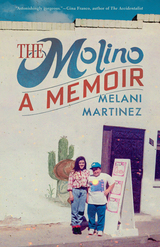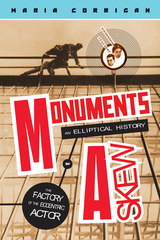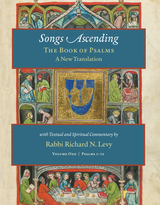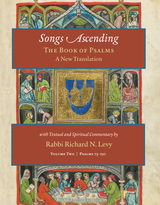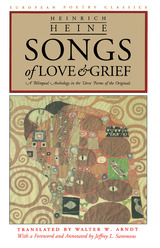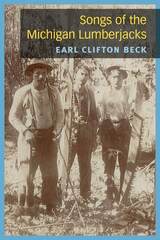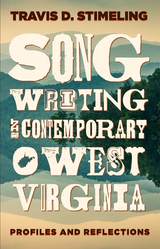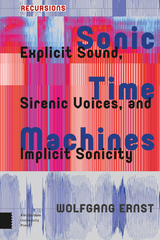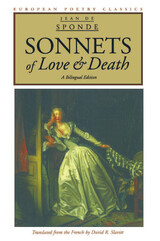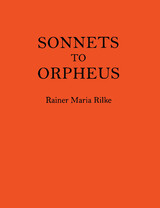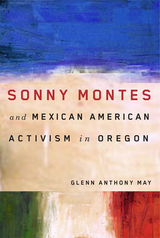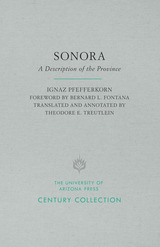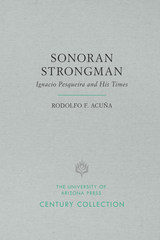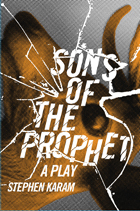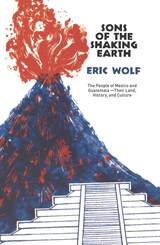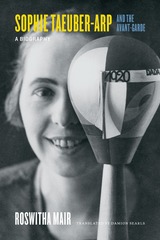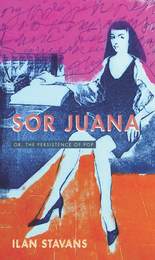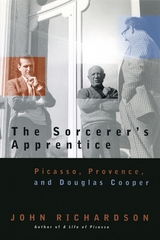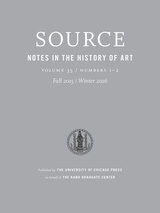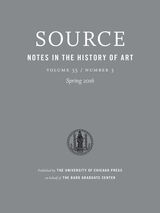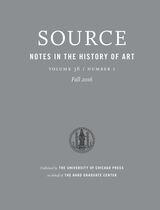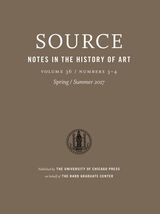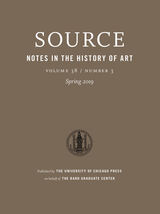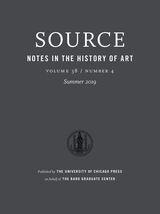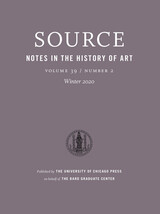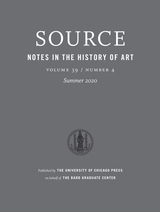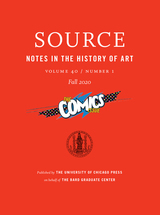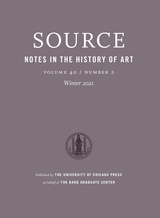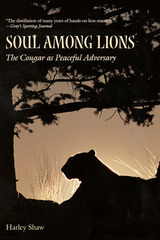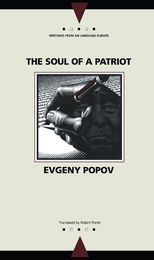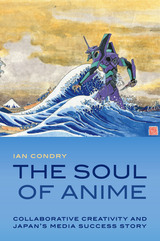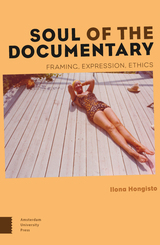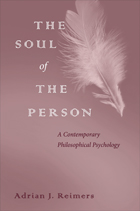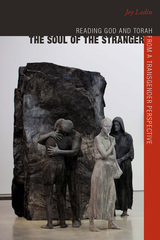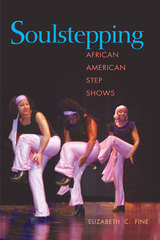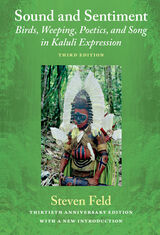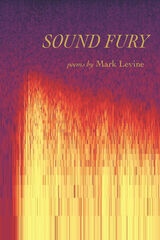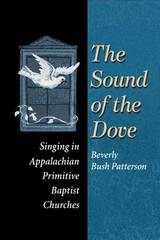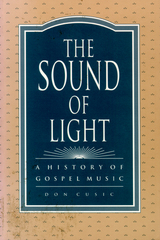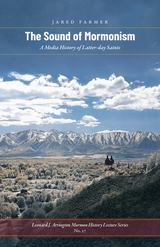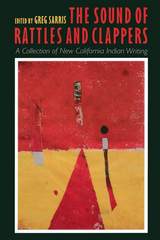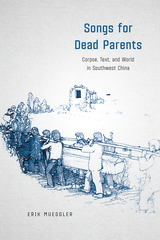 Songs for Dead Parents: Corpse, Text, and World in Southwest China
Erik Mueggler
University of Chicago Press, 2017 In a society that has seen epochal change over a few generations, what remains to hold people together and offer them a sense of continuity and meaning? In Songs for Dead Parents, Erik Mueggler shows how in contemporary China death and the practices surrounding it have become central to maintaining a connection with the world of ancestors, ghosts, and spirits that socialism explicitly disavowed.
Drawing on more than twenty years of fieldwork in a mountain community in Yunnan Province, Songs for Dead Parents shows how people view the dead as both material and immaterial, as effigies replace corpses, tombstones replace effigies, and texts eventually replace tombstones in a long process of disentangling the dead from the shared world of matter and memory. It is through these processes that people envision the cosmological underpinnings of the world and assess the social relations that make up their community. Thus, state interventions aimed at reforming death practices have been deeply consequential, and Mueggler traces the transformations they have wrought and their lasting effects.
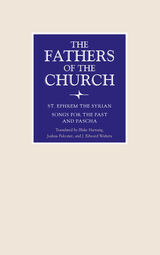 Songs for the Fast and Pascha
St. Ephrem the Syrian
Catholic University of America Press, 2022 Among the writers of the Syriac Christian tradition, none is as renowned as St. Ephrem of Nisibis (ca. 307–373), known to much of the later Christian world simply as “the Syrian.” The great majority of Ephrem’s works are poetry, with the madrāšē (“teaching songs”) especially prominent.
This volume presents English translations of four complete madrāšē cycles of Ephrem: On the Fast, On the Unleavened Bread, On the Crucifixion, and On the Resurrection. These collections include some of the most liturgically oriented songs in Ephrem’s corpus, and, as such, provide a window into the celebration of Lent and Easter in the Syriac-speaking churches of northern Mesopotamia in the fourth century. Even more significantly, they represent some of the oldest surviving poetry composed for these liturgical seasons in the entire Christian tradition. Not only are the liturgical occasions of the springtime months a source of colorful imagery in these texts, but Ephrem also employs traditional motifs of warm weather, spring rainstorms, and revived vegetation, which likely reflect Hellenistic literary influences.
Like all of Ephrem’s poetry, these songs express early Christian theology in language that is symbolic, terse, and vibrant. They are rich with biblical allusions and references, especially to the Exodus and Passion narratives. They also reveal a contested religious environment in which Ephrem strove to promote the Christian Pascha and Christian interpretations of Scripture over and against those of Jewish communities in the region, thus maintaining firm boundaries around the identity and practices of the churches.
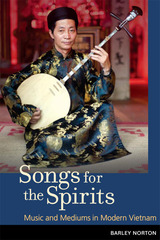 Songs for the Spirits: Music and Mediums in Modern Vietnam
Barley Norton
University of Illinois Press, 2008 Songs for the Spirits examines the Vietnamese practice of communing with spirits through music and performance. During rituals dedicated to a pantheon of indigenous spirits, musicians perform an elaborate sequence of songs--a "songscape"--for possessed mediums who carry out ritual actions, distribute blessed gifts to disciples, and dance to the music's infectious rhythms. Condemned by French authorities in the colonial period and prohibited by the Vietnamese Communist Party in the late 1950s, mediumship practices have undergone a strong resurgence since the early 1990s, and they are now being drawn upon to promote national identity and cultural heritage through folklorized performances of rituals on the national and international stage. By tracing the historical trajectory of traditional music and religion since the early twentieth century, this groundbreaking study offers an intriguing account of the political transformation and modernization of cultural practices over a period of dramatic and often turbulent transition. An accompanying DVD contains numerous video and music extracts that illustrate the fascinating ways in which music evokes the embodied presence of spirits and their gender and ethnic identities.
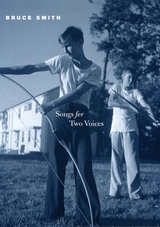 Songs for Two Voices
Bruce Smith
University of Chicago Press, 2004 Part ancient Greek chorus, part Southern Baptist revival, Songs for Two Voices is an explosive showcase for Bruce Smith's jazz-like variations on sonnets and couplets, offering twenty-five duets: poems of call and response, song and countersong. In poems that groove and break, shimmy and dance, Smith filters his Miles Davis-like riffs through a post-World War II American sensibility to deliver verse without platitudes.
As Smith's speakers wander through the detritus of American materialism-encountering jazz, football, drag, class war, Reaganomics, and Vietnam-the poems dramatize the contradictions and peculiarities of growing up male in Cold War America, both sensing promise and suffering disillusion.
Each poem here speaks in two voices: one that attacks and one that cowers, one voice that leads while the other follows. But Smith's subjects are unencumbered by form, and their voices blossom in duet: the idealized lover is also a betrayer, the man is also a girl. These binaries of statement and contradiction give birth to a third voice in the unrealized possibilities of the two.
A mesmerizing follow-up to 2000's The Other Lover, Smith's Songs for Two Voices is carnal yet fiercely intellectual, laid out with the self-confidence of a poet who can invoke Mozart and Coltrane, Anna Akhmatova and John Wayne, Teddy Roosevelt and Augustine in the same incendiary breath.
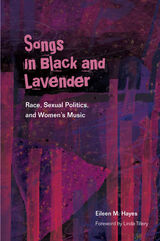 Songs in Black and Lavender: Race, Sexual Politics, and Women's Music
Eileen M. Hayes, Foreword by Linda Tillery
University of Illinois Press, 2010 Drawing on fieldwork conducted at eight women's music festivals, Eileen M. Hayes shows how studying these festivals--attended by predominately white lesbians--provides critical insight into the role of music and lesbian community formation. She argues that the women's music festival is a significant institutional site for the emergence of black feminist consciousness in the contemporary period. Hayes also offers sage perspectives on black women's involvement in the women's music festival scene, the ramifications of their performances as drag kings in those environments, and the challenges and joys of a black lesbian retreat based on the feminist festival model. With acuity and candor, longtime feminist activist Hayes elucidates why this music scene matters. Veteran vocalist, percussionist, producer, and cultural historian Linda Tillery provides a foreword.
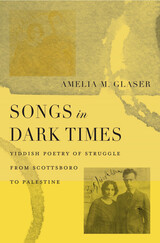 Songs in Dark Times: Yiddish Poetry of Struggle from Scottsboro to Palestine
Amelia M. Glaser
Harvard University Press, 2020 A probing reading of leftist Jewish poets who, during the interwar period, drew on the trauma of pogroms to depict the suffering of other marginalized peoples.
Between the world wars, a generation of Jewish leftist poets reached out to other embattled peoples of the earth—Palestinian Arabs, African Americans, Spanish Republicans—in Yiddish verse. Songs in Dark Times examines the richly layered meanings of this project, grounded in Jewish collective trauma but embracing a global community of the oppressed.
The long 1930s, Amelia M. Glaser proposes, gave rise to a genre of internationalist modernism in which tropes of national collective memory were rewritten as the shared experiences of many national groups. The utopian Jews of Songs in Dark Times effectively globalized the pogroms in a bold and sometimes fraught literary move that asserted continuity with anti-Arab violence and black lynching. As communists and fellow travelers, the writers also sought to integrate particular experiences of suffering into a borderless narrative of class struggle. Glaser resurrects their poems from the pages of forgotten Yiddish communist periodicals, particularly the New York–based Morgn Frayhayt (Morning Freedom) and the Soviet literary journal Royte Velt (Red World). Alongside compelling analysis, Glaser includes her own translations of ten poems previously unavailable in English, including Malka Lee’s “God’s Black Lamb,” Moyshe Nadir’s “Closer,” and Esther Shumiatsher’s “At the Border of China.”
These poets dreamed of a moment when “we” could mean “we workers” rather than “we Jews.” Songs in Dark Times takes on the beauty and difficulty of that dream, in the minds of Yiddish writers who sought to heal the world by translating pain.
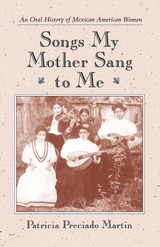 Songs My Mother Sang to Me: An Oral History of Mexican American Women
Patricia Preciado Martin
University of Arizona Press, 1992 Motivated by a love of her Mexican American heritage, Patricia Preciado Martin set out to document the lives and memories of the women of her mother's and grandmother's eras; for while the role of women in Southwest has begun to be chronicled, that of Hispanic women largely remains obscure. In Songs My Mother Sang to Me, she has preserved the oral histories of many of these women before they have been lost or forgotten.
Martin's quest took her to ranches, mining towns, and cities throughout southern Arizona, for she sought to document as varied an experience of the contributions of Mexican American women as possible. The interviews covered family history and genealogy, childhood memories, secular and religious traditions, education, work and leisure, environment and living conditions, rites of passage, and personal values. Each of the ten oral histories reflects not only the spontaneity of the interview and personality of each individual, but also the friendship that grew between Martin and her subjects.
Songs My Mother Sang to Me collects voices not often heard and brings to print accounts of social change never previously recorded. These women document more than the details of their own lives; in relating the histories of their ancestors and communities, they add to our knowledge of the culture and contributions of Mexican American people in the Southwest.
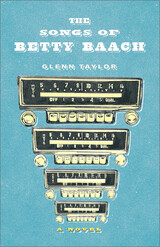 The Songs of Betty Baach
Glenn Taylor
University of Massachusetts Press, 2023 Finalist for the 2023 Weatherford Fiction Award
Some called her the Everywhen Woman. She claimed to be 321 years of age. In 2038, after the big storm and the great flood and the bad times, Betty Baach wrote these words down and sometimes spoke them aloud, at her homeplace on Freon Hill. She referred to them as songs. All stories are songs, she’d always say. Set in West Virginia, The Songs of Betty Baach is a magical guide to resisting despair and a compendium of wisdom and rhythms by which to fortify oneself. The lives of the Baaches of Keystone and the Knoxes of Mosestown twist and connect in a tale of survival and retribution that crosses three centuries—moving from Betty’s girlhood in colonial America to a future warped by environmental collapse and political unrest. Refusing the erasure of the lives of women, Indigenous peoples, and Black people who have always called this region home, this eloquent and distinctive novel is a necessary remedy for the continued distortion of a land and its inhabitants.
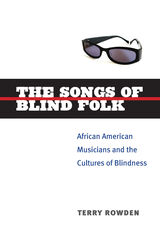 The Songs of Blind Folk: African American Musicians and the Cultures of Blindness
Terry Rowden
University of Michigan Press, 2009 "Rowden has wedded ethnomusicology and disability studies to offer a fresh approach to the study of African American popular music. The Songs of Blind Folk undermines many of the defining mythologies and tropes of blind musicians, including the perception that they are successful because they compensate for the loss of vision."
---Mark Anthony Neal, Duke University "Illuminates how the enduring phenomenon of blind African American musicians emerged from brutal conditions, how these musicians were deployed in the burgeoning American iconography of race and 'freakdom,' and how they negotiated this hazardous cultural terrain . . . the book is timely, well-historicized, and rich in insight."
---Kari Winter, University at Buffalo The Songs of Blind Folk explores the ways that the lives and careers of blind and visually impaired African American musicians and singers have mirrored the changes in America's image of African Americans and the social positioning and possibilities of the entire black community. The book offers a historically grounded consideration of African American performers and their audiences, and the ways that blindness, like blackness, has affected the way the music has been produced and received. Author Terry Rowden considers the controversial nineteenth-century prodigy Blind Tom Bethune; blues singers and songwriters such as Blind Lemon Jefferson, who achieved an unprecedented degree of visibility and acceptance in the 1920s and '30s; spiritual and gospel musicians such as the Blind Boys of Alabama; celebrated jazz and rhythm and blues artists Art Tatum, Rahsaan Roland Kirk, and Ray Charles; and finally, perhaps the best known of all blind performers, Stevie Wonder. Terry Rowden is Assistant Professor of English at the City University of New York, Staten Island. He is coeditor of Transnational Cinema: The Film Reader.
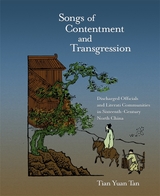 Songs of Contentment and Transgression: Discharged Officials and Literati Communities in Sixteenth-Century North China
Tian Yuan Tan
Harvard University Press, 2010 A discharged official in mid-Ming China faced significant changes in his life. This book explores three such officials in the sixteenth century—Wang Jiusi, Kang Hai, and Li Kaixian—who turned to literary endeavors when forced to retire. Instead of the formal writing expected of scholar-officials, however, they chose to engage in the stigmatized genre of qu (songs), a collective term for drama and sanqu. As their efforts reveal, a disappointing end to an official career and a physical move away from the center led to their embrace of qu and the pursuit of a marginalized literary genre.
This book also attempts to sketch the largely unknown literary landscape of mid-Ming north China. After their retirements, these three writers became cultural leaders in their native regions. Wang, Kang, and Li are studied here not as solitary writers but as central figures in the “qu communities” that formed around them. Using such communities as the basic unit in the study of qu allows us to see how sanqu and drama were produced, transmitted, and “used” among these writers, things less evident when we focus on the individual.
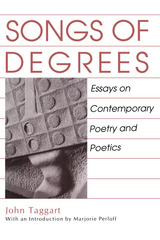 Songs of Degrees: Essays on Contemporary Poetry and Poetics
John Taggart
University of Alabama Press, 1994 Songs of Degrees brings together 19 related essays on contemporary American poetry and poetics, published as journal articles between 1975 and 1989, by poet and theorist John Taggart. Over the past two decades, Taggart has been a significant intellectual and artistic force for a number of major American poets. By focusing on the work of several major and less well-known American experimental poets from the 1930s to the present, Taggart not only traces the origins and evolution of this experimental tendency in recent poetry, but also develops new theoretical tools for reading and appreciating these innovative and complex works. The essays are written from the engaged perspective of an active poet for other poets, as well as for those who would like to read and think about poetry in a participatory fashion. The essays thus present “inside narratives” of some of the most challenging contemporary American poetry.
The range of Songs of Degrees extends from the Black Mountain poets Charles Olson and Robert Duncan to such “language poets as Bruce Andres and Susan Howe. Taggart closely examines the work of the objectivist poets George Oppen and Louis Zukofsky. Three essays are devoted to each of these poets, providing detailed readings of individual poems and considerations of each poet’s overall achievement. Taggart also concentrates on poets whose work has not been widely recognized or is only now beginning to be recognized. These include Theodore Enslin, Frank Samperi, and William Bronk. Taggart’s essay “Reading William Bronk” is the first extensive reading of this relatively unknown but truly outstanding poet. Taggart’s essays also focus on his own poetry. He describes the composition process and the thinking behind it, as well as the poet’s own evolving sense of what the poem can and ought to be. These very personal reflections are unique in their attention to current questions concerning form and the issue of spiritual vision. Avoiding political and cultural reductionism, Taggart throughout keeps his eye—and heart—on the poetic, singing his own “Songs of Degrees,” even as he discovers notes of the same music in the works of other.
 Songs of Liberation in the Netherlands: The Transatlantic Soundtrack of Freedom
Frank Mehring
Amsterdam University Press, 2025 When the Allied Forces arrived in the Netherlands after Operation Market Garden, the country’s long-awaited liberation from National Socialist occupation finally came in the summer of 1945. With freedom reclaimed, a wave of joy and hope swept through the nation, finding its most powerful expression in the stirring liberation songs that resonated across the land. These songs, an evocative transatlantic soundtrack of freedom, captured the spirit of the time through music, lyrics, and dance, celebrating the euphoria of a nation reborn.
Songs of Liberation in the Netherlands: The Transatlantic Soundtrack of Freedom invites readers on an extraordinary journey into this transformative period. Frank Mehring, along with an international team of writers, musicians, and curators, brings to life the vibrant music that accompanied liberation by drawing from the remarkable Hugo Keesing collection at the Freedom Museum in Groesbeek – featuring over 300 rare sheet songs. Now rediscovered, these songs offer a profound connection to the past, inviting us to reimagine the emotional power of music in shaping cultural memory.
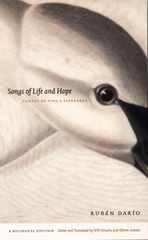 Songs of Life and Hope/Cantos de vida y esperanza
Rubén Darío
Duke University Press, 2004 Renowned for its depth of feeling and musicality, the poetry of Rubén Darío (1867–1916) has been revered by writers including Federico García Lorca, Pablo Neruda, and Octavio Paz. A leading figure in the movement known as modernismo, Darío created the modern Spanish lyric and permanently altered the course of Spanish poetry . Yet while his output has inspired a great deal of critical analysis and a scattering of translations, there has been, until now, no complete English translation of any of his books of poetry. This bilingual edition of Darío’s 1905 masterpiece, Cantos de vida y esperanza, fills a crucial gap in Hispanic and world literature studies. Will Derusha and Alberto Acereda have provided not only an elegant English translation of Darío’s work but also an authoritative version of the original Spanish text. Written over the course of seven years and in many locales in Latin America and Europe, the poems in Cantos de vida y esperanza reflect both Darío’s anguished sense of modern life and his ecstatic visions of transcendence, freedom, and the transformative power of art. They reveal Darío’s familiarity with Spanish, French, and English literature and the wide range of his concerns—existential, religious, erotic, and socio-political. Derusha and Acereda’s translation renders Darío’s themes with meticulous clarity and captures the structural and acoustic dimensions of the poet’s language in all its rhythmic sonority. Their introduction places this singular poet—arguably the greatest to emerge from Latin America in modern literature—and his best and most widely known work in historical and literary context. An extensive glossary offers additional information, explaining terms related to modernismo, Hispanic history, mythological allusions, and artists and writers prominent at the turn of the last century.
 Songs of Ourselves: The Uses of Poetry in America
Joan Shelley Rubin
Harvard University Press, 2007 Listen to a short interview with Joan Shelley RubinHost: Chris Gondek | Producer: Heron & Crane
In the years between 1880 and 1950, Americans recited poetry at family gatherings, school assemblies, church services, camp outings, and civic affairs. As they did so, they invested poems--and the figure of the poet--with the beliefs, values, and emotions that they experienced in those settings.
Reciting a poem together with others joined the individual to the community in a special and memorable way. In a strikingly original and rich portrait of the uses of verse in America, Joan Shelley Rubin shows how the sites and practices of reciting poetry influenced readers' lives and helped them to find meaning in a poet's words.
Emphasizing the cultural circumstances that influenced the production and reception of poets and poetry in this country, Rubin recovers the experiences of ordinary people reading poems in public places. We see the recent immigrant seeking acceptance, the schoolchild eager to be integrated into the class, the mourner sharing grief at a funeral, the grandparent trying to bridge the generation gap--all instances of readers remaking texts to meet social and personal needs. Preserving the moral, romantic, and sentimental legacies of the nineteenth century, the act of reading poems offered cultural continuity, spiritual comfort, and pleasure.
Songs of Ourselves is a unique history of literary texts as lived experience. By blurring the boundaries between "high" and "popular" poetry as well as between modern and traditional, it creates a fuller, more democratic way of studying our poetic language and ourselves.
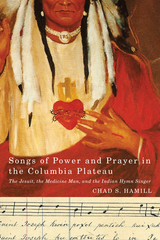 Songs of Power and Prayer in the Columbia Plateau: The Jesuit, the Medicine Man, and the Indian Hymn Singer
Chad S. Hamill
Oregon State University Press, 2012 Songs of Power and Prayer in the Columbia Plateau explores the role of song as a transformative force in the twentieth century, tracing a cultural, spiritual, and musical encounter that upended notions of indigeneity and the rules of engagement for Indians and priests in the Columbia Plateau. In Chad Hamill’s narrative, a Jesuit and his two Indian “grandfathers”—one a medicine man, the other a hymn singer—engage in a collective search for the sacred. The priest becomes a student of the medicine man. The medicine man becomes a Catholic. The Indian hymn singer brings indigenous songs to the Catholic mass. Using song as a thread, these men weave together two worlds previously at odds, realizing a promise born two centuries earlier within the prophecies of Circling Raven and Shining Shirt. Songs of Power and Prayer reveals how song can bridge worlds: between the individual and Spirit, the Jesuits and the Indians. Whether sung in an indigenous ceremony or adapted for Catholic Indian services, song abides as a force that strengthens Native identity and acts as a conduit for power and prayer. A First Peoples: New Directions in Indigenous Studies book
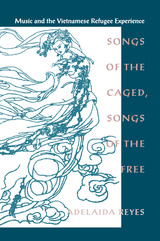 Songs of the Caged, Songs of the Free: Music and the Vietnamese Refugee Experience
Adelaida Reyes
Temple University Press, 1999 Sad songs and love songs. For Vietnamese refugees who fled Vietnam after the 1975 takeover by the Viet Cong, the predominant music of choice falls into these two general categories rather than any particular musical genre. In fact, Adelaida Reyes discovers, music that exiles call "Vietnamese music" -- that is, music sung in Vietnamese and almost exclusively written before 1975 -- includes such varied influences as Western rock, French-derived valse, Latin chacha, tango, bolero, an d paso doble.
The Vietnamese refugee experience calls attention to issues commonly raised by migration: the redefinition of group relations, the reformulation of identity, and the reconstruction of social and musical life in resettlement. Fifteen years ago, Adelaida Reyes began doing fieldwork on the musical activities of Vietnamese refugees. She entered the emotion-driven world of forced migrants through expressive culture; learned to see the lives of refugee-resettlers through the music they made and enjoyed; and, in turn, gained a deeper understanding of their music through knowledge of their lives.
In Songs of the Caged, Songs of the Free, Reyes brings history, politics, and decades of research to her study of four resettlement communities, including refugee centers in Palawan and Bataan; the early refugee community in New Jersey; and the largest of all Vietnamese communities -- Little Saigon, in southern California's Orange County.
Looking closely at diasporic Vietnamese in each location, Reyes demonstrates that expressive culture provides a valuable window into the refugee experience. Showing that Vietnamese immigrants deal with more than simply a new country and culture in these communities, Reyes considers such issues as ethnicity, socio-economic class, and differing generations. She considers in her study music of all kinds -- performed and recorded, public and private -- and looks at music as listened to and performed by all age groups, including church music, club music, and music used in cultural festivals. Moving from traditional folk music to elite and modern music and from the recording industry to pirated tapes. Reyes looks at how Vietnamese in exile struggled, in different ways, to hold onto a part of their home culture and to assimilate into their new, most frequently American, culture.
Songs of the Caged, Songs of the Free will attract the attention of readers in Asian American studies, Asian studies, music, and ethnomusicology.
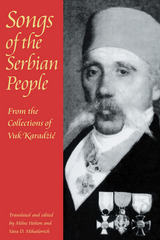 Songs of the Serbian People: From the Collections of Vuk Karadzic
Milne Holton
University of Pittsburgh Press, 1997
In the early nineteenth century, Vuk Karadzic, a Serb scholar and linguist, collected and eventually published transcriptions of the traditional oral poetry of the South Slavs. It was a monumental and unprecedented undertaking. Karadzic gathered and heard performances of the rich songs of Balkan peasants, outlaws, and professional singers and their rebel heroes. His four volumes constitute the classic anthology of Balkan oral poetry, treasured for nearly two centuries by readers of all literatures, and influential to such literary giants as Goethe, Merimee, Pushkin, Mickiewicz, and Sir Walter Scott.
This edition of the songs offers the most complete and authoritative translations ever assembled in English. Holton and Mihailovich, leading scholars of Slavic literature, have preserved here the unique meter and rhythm at the heart of Serbian oral poetry, as well as the idiom of the original singers. Extensive notes and comments aid the reader in understanding the poems, the history they record and the oral tradition that lies beneath them, the singers and their audience.
The songs contain seven cycles, identified here in sections titled: Songs Before History, Before Kosovo, the Battle of Kosovo, Marko Karadzic, Under the Turks, Songs of the Outlaws, and Songs of the Serbian Insurrection. The editors have selected the best known and most representative songs from each of the cycles. A complete biography is also provided.
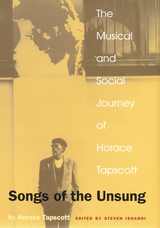 Songs of the Unsung: The Musical and Social Journey of Horace Tapscott
Horace Tapscott
Duke University Press, 2001 Despite his importance and influence, jazz musician, educator, and community leader Horace Tapscott remains relatively unknown to most Americans. In Songs of the Unsung Tapscott shares his life story, recalling his childhood in Houston, moving with his family to Los Angeles in 1943, learning music, and his early professional career. He describes forming the Pan Afrikan Peoples Arkestra in 1961 and later the Union of God's Musicians and Artists Ascension to preserve African American music and serve the community. Tapscott also recounts his interactions with the Black Panthers and law enforcement, the Watts riots, his work in Hollywood movie studios, and stories about his famous musician-activist friends. Songs of the Unsung is the captivating story of one of America’s most unassuming heroes as well as the story of L.A.'s cultural and political evolution over the last half of the twentieth century.
 Songs, Roars, and Rituals: Communication in Birds, Mammals, and Other Animals
Lesley J. Rogers and Gisela Kaplan
Harvard University Press, 2000 From the calling macaw and the roaring lion to the dancing lyrebird, animals all around us can be heard and seen communicating with each other and, occasionally, with us. Why they do so, what their utterances mean, and how much we know about them are the subject of Songs, Roars, and Rituals. This is a concise, yet comprehensive, introduction to the complexities of communication in animals.
Rogers and Kaplan take us on an exciting journey through communication in the animal world, offering insights on how animals communicate by sight, sound, smell, touch, and even electrical signaling. They explore a wide variety of communication patterns in many species of mammals and birds and discuss in detail how communication signals evolved, how they are learned, and what song and mimicry may mean.
An up-to-date account of the science of animal communication, this book also considers modern concepts (such as that of deceptive communication) and modern controversies, primarily those surrounding the evolution of human language and the use of symbolic language by apes. It concludes with a thought-provoking look at the future of communication between humans and animals.
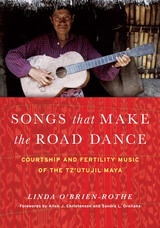 Songs that Make the Road Dance: Courtship and Fertility Music of the Tz'utujil Maya
By Linda O'Brien-Rothe
University of Texas Press, 2015 An important and previously unexplored body of esoteric ritual songs of the Tz’utujil Maya of Santiago Atitlán, Guatemala, the “Songs of the Old Ones” are a central vehicle for the transmission of cultural norms of behavior and beliefs within this group of highland Maya. Ethnomusicologist Linda O’Brien-Rothe began collecting these songs in 1966, and she has amassed the largest, and perhaps the only significant, collection that documents this nearly lost element of highland Maya ritual life. This book presents a representative selection of the more than ninety songs in O’Brien-Rothe’s collection, including musical transcriptions and over two thousand lines presented in Tz’utujil and English translation. (Audio files of the songs can be downloaded from the UT Press website.) Using the words of the “songmen” who perform them, O’Brien-Rothe explores how the songs are intended to move the “Old Ones”—the ancestors or Nawals—to favor the people and cause the earth to labor and bring forth corn. She discusses how the songs give new insights into the complex meaning of dance in Maya cosmology, as well as how they employ poetic devices and designs that place them within the tradition of K’iche’an literature, of which they are an oral form. O’Brien-Rothe identifies continuities between the songs and the K’iche’an origin myth, the Popol Vuh, while also tracing their composition to the late sixteenth and early seventeenth centuries by their similarities with the early chaconas that were played on the Spanish guitarra española, which survives in Santiago Atitlán as a five-string guitar.
Songwriting in Contemporary West Virginia: Profiles and Reflections
Travis D. Stimeling
West Virginia University Press, 2018 Songwriting in Contemporary West Virginia: Profiles and Reflections is the first book dedicated to telling the stories of West Virginia’s extensive community of songwriters. Based on oral histories conducted by Stimeling and told largely in the songwriters’ own words, these profiles offer a lively overview of the personalities, venues, and networks that nurture and sustain popular music in West Virginia.
Stimeling is attentive to breadth and diversity, presenting sketches of established personalities like Larry Groce, who oversees Mountain Stage, and emerging musicians like Maria Allison, who dreams of one day performing there. Each profile includes a brief selected discography to guide readers to recordings of these musicians’ work.
 The Song-Yuan-Ming Transition in Chinese History
Paul Jakov Smith
Harvard University Press, 2003 This volume seeks to study the connections between two well-studied epochs in Chinese history: the mid-imperial era of the Tang and Song (ca. 800-1270) and the late imperial era of the late Ming and Qing (1550-1900). Both eras are seen as periods of explosive change, particularly in economic activity, characterized by the emergence of new forms of social organization and a dramatic expansion in knowledge and culture. The task of establishing links between these two periods has been impeded by a lack of knowledge of the intervening Mongol Yuan dynasty (1271-1368). This historiographical "black hole" has artificially interrupted the narrative of Chinese history and bifurcated it into two distinct epochs.
This volume aims to restore continuity to that historical narrative by filling the gap between mid-imperial and late imperial China. The contributors argue that the Song-Yuan-Ming transition (early twelfth through the late fifteenth century) constitutes a distinct historical period of transition and not one of interruption and devolution. They trace this transition by investigating such subjects as contemporary impressions of the period, the role of the Mongols in intellectual life, the economy of Jiangnan, urban growth, neo-Confucianism and local society, commercial publishing, comic drama, and medical learning.
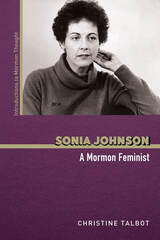 Sonia Johnson: A Mormon Feminist
Christine Talbot
University of Illinois Press, 2024 Few figures in the history of the Church of Jesus Christ of Latter-day Saints provoke such visceral responses as Sonia Johnson. Her unrelenting public support of the Equal Rights Amendment (ERA) made her the face of LDS feminism while her subsequent excommunication roiled the faith community. Christine Talbot tells the story of Sonia’s historic confrontation with the Church within the context of the faith’s first large-scale engagement with the feminist movement. A typical if well-educated Latter-day Saints homemaker, Sonia was moved to action by the all-male LDS leadership’s opposition to the ERA and a belief the Church should stay out of politics. Talbot uses the activist’s experiences and criticisms to explore the ways Sonia’s ideas and situation sparked critical questions about LDS thought, culture, and belief. She also illuminates how Sonia’s excommunication shaped LDS feminism, the Church’s antagonism to feminist critiques, and the Church itself in the years to come. A revealing and long-overdue account, Sonia Johnson explores the life, work, and impact of the LDS feminist.
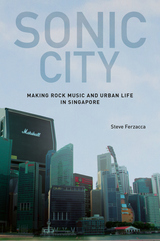 Sonic City: Making Rock Music and Urban Life in Singapore
Steve Ferzacca
National University of Singapore Press, 2020 The basement of a veteran shopping mall located in the central business district of Singapore affords opportunities to a group of amateur and semi-professional musicians, of different ethnicities, ages, and generations to make a sonic way of life. Based on five years of deep participatory experience, this multi-modal (text, musical composition, social media, performance) sonic ethnography is centered around a community of noisy people who make rock music within the constraints of urban life in Singapore. The heart and soul of this community is English Language rock and roll music pioneered in Singapore by several members of the 1960s legendary “beats and blues” band, The Straydogs, who continue to engage this community in a sonic way of life.
Grounded in debates from sound studies, Ferzacca draws on Bruno Latour’s ideas of the social—continually emergent, constantly in-the-making, “associations of heterogeneous elements” of human and non-human “mediators and intermediaries”—to portray a community entangled in the confounding relations between vernacular and national heritage projects. Music shops, music gear, music genres, sound, urban space, neighborhoods, State presence, performance venues, practice spaces, regional travel, local, national, regional, and sonic histories afford expected and unexpected opportunities for work, play, and meaning, in the contemporary music scene in this Southeast Asian city-state. The emergent quality of this deep sound is fiercely cosmopolitan, yet entirely Singaporean. What emerges is a vernacular heritage drawing upon Singapore’s unique place in Southeast Asian and world history.
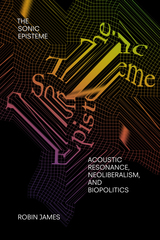 The Sonic Episteme: Acoustic Resonance, Neoliberalism, and Biopolitics
Robin James
Duke University Press, 2019 In The Sonic Episteme Robin James examines how twenty-first-century conceptions of sound as acoustic resonance shape notions of the social world, personhood, and materiality in ways that support white supremacist capitalist patriarchy. Drawing on fields ranging from philosophy and sound studies to black feminist studies and musicology, James shows how what she calls the sonic episteme—a set of sound-based rules that qualitatively structure social practices in much the same way that neoliberalism uses statistics—employs a politics of exception to maintain hegemonic neoliberal and biopolitical projects. Where James sees the normcore averageness of Taylor Swift and Spandau Ballet as contributing to the sonic episteme's marginalization of nonnormative conceptions of gender, race, and personhood, the black feminist political ontologies she identifies in Beyoncé's and Rihanna's music challenge such marginalization. In using sound to theorize political ontology, subjectivity, and power, James argues for the further articulation of sonic practices that avoid contributing to the systemic relations of domination that biopolitical neoliberalism creates and polices.
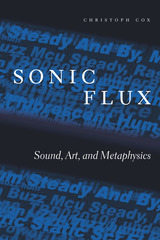 Sonic Flux: Sound, Art, and Metaphysics
Christoph Cox
University of Chicago Press, 2018 From Edison’s invention of the phonograph through contemporary field recording and sound installation, artists have become attracted to those domains against which music has always defined itself: noise, silence, and environmental sound. Christoph Cox argues that these developments in the sonic arts are not only aesthetically but also philosophically significant, revealing sound to be a continuous material flow to which human expressions contribute but which precedes and exceeds those expressions. Cox shows how, over the course of the twentieth and twenty-first centuries, philosophers and sonic artists have explored this “sonic flux.”
Through the philosophical analysis of works by John Cage, Maryanne Amacher, Max Neuhaus, Christian Marclay, and many others, Sonic Flux contributes to the development of a materialist metaphysics and poses a challenge to the prevailing positions in cultural theory, proposing a realist and materialist aesthetics able to account not only for sonic art but for artistic production in general.
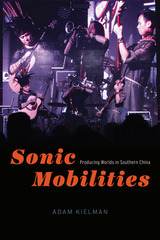 Sonic Mobilities: Producing Worlds in Southern China
Adam Kielman
University of Chicago Press, 2022 A fascinating look at how the popular musical culture of Guangzhou expresses the city’s unique cosmopolitanism.
Guangzhou is a large Chinese city like many others. With a booming economy and abundant job opportunities, it has become a magnet for rural citizens seeking better job prospects as well as global corporations hoping to gain a foothold in one of the world’s largest economies. This openness and energy have led to a thriving popular music scene that is every bit the equal of Beijing’s. But the musical culture of Guangzhou expresses the city’s unique cosmopolitanism. A port city that once played a key role in China’s maritime Silk Road, Guangzhou has long been an international hub. Now, new migrants to the city are incorporating diverse Chinese folk traditions into the musical tapestry.
In Sonic Mobilities, ethnomusicologist Adam Kielman takes a deep dive into Guangzhou's music scene through two bands, Wanju Chuanzhang (Toy Captain) and Mabang (Caravan), that express ties to their rural homelands and small-town roots while forging new cosmopolitan musical connections. These bands make music that captures the intersection of the global and local that has come to define Guangzhou, for example by writing songs with a popular Jamaican reggae beat and lyrics in their distinct regional dialects mostly incomprehensible to their audiences. These bands create a sound both instantly recognizable and totally foreign, international and hyper-local. This juxtaposition, Kielman argues, is an apt expression of the demographic, geographic, and political shifts underway in Guangzhou and across the country. Bridging ethnomusicology, popular music studies, cultural geography, and media studies, Kielman examines the cultural dimensions of shifts in conceptualizations of self, space, publics, and state in a rapidly transforming the People’s Republic of China.
Sonic Multiplicities: Hong Kong Pop and the Global Circulation of Sound and Image
Yiu Fai Chow and Jeroen de Kloet
Intellect Books, 2013 Through the lens of popular music in and from Hong Kong, Sonic Multiplicities examines the material, ideological, and geopolitical implications of music production and consumption. Yiu Fai Chow and Jeroen de Kloet draw on rich empirical research and industry experience to trace the worldwide flow of popular culture and the people who produce and consume it. In doing so, the authors make a significant contribution to our understanding of the political and social roles such circulation plays in today’s world—and in a city under cultural threat in a country whose prominence is on the rise. Just as important, they clear a new path for the study of popular music.
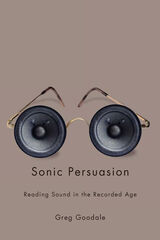 Sonic Persuasion: Reading Sound in the Recorded Age
Greg Goodale
University of Illinois Press, 2011 Sonic Persuasion: Reading Sound in the Recorded Age critically analyzes a range of sounds on vocal and musical recordings, on the radio, in film, and in cartoons to show how sounds are used to persuade in subtle ways. Greg Goodale explains how and to what effect sounds can be "read" like an aural text, demonstrating this method by examining important audio cues such as dialect, pausing, and accent in presidential recordings at the turn of the twentieth century. Goodale also shows how clocks, locomotives, and machinery are utilized in film and literature to represent frustration and anxiety about modernity, and how race and other forms of identity came to be represented by sound during the interwar period. In highlighting common sounds of industry and war in popular media, Sonic Persuasion also demonstrates how programming producers and governmental agencies employed sound to evoke a sense of fear in listeners. Goodale provides important links to other senses, especially the visual, to give fuller meaning to interpretations of identity, culture, and history in sound.
Sonic Signatures: Music, Migration and the City at Night
Edited by Derek Pardue, Ailbhe Kenny, and Katie Young
Intellect Books, 2023 An anthology that evokes the music, residents, and vibrant nightlife of migrants in cities around the world.
Sonic Signatures interprets the music of contemporary migrants from Montreal to Rotterdam, Oslo to Tokyo. Drawing on research in urban musicology, international migration, and the emerging field of night studies, this edited volume illustrates that sonic signatures are fundamental to nighttime cityscapes, a way of experiencing space and belonging. Contributors to the anthology consider a wide array of genres—including EDM, batida do gueto, and iSicathamiya—to understand how migrants resist oppression, long for people and places, and shape their adopted cities through music.
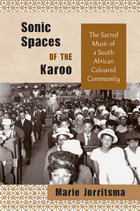 Sonic Spaces of the Karoo: The Sacred Music of a South African Coloured Community
Marie Jorritsma
Temple University Press, 2011 Sonic Spaces of the Karoo is a pioneering study of the sacred music of three coloured (the apartheid designation for people "not white or native") people's church congregations in the rural town of Graaff-Reinet, South Africa. Jorritsma's fieldwork involves an investigation of the choruses, choir music, and hymns of the Karoo region to present a history of the people's traditional, religious, and cultural identity in song. This music is examined as part of a living archive preserved by the community in the face of a legacy of slavery and colonial as well as apartheid oppression. Jorritsma's findings counteract a lingering stereotype that coloured music is inferior to European or African music and that coloured people should not or do not have a cultural identity. Sonic Spaces of the Karoo seeks to eradicate that bias and articulate a more legitimate place for these people in the contemporary landscape of South Africa.
 Sonic Strategies: Performing Mexico's War on Drugs, Mourning, and Feminicide
Christina Baker
Vanderbilt University Press, 2023 Winner of the Marcia Herndon Prize (Gender and Sexualities Studies Section), Society for Ethnomusicology, 2024
In Sonic Strategies, author Christina Baker highlights the tactics employed by contemporary performance artists in Mexico in response to the violence surrounding the nation’s War on Drugs. The introduction opens with a description of the 2007 reenactment of the Grito, or “cry,” of independence, a moment fraught with sonic sparring, setting the stage for how each subsequent chapter focuses on themes related to war and violence. Each chapter focuses on the works of one or more performance artist, and taken together, the case studies illuminate how critiques of the nation’s rising death tolls, governmental corruption, and gendered violence very literally sound, whether in Música de balas, a post-dramatic piece by Hugo Salcedo; the lamentations of the nation’s Antigones in works by Violeta Luna and Lukas Avendaño; satirical revisions of Mexican Golden Age film in the cabaret piece Nosotras las proles; or the story of transfeminicide in César Enríquez’s La Prietty Guoman by way of US pop music.
Written in an accessible style grounded in theater studies but interdisciplinary by design, Sonic Strategies will appeal to literary critics, students, musicologists, and theater and performance scholars alike. By paying close attention to planned and spontaneous sounds within live and textual experiences, Sonic Strategies contends that conscientious listening reveals dynamic practices that reside beyond the linguistic and embodied gesture.
Sonic Time Machines: Explicit Sound, Sirenic Voices, and Implicit Sonicity
Wolfgang Ernst
Amsterdam University Press, 2016 Our studies of aesthetics and knowledge have long tended to privilege the visual - at the expense, Wolfgang Ernst argues, of the aural. Sonic Time Machines aims to correct that, presenting a striking new approach to theorising sound that investigates its split existence: as a temporal effect in a techno-cultural context and as a source of knowledge and information. Ernst creates a new term for the concept at the heart of the book, "sonicity," a flexible and powerful term that allows him to consider sound with all its many physical, philosophical, and cultural valences.
 Sonido y sentido: Teoría y práctica de la pronunciación del español con audio
Jorge M. Guitart
Georgetown University Press, 2004 Sonido y sentido lifts the learning of Spanish pronunciation for American English-speaking students to a new level, with support of an accompanying CD. Written in Spanish by a native speaker who is a leading figure in the field of Spanish phonology, this introduction to Spanish phonetics and phonology will improve both the pronunciation and understanding of spoken Spanish by demonstrating the specific ways in which the sound pattern of Spanish differs from English. Notable in that it explains the "why" of pronunciation with specific information on how the sounds of Spanish are organized—it also highlights the most important differences among varieties within the Spanish-speaking world. Together, the book and CD emphasize the sounds and sound combinations that are most problematic for English speakers learning Spanish. In addition to a clear theoretical analysis of Spanish phonology, Sonido y sentido introduces the fundamental concepts of language, Spanish language, and the teaching and learning of phonetics—Spanish phonetics in particular. Utilizing the International Phonetic Alphabet (IPA) throughout the text to make for more precise phonetic descriptions, Guitart also discusses the relation between both the physical and psychological aspects of pronunciation. Sonido y sentido contains exercises, both transcription and pronunciation drills, and each chapter concludes with a section, "Para pensar," which tests comprehension of the concepts presented. Answers to the "Para pensar" exercises appear in a separate appendix. A glossary of technical terms, a subject index, and a basic bibliography of Spanish phonetics and phonology round out this fresh and rewarding contribution to learning the Spanish language.
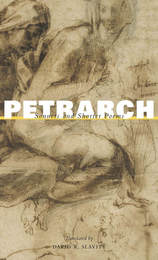 Sonnets and Shorter Poems
Francesco Petrarch
Harvard University Press, 2012 In this volume, David R. Slavitt, the distinguished translator and author of more than one hundred works of fiction, poetry, and drama, turns his skills to Il Canzoniere (Songbook) by Petrarch, the most influential poet in the history of the sonnet. In Petrarch’s hands, lyric verse was transformed from an expression of courtly devotion into a way of conversing with one’s own heart and mind. Slavitt renders the sonnets in Il Canzoniere, along with the shorter madrigals and ballate, in a sparkling and engaging idiom and in rhythm and rhyme that do justice to Petrarch’s achievement.
At the center of Il Canzoniere (also known as Rime Sparse, or Scattered Rhymes) is Petrarch’s obsessive love for Laura, a woman Petrarch asserts he first saw at Easter Mass on April 6, 1327, in the church of Sainte-Claire d’Avignon when he was twenty-two. Though Laura was already married, the sight of her woke in the poet a passion that would last beyond her premature death on April 6, 1348, exactly twenty-one years after he first encountered her. Unlike Dante’s Beatrice—a savior leading the poet by the hand toward divine love—Petrarch’s Laura elicits more earthbound and erotic feelings. David Slavitt’s deft new translation captures the nuanced tone of Petrarch’s poems—their joy and despair, and eventually their grief over Laura’s death. Readers of poetry and especially those with an interest in the sonnet and its history will welcome this volume.
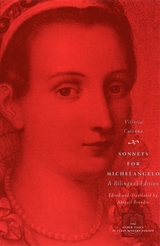 Sonnets for Michelangelo: A Bilingual Edition
Vittoria Colonna
University of Chicago Press, 2005 The most published and lauded woman writer of early sixteenth-century Italy, Vittoria Colonna (1490–1547) in effect defined what was the "acceptable" face of female authorship for her time. Hailed by the generation's leading male literati as an equal, she was praised both for her impeccable command of Petrarchan style and for the unimpeachable chastity and piety of the persona she promoted through her literary works.
This book presents for the very first time a body of Colonna's verse that reveals much about her poetic aims and outlook, while also casting new light on one of the most famous friendships of the age. Sonnets for Michelangelo, originally presented in manuscript form to her close friend Michelangelo Buonarroti as a personal gift, illustrates the striking beauty and originality of Colonna's mature lyric voice and distinguishes her as a poetic innovator who would be widely imitated by female writers in Italy and Europe in the sixteenth century. After three centuries of relative neglect, this new edition promises to restore Colonna to her rightful place at the forefront of female cultural production in the Renaissance.
Sonnets of Love and Death
Jean De Sponde
Northwestern University Press, 2001 This bilingual edition introduces readers to the sixteenth century poet Jean de Sponde, considered one of the most important poets of the Renaissance period and a precursor to Donne, in his poetry Sponde reflects the tensions–both stylistic and philosophical-of his time. This collection of sonnets, abounding in metaphor, paradox, antithesis, and hyperbole, is a restless personal exploration of the body and the spirit, of the concrete and the abstract, of passion and anguish.
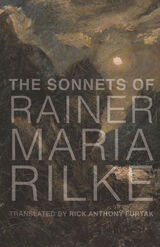 The Sonnets of Rainer Maria Rilke
Rainer Maria Rilke
St. Augustine's Press, 2021 Romano Guardini described Rainer Maria Rilke as the “poet who had things of such importance to say about the end of our own age [and] was also a prophet of things to come.” The complexity of Rilke is, then, “highly relevant to modern Man.” Decades after Guardini’s assessment, the reader who rediscovers Rilke will find a depth of mind and soul that display a profundity the post-modern reader only thinks he possesses.
In an expanded collection of Rilke’s sonnets, Rick Anthony Furtak not only makes this lyrical masterpiece accessible to the English reader, but he proves himself a master of sorts as well. His introduction that elaborates on Rilke’s marriage of vision and voice, intention and enigma, haunted companionship and abandonment is a stand-alone marvel for the reader. Furtak’s praised translation of Sonnets to Orpheus (University of Chicago Press, 2008) is surpassed in this much broader collection of verse that also includes the original German text. It is Furtak’s great achievement that Rilke resonates with the contemporary reader, who uncertain and searching wants to believe that the vision of existence can mirror much more than his own consciousness. In his feat of rendering Rilke in English, contextualizing the philosophical meanings of verse, and presenting literary romanticism, Furtak provides a formidable contribution to the vindication of true poetic voice.
Sonnets to Orpheus
Rainer Maria Rilke
University of Scranton Press, 2007 Rainer Maria Rilke’s Sonnets to Orpheus, first published in German in 1923, has been hailed by critics as some of the finest lyrical verse of the twentieth century. Rick Anthony Furtak’s translation of this legendary collection is the first edition for an English-speaking audience to situate the poems in a philosophical context, lending unexpected depth and a fresh perspective to Rilke’s magnum opus.
Furtak’s rich translations skillfully evoke the haunting, enigmatic nature of these poems that bridge the gap between the romantic and the modern, as his introduction guides the reader through the abundant mystical and spiritual insights to be found in Rilke’s sonnets. This new edition of a literary masterpiece will be essential reading for anyone interested in the philosophical implications of verse.
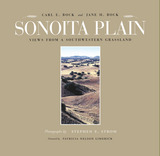 Sonoita Plain: Views from a Southwestern Grassland
Carl E. Bock and Jane H. Bock; Photographs by Stephen E. Strom; Foreword by Patricia Nelson Limerick
University of Arizona Press, 2005 Far to the south of Arizona’s sprawling metropolises, a rolling savanna of grass, oak, and mesquite rises above the surrounding deserts. The Sonoita Plain is a basin of a thousand square miles bracketed by mountains, a land once the domain of cowboys that is now more and more the focus of exurban development. These southwestern grasslands are both typical of and distinct from those of the Great Plains—similarly shaped by drought, grazing, and fire, but with a different flora and fauna, and the product of a different human history.
The Appleton-Whittell Research Ranch is a tract of 8,000 acres on the Sonoita Plain that was established in 1968 by the Appleton family and that is now part of the sanctuary system of the National Audubon Society. To all appearances, it is an ordinary piece of land, but for the last 35 years it has been treated in an extraordinary way—by leaving it alone. No grazing to influence grass production. No dam building to hold back flash floods. No pest control. No fire-fighting. By employing such non-action, might we gain a glimpse of what this land was like hundreds, even thousands, of years ago?
Through essays and photographs focusing on the Sanctuary and surrounding area, this book reveals the complex ecology and unique aesthetics of its grasslands and savannas. Carl and Jane Bock and Stephen Strom share a passion for the remarkable beauty found here, and in their book they describe its environment, biodiversity, and human history. People have dominated the world’s grasslands and savannas for so long that today we have no clear idea what these lands might be like without us. By understanding the lessons of the Sonoita Plain, we might gain such insight—and, more important, discover approaches to protecting the very things that attract us to such lands in the first place.
Sonora: A Description of the Province
Ignaz Pfefferkorn; Foreword by Bernard L. Fontana; Translated and Annotated by Theodore E. Treutlein
University of Arizona Press, 1989 "The bloodsucking bat, construction of bows and arrows, the punishment for adultery among the Apaches... all was grist that dropped into the industrious mill of Father Pfefferkorn's eyes, ears, and brain."—Saturday Review
"To be read for enjoyment; nevertheless, the historian will find in it a wealth of information that has been shrewdly appraised, carefully sifted, and creditably related."—Catholic Historical Review
"Of interest not only to the historian but to the geographer and anthropologist."—Pacific Historical Review
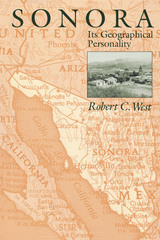 Sonora: Its Geographical Personality
By Robert C. West
University of Texas Press, 1993 A land where some streams ran with gold. A landscape nearly empty of inhabitants in the wake of Apache raids from the north. And a former desert transformed by irrigation into vast fields of wheat and cotton. This was and is the state of Sonora in northwest Mexico. In this cultural historical geography, Robert C. West explores the dual geographic "personality" of this part of Mexico's northern frontier. Utilizing the idea of "old" and "new" landscapes, he describes two Sonoras—to the east, a semiarid to subhumid mountainous region that reached its peak of development in the colonial era and still lives largely in its colonial past; and, to the west, a desert region that in the twentieth century has become a major agricultural producer and the modern center of economic and cultural activity. After a description of the physical and biotic aspects of Sonora, West describes the aboriginal farming cultures that inhabited eastern Sonora before the Spanish conquest. Following the conquest, he traces the spread of Jesuit missions and Spanish mining and ranching communities into this land where gold, silver, and copper ores were easily extracted by surface mining. He charts the decline of eastern Sonora with the coming of Apache and Seri raids during the eighteenth and nineteenth centuries. And he shows how western Sonora has become one of Mexico's most powerful political and economic entities in the twentieth century. For geographers, historians, anthropologists, and economists, as well as travelers to Sonora and its coastal resorts, this lively and interesting book will be important reading.
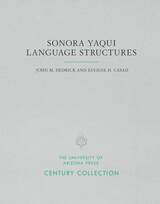 Sonora Yaqui Language Structures
John M. Dedrick and Eugene H. Casad
University of Arizona Press, 1999 Yaqui is a Southern Uto-Aztecan language spoken by a people living predominantly in Sonora, with some communities in Arizona. This comprehensive reference on the Sonoran Yaqui language is a descriptive grammar that covers topics on phonology, word classes, verb structure, and complex sentences. John M. Dedrick, who lived and worked among the Yaquis for more than thirty years, shares his extensive knowledge of the language, while Uto-Aztecan specialist Eugene H. Casad helps put the material in a comparative perspective.
The book includes useful sections on quantifiers and adverbial and deictic particles, often inadequately treated in reference grammars. A section on auxiliary verbs and well-documented information on voice, aspect, and other features of verbal inflection provide readers with useful data for particular lines of linguistic inquiry. Each grammatical point is illustrated by example sentences distinguished by their naturalness and cultural relevance. At the end of the book, a Yaqui text provides a sample of connected sentences in a natural context.
Sonora Yaqui Language Structures is a valuable source not only for research on this language family but also for anthropological studies of the Arizona-Sonora cultural region. In addition, it documents an indigenous language for future generations of Yaqui speakers.
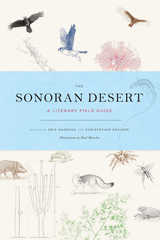 The Sonoran Desert: A Literary Field Guide
Edited by Eric Magrane and Christopher Cokinos, Illustrations by Paul Mirocha
University of Arizona Press, 2016 A land of austerity and bounty, the Sonoran Desert is a place that captures imaginations and hearts. It is a place where barbs snag, thorns prick, and claws scratch. A place where lizards scramble and pause, hawks hunt like wolves, and bobcats skulk in creosote.
Both literary anthology and hands-on field guide, The Sonoran Desert is a groundbreaking book that melds art and science. It captures the stunning biodiversity of the world’s most verdant desert through words and images. More than fifty poets and writers—including Christopher Cokinos, Alison Hawthorne Deming, Ken Lamberton, Eric Magrane, Jane Miller, Gary Paul Nabhan, Alberto Ríos, Ofelia Zepeda, and many others—have composed responses to key species of this striking desert. Each creative contribution is joined by an illustration by award-winning artist Paul Mirocha and scientific information about the creature or plant authored by the book’s editors.
From the saguaro to the mountain lion, from the black-tailed jackrabbit to the mesquite, the species represented here have evoked compelling and creative responses from each contributor. Just as writers such as Edward Abbey and Ellen Meloy have memorialized the desert, this collection is sure to become a new classic, offering up the next generation of voices of this special and beautiful place, the Sonoran Desert.
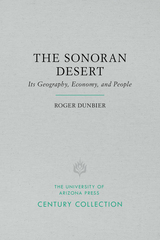 The Sonoran Desert: Its Geography, Economy, and People
Roger Dunbier
University of Arizona Press, 1968 Although possessing a common physical heritage, the Sonoran Desert has taken on highly contrasting forms in its American and Mexican portions. This work does not, therefore, attempt a regional study in the usual sense of the term, but is rather an examination of disparate economic development, much influenced by contrasting technological achievements as well as the accidents of history.
Although the significance of geographic regionalism is implicit throughout this study, no attempt is made to show any overriding unity at work, geographical or otherwise, welding together a "desert region." Instead the desert acts as a stage for social drama in which drought and extreme heat provide the essential backcloth. The scarcity of water and man's inability to grow crops without irrigation have not, indeed, changed with time, and only constant reference to this immutable factor can give meaning to the evolution of human activities within the desert.
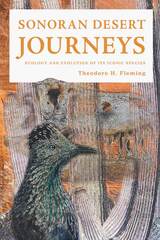 Sonoran Desert Journeys: Ecology and Evolution of Its Iconic Species
Theodore H. Fleming
University of Arizona Press, 2022 Lizards dashing rapidly between plants. Songbirds and woodpeckers flying to and from their nests. Hawks perched on saguaros. What kinds of journeys have these and many other animals and plants and their ancestors taken in space and time to arrive in the Sonoran Desert? How long have these species been living together here?
In Sonoran Desert Journeys ecologist Theodore H. Fleming discusses two remarkable journeys. First, Fleming offers a brief history of our intellectual and technical journey over the past three centuries to understand the evolution of life on Earth. Next, he applies those techniques on a journey of discovery about the evolution and natural history of some of the Sonoran Desert’s most iconic animals and plants. Fleming details the daily lives of a variety of reptiles, birds, mammals, and plants, describing their basic natural and evolutionary histories and addressing intriguing issues associated with their lifestyles and how they cope with a changing climate. Finally, Fleming discusses the complexity of Sonoran Desert conservation.
This book explores the evolution and natural history of iconic animals and plants of the northern Sonoran Desert through the eyes of a curious naturalist and provides a model of how we can coexist with the unique species that call this area home.
 Sonoran Desert Plants: An Ecological Atlas
Raymond M. Turner, Janice E. Bowers, and Tony L. Burgess
University of Arizona Press, 1995 The Sonoran Desert, a fragile ecosystem, is under ever-increasing pressure from a burgeoning human population. This ecological atlas of the region's plants, a greatly enlarged and full revised version of the original 1972 atlas, will be an invaluable resource for plant ecologists, botanists, geographers, and other scientists, and for all with a serious interest in living with and protecting a unique natural southwestern heritage.
An encyclopedia as well as an atlas, this monumental work describes the taxonomy, geographic distribution, and ecology of 339 plants, most of them common and characteristic trees, shrubs, or succulants. Also included is valuable information on natural history and ethnobotanical, commercial, and horticultural uses of these plants. The entry for each species includes a range map, an elevational profile, and a narrative account. The authors also include an extensive bibliography, referring the reader to the latest research and numerous references of historical importance, with a glossary to aid the general reader. Sonoran Desert Plants is a monumental work, unlikely to be superseded in the next generation. As the region continues to attract more people, there will be an increasingly urgent need for basic knowledge of plant species as a guide for creative and sustainable habitation of the area. This book will stand as a landmark resource for many years to come.
 Sonoran Desert Spring
John Alcock
University of Arizona Press, 1994 "Spring on the Sonoran Desert can be a four-month-long spectacle of life and color. Within these well-written pages, Alcock exposes us to the plant and animal life of a land many regard as desolate. To Alcock, the desert has a constant evolutionary beauty he never seems to tire of. Alcock's approach to his subject is an elegant combination of science and literature. Only the desert itself, arrayed in its April apparel, can rival the beauty of this book."—Arizona Highways
"Deserts are not as bereft of life as they seem; their barren landscapes can support a remarkable variety of plant and animal life, though it may require a patient and skilled naturalist to reveal its mysteries. John Alcock is just such a naturalist. . . . Alcock provides delightful insights into how insects provision their developing young, how parasites find their victims and how flowers attract pollinators. A book of this kind allows its author, more accustomed to the rigours and constraints of writing academic papers and books, to relate revealing anecdotes and simply to express their fascinating for natural history. . . . Books such as this serve a vital function in bringing the mysteries of the desert to the attention of a wider public." —Times Literary Supplement
 Sonoran Desert Summer
John Alcock
University of Arizona Press, 1990 What could seem less inviting than summer in the desert? For most people, this prospect conjures up the image of relentless heat and parched earth; for biologist John Alcock, summer in Arizona's Sonoran Desert represents an opportunity to investigate the wide variety of life that flourishes in one of the most extreme environments in North America. "Only very special plants and animals can survive and reproduce in a place that may receive as little as six inches of rain in a year," observes Alcock, "a place where the temperature may rise above one hundred degrees each day for months on end." Yet he and other biologists have discovered here startling signs of life hidden in plain view under the summer sun:
- male digger bees compete to reach virgins underground during the early summer mating season;
- the round-tailed ground squirrel goes about its business, sounding alarm calls when danger threatens its kin;
- the big-jawed beetles Dendrobias mandibularis emerge in time to feast on saguaro fruits and to use their mandibles on rival males as well;
- Harris's hawks congregate in groups, showing their affinity for polyandry and communal hunting;
- robberflies mimic the appearance of the bees and wasps on which they prey;
- and peccaries reveal the adaptation of their reproductive cycle to the desert's seasonal rains.
The book's 38 chapters introduce readers to these and other desert animals and plants, tracing the course of the season through activities as vibrant as mating rituals and as subtle as the gradual deterioration of a fallen saguaro cactus. Enhanced by the line drawings of Marilyn Hoff Stewart, Sonoran Desert Summer is both an account of how modern biology operates and a celebration of the beauty and diversity that can be found in even the most unpromising places.
 The Sonoran Desert Tortoise: Natural History, Biology, and Conservation
Thomas R. Van Devender
University of Arizona Press, 2002 One of the most recognizable animals of the Southwest, the desert tortoise (Gopherus agassizii) makes its home in both the Sonoran and Mohave Deserts, as well as in tropical areas to the south in Mexico. Called by Tohono O'odham people "komik'c-ed," or "shell with living thing inside," it is one of the few desert creatures kept as a domestic pet—as well as one of the most studied reptiles in the world. Most of our knowledge of desert tortoises comes from studies of Mohave Desert populations in California and Nevada. However, the ecology, physiology, and behavior of these northern populations are quite different from those of their southern, Sonoran Desert, and tropical cousins, which have been studied much less. Differences in climate and habitat have shaped the evolution of three races of desert tortoises as they have adapted to changes in heat, rainfall, and sources of food and shelter as the deserts developed in the last ten million years.
This book presents the first comprehensive summary of the natural history, biology, and conservation of the Sonoran and Sinaloan desert tortoises, reviewing the current state of knowledge of these creatures with appropriate comparisons to Mohave tortoises. It condenses a vast amount of information on population ecology, activity, and behavior based on decades of studying tortoise populations in Arizona and Sonora, Mexico, and also includes important material on the care and protection of tortoises. Thirty-two contributors address such topics as tortoise fossil records, DNA analysis, and the mystery of secretive hatchlings and juveniles. Tortoise health is discussed in chapters on the care of captives, and original data are presented on the diets of wild and captive tortoises, the nutrient content of plant foods, and blood parameters of healthy tortoises. Coverage of conservation issues includes husbandry methods for captive tortoises, an overview of protective measures, and an evaluation of threats to tortoises from introduced grass and wildfires. A final chapter on cultural knowledge presents stories and songs from indigenous peoples and explores their understanding of tortoises.
As the only comprehensive book on the desert tortoise, this volume gathers a vast amount of information for scientists, veterinarians, and resource managers while also remaining useful to general readers who keep desert tortoises as backyard pets. It will stand as an enduring reference on this endearing creature for years to come.
Sonoran Strongman: Ignacio Pesqueira and His Times
Rodolfo F. Acuña
University of Arizona Press, 1974 Sonoran Strongman provides an in-depth look at a turbulent period in Mexico's history. During this era, Sonora was plagued with domestic unrest and threatened by foreign invasion. The state's citizens, hoping Ignacio Pesqueira would be the "man of action" capable of restoring order, elected him governor by an overwhelming vote. He became a virtual dictator and ruled Sonora from 1856–1876. Pesqueira was the product of troubled times, and the times shaped his destiny. Author Acuña presents an authoritative account of the "Strongman's" rise to power and vividly portrays the suffering of northern Mexico's people.
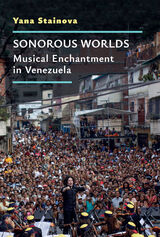 Sonorous Worlds: Musical Enchantment in Venezuela
Yana Stainova
University of Michigan Press, 2021 El Sistema is a nationwide, state-funded music education program in Venezuela. Founded in 1975 by economist and musician José Antonio Abreu, the institution has weathered seven jolting changes in government. Hugo Chávez and, after his death, president Nicolás Maduro enthusiastically included the institution into the political agenda of the socialist project and captured the affective power of music for their own aims. Fueled by the oil boom in the 2000s, El Sistema grew over the years to encompass 1,210 orchestras for children and young people in Venezuela, reached almost 1 million people out of the 30 million in the country, and served as a model in more than 35 countries around the world.
Sonorous Worlds is an ethnography of the young Venezuelan musicians who participate in El Sistema, many of whom live in urban barrios and face everyday gang violence, state repression, social exclusion, and forced migration in response to sociopolitical crisis. This book looks at how these young people engage with what the author calls “enchantment,” that is, how through musical practices they create worlds that escape, rupture, and critique dominant structures of power. Stainova’s focus on artistic practice and enchantment allows her to theorize the successes and failures of political projects through the lens of everyday transformations in people’s lives.
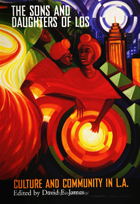 Sons And Daughters Of Los: Culture And Community In L.A.
David James
Temple University Press, 2003 Los Angeles. A city that is synonymous with celebrity and mass-market culture, is also, according to David James, synonymous with social alienation and dispersal. In the communities of Los Angeles, artists, cultural institutions and activities exist in ways that are often concealed from sight, obscured by the powerful presence of Hollywood and its machinations. In this significant collection of original essays, The Sons and Daughters of Los reconstructs the city of Los Angeles with new cultural connections. Explored here are the communities that offer alternatives to the picture of L..A. as a conglomeration of studios and mass media. Each essay examines a particular piece of, or place in, Los Angeles cultural life: from the Beyond Baroque Poetry Foundation, the Woman's Building, to Highways, and LACE, as well as the achievements of these grassroots initiatives. Also included is critical commentary on important artists, including Harry Gamboa, Jr., and others whose work have done much to shape popular culture in L.A. The cumulative effect of reading this book is to see a very different city take shape, one whose cultural landscape is far more innovative and reflective of the diversity of the city's people than mainstream notions of it suggest. The Sons and Daughters of Los offers a substantive and complicated picture of the way culture plays itself it out on the smallest scale—in one of the largest metropolises on earth—contributing to a richer, more textured understanding of the vibrancy of urban life and art.
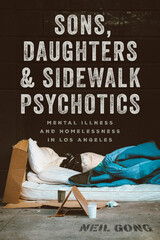 Sons, Daughters, and Sidewalk Psychotics: Mental Illness and Homelessness in Los Angeles
Neil Gong
University of Chicago Press, 2024 Sociologist Neil Gong explains why mental health treatment in Los Angeles rarely succeeds, for the rich, the poor, and everyone in between.
In 2022, Los Angeles became the US county with the largest population of unhoused people, drawing a stark contrast with the wealth on display in its opulent neighborhoods. In Sons, Daughters, and Sidewalk Psychotics, sociologist Neil Gong traces the divide between the haves and have-nots in the psychiatric treatment systems that shape the life trajectories of people living with serious mental illness. In the decades since the United States closed its mental hospitals in favor of non-institutional treatment, two drastically different forms of community psychiatric services have developed: public safety-net clinics focused on keeping patients housed and out of jail, and elite private care trying to push clients toward respectable futures.
In Downtown Los Angeles, many people in psychiatric crisis only receive help after experiencing homelessness or arrests. Public providers engage in guerrilla social work to secure them housing and safety, but these programs are rarely able to deliver true rehabilitation for psychological distress and addiction. Patients are free to refuse treatment or use illegal drugs—so long as they do so away from public view.
Across town in West LA or Malibu, wealthy people diagnosed with serious mental illness attend luxurious treatment centers. Programs may offer yoga and organic meals alongside personalized therapeutic treatments, but patients can feel trapped, as their families pay exorbitantly to surveil and “fix” them. Meanwhile, middle-class families—stymied by private insurers, unable to afford elite providers, and yet not poor enough to qualify for social services—struggle to find care at all.
Gong’s findings raise uncomfortable questions about urban policy, family dynamics, and what it means to respect individual freedom. His comparative approach reminds us that every “sidewalk psychotic” is also a beloved relative and that the kinds of policies we support likely depend on whether we see those with mental illness as a public social problem or as somebody’s kin. At a time when many voters merely want streets cleared of “problem people,” Gong’s book helps us imagine a fundamentally different psychiatric system—one that will meet the needs of patients, families, and society at large.
 Sons et sens: La prononciation du français en contexte
Anne Violin-Wigent, Jessica Miller, and Frédérique Grim
Georgetown University Press Sons et sens presents a unique cultural approach to French pronunciation for English-speaking students. Each chapter presents a new cultural topic, such as the French education system, vernacular French, and cooking in the francophone world, in order to enhance students’ pronunciation skills within the context of French and francophone culture. Phonetic explanations and rules throughout the textbook are anchored in recent research on French phonology, reflecting contemporary French as well as elements of nonstandard variation from around the francophone world. The authors' approach derives from current research on second language acquisition and pedagogy as well as contemporary research on French linguistics—especially sociolinguistics. The textbook’s fifteen chapters include a variety of exercises on sound discrimination, rule formulation, phonetic reading and transcriptions, and conversations. The publisher's website (press,georgetown.edu) provides about 200 sound files and several video files that show how sounds are formed with the body. A teacher's edition contains additional materials, including comments and answers keyed to the student text. Perfect for third year students, Sons et sens should appeal to instructors and students of college-level pronunciation and phonetics courses and serve as a valuable reference in a variety of courses where pronunciation is of importance. The book will also interest students with some background in French who want to perfect their pronunciation on their own.
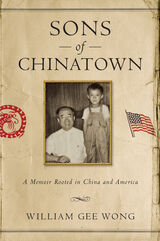 Sons of Chinatown: A Memoir Rooted in China and America
William Gee Wong
Temple University Press, 2024 William Gee Wong was born in Oakland, California’s Chinatown in 1941, the only son of his father, known as Pop. Pop was born in Guangdong Province, China and emigrated to Oakland as a teenager during the Chinese Exclusion era in 1912. He entered the U.S. legally as the “son of a native,” despite having partially false papers. Sons of Chinatown is Wong’s evocative dual memoir of his and his father’s parallel experiences in America.
As Pop grappled with the systemic racism towards Asians during the exclusion era, Wong wistfully depicts Pop’s efforts to establish a family business and build a life for his family in segregated Oakland. As the exclusion law ended in 1943, young William was assimilating into American life and developing his path as a journalist. Writing for the Wall Street Journal, Oakland Tribune, and Asian American periodicals, Wong chronicled Asian American experiences while honoring Chinese American history and identity, but he too faced discrimination.
Sons of Chinatown poignantly weaves these father and son stories together with admiration and righteous anger. Through the mirrored lens of his father, Wong reflects on the hardships Asian Americans endured—and continue to face—with American exceptionalism. Wong’s inspiring memoir provides a personal history that also raises the question of whether America welcomes or repels immigrants.
The Sons of Gunshooter
Dorothy Denetclaw
University of Arizona Press, 2026 In 1919, the brother of one of the West’s most famous Indian traders was shot to death in a remote corner of the Navajo Nation.
Part history, part true crime, The Sons of Gunshooter reexamines the killing and subsequent murder trial, while simultaneously embedding the story in a much larger saga of colonization and resistance. The result is a book that’s sweeping in its scope and surgical in its approach. Rewinding the clock to 1868, the authors follow the intertwining paths of two families to offer a riveting, deeply personal account that has been hailed as “a new way of doing historiography.”
One of the authors is a descendant of participants in the case; the other is an investigative journalist. By merging Diné oral traditions with archival evidence, they succeed in upending one false narrative after another. The Sons of Gunshooter is an inspiring new take on a history we thought we knew.
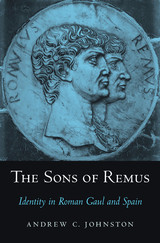 The Sons of Remus: Identity in Roman Gaul and Spain
Andrew C. Johnston
Harvard University Press, 2017 Histories of ancient Rome have long emphasized the ways in which the empire assimilated the societies it conquered, bringing civilization to the supposed barbarians. Yet interpretations of this “Romanization” of Western Europe tend to erase local identities and traditions from the historical picture, leaving us with an incomplete understanding of the diverse cultures that flourished in the provinces far from Rome.
The Sons of Remus recaptures the experiences, memories, and discourses of the societies that made up the variegated patchwork fabric of the western provinces of the Roman Empire. Focusing on Gaul and Spain, Andrew Johnston explores how the inhabitants of these provinces, though they willingly adopted certain Roman customs and recognized imperial authority, never became exclusively Roman. Their self-representations in literature, inscriptions, and visual art reflect identities rooted in a sense of belonging to indigenous communities. Provincials performed shifting roles for different audiences, rehearsing traditions at home while subverting Roman stereotypes of druids and rustics abroad.
Deriving keen insights from ancient sources—travelers’ records, myths and hero cults, timekeeping systems, genealogies, monuments—Johnston shows how the communities of Gaul and Spain balanced their local identities with their status as Roman subjects, as they preserved a cultural memory of their pre-Roman past and wove their own narratives into Roman mythology. The Romans saw themselves as the heirs of Romulus, the legendary founder of the eternal city; from the other brother, the provincials of the west received a complicated inheritance, which shaped the history of the sons of Remus.
Sons of the Prophet: A Play
Stephen Karam
Northwestern University Press, 2012 Finalist, 2012 Pulitzer Prize for Drama
Winner, 2012 New York Drama Critics Circle Award for Best Play
Winner, 2012 Lucille Lortel Award for Outstanding Play
A deeply humorous, unflinching portrait of grief and loss, Sons of the Prophet depicts a Lebanese-American family in rural Pennsylvania beset by an absurd string of tragedies. At the play’s center is Joseph Douaihy, a once-promising world-class runner now sidelined by injury. As Joseph confronts his deteriorating health, he is also forced to face the death of his father, an ailing Uncle, and a desperate boss beset by her own tragedies. Deftly keeping its various storylines in careful balance, Karam’s play confronts, with abundant intelligence and great sympathy for human frailty, the inevitability of loss and the equally inevitable comedy resulting from our attempts to cope with is consequences.
Sons of the Shaking Earth
Eric Wolf
University of Chicago Press, 1962 "Wolf drew on anthropology, archaeology, history, and geography to mold a magnificent, sweeping, and beautifully written synthesis. With style and deep personal engagement he unraveled the complexity of Mexico and Guatemala's past with its multiple ethnicities, many languages, and environmental diversity. . . . Armies of graduate students have challenged many of the details, but the book stands as a monument to a time when social scientists were able to think large thoughts and write elegant English"—Foreign Affairs, Significant Books of the Last 75 Years.
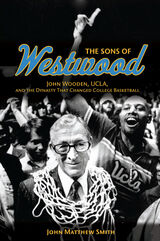 The Sons of Westwood: John Wooden, UCLA, and the Dynasty That Changed College Basketball
John Matthew Smith
University of Illinois Press, 2013 For more than a decade, the UCLA dynasty defined college basketball. In twelve seasons from 1964 to 1975, John Wooden's teams won ten national titles, including seven consecutive championships. The Bruins made history by breaking numerous records, but they also rose to prominence during a turbulent age of political unrest and youthful liberation. When Lew Alcindor and Bill Walton--the most famous college basketball players of their generation--spoke out against racism, poverty, and the Vietnam War, they carved out a new role for athletes, casting their actions on and off the court in a political light. The Sons of Westwood tells the story of the most significant college basketball program at a pivotal period in American cultural history. It weaves together a story of sports and politics in an era of social and cultural upheaval, a time when college students and college athletes joined the civil rights movement, demonstrated against the Vietnam War, and rejected the dominant Cold War culture. This is the story of America's culture wars played out on the basketball court by some of college basketball's most famous players and its most memorable coach.
Sophia Loren: Moulding the Star
Pauline Small
Intellect Books, 2009 In films from Houseboat to The Millionairess to Two Women, Sophia Loren established herself as an actress whose stardom spanned Italy, Europe, and finally Hollywood. Hers was a highly original rise to fame for a European film actress, and in Sophia Loren, Pauline Small highlights a unique career which transcended Italian film culture. Sophia Loren is the first book to explore in detail the transfer of Loren’s stardom from Italy to Hollywood and the reasons for her American success, particularly during the 1960s. Looking individually at Loren’s major films and drawing on rare archival materials in Italy, Small provides a thorough exploration of the commercial and cultural forces that combined to ensure Loren’s enduring star status. Perfect for scholars and aficionados of 1960s Italian and American film, Sophia Loren is a fascinating look at one of the major personalities of modern cinema.
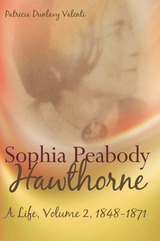 Sophia Peabody Hawthorne: A Life, Volume 2, 1848-1871
Patricia Dunlavy Valenti
University of Missouri Press, 2015 As is often the case with spouses of celebrities, Sophia Peabody Hawthorne was overshadowed by her husband. While Nathaniel Hawthorne is renowned for numerous publications, including The Scarlet Letter, that staple in high school English curricula, Sophia’s remarkable life and career did not receive the recognition they deserve. She was, however, a source for many of Nathaniel’s stories and responsible for much that he accomplished. Sophia was an artist, one of the first in America to earn income from her painting and decorative arts; she was also a writer and traveler to foreign countries at a time when women typically confined their activities to the home. Patricia Dunlavy Valenti began to tell this story in Sophia Peabody Hawthorne: A Life, Volume 1, 1809-1847 (2004). This biography concludes now in a second volume, which details the less examined and more surprising second half of Sophia’s life.
Valenti’s thorough research culminates in a compelling, revealing account of Sophia’s travels to Britain and Europe and her intense personal relationships outside her marriage with men and women, among them notable figures in American history and literature. As an impoverished widow, Sophia dealt resourcefully with the consequences of her husband’s financial carelessness; as a mother, her liberal practices resulted in unintended, sometimes unfortunate consequences. Throughout every vicissitude, her relentless optimism prevailed.
With the publication of Sophia Peabody Hawthorne: A Life, Volume 2, 1848-1871, Sophia emerges forever from the shadow cast by her husband. Historians and general readers alike will be drawn to this riveting account of an interesting, important woman and what her life reveals about American history and culture at a moment of national conflict, emerging class divisions, and evolving gender roles.
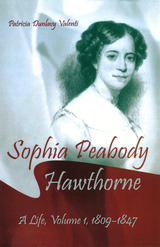 Sophia Peabody Hawthorne: A Life, Volume I, 1809-1847
Patricia Dunlavy Valenti
University of Missouri Press, 2004
Sophia Peabody Hawthorne is known almost exclusively in her role as the wife of Nathaniel Hawthorne, who portrayed her as the fragile, ethereal, infirm “Dove.” That image, invented by Nathaniel to serve his needs and affirm his manhood, was passed on by his biographers, who accepted their subject’s perception without question. In fact, the real Sophia was very different from Nathaniel’s construction of her.
An independent, sensuous, daring woman, Sophia was an accomplished artist before her marriage to Nathaniel. Moreover, what she brought to their union inspired Nathaniel’s imagination beyond the limits of his previously confined existence. In Sophia Peabody Hawthorne, Patricia Dunlavy Valenti situates the story of Sophia’s life within its own historical, philosophical, and cultural background, as well as within the context of her marriage. Valenti begins with parallel biographies that present Sophia, and then Nathaniel, at comparable periods in their lives.
Sophia was born into an expansive, somewhat chaotic home in which women provided financial as well as emotional sustenance. She was a precocious, eager student whose rigorous education, in her mother’s and her sisters’ schools, began her association with the children of New England’s elite. Sophia aspired to become a professional, self-supporting painter, exhibiting her art and seeking criticism from established mentors. She relished an eighteen-month sojourn in Cuba. Nathaniel’s reclusive family, his reluctant early education, his anonymous pursuit of a career, and his relatively circumscribed life contrast markedly with the experience of the woman who became his wife and the mother of his children. Those differences resulted in a creative abrasion that ignited his fiction during the first years of their marriage.
Volume 1 of this biography concludes with Sophia’s negotiation of the Hawthornes’ departure from the Old Manse and the birth of their second child. This period also coincides with the conclusion of Nathaniel’s major phase of short story writing.
Sophia Peabody Hawthorne is an engrossing story of a nineteenth-century American life. It analyzes influences upon authorship and questions the boundaries of intellectual property in the domestic sphere. The book also offers fresh interpretations of Nathaniel Hawthorne’s fiction, examining it through the lens of Sophia’s vibrant personality and diverse interests. Students and scholars of American literature, literary theory, feminism, and cultural history will find much to enrich their understanding of this woman and this era.
Sophie Taeuber-Arp and the Avant-Garde: A Biography
Roswitha Mair
University of Chicago Press, 2018 Sophie Taeuber-Arp was a quiet innovator whose fame has too often been yoked to that of her husband, Jean Arp. Over time, however, she has slowly come to be seen as one of the foremost abstract artists and designers of the twentieth century. The Swiss-born Taeuber-Arp had a front row seat to the first wave of Dadaism and was, along with Mondrian and Malevich, a pioneer of Constructivism. Her singular artwork incorporated painting, sculpture, dance, fiber arts, and architecture, as hers was one of the first oeuvres to successfully bridge the divide between fine and functional art.
Now Roswitha Mair has brought us the first biography of this unique polymath, illuminating not just Tauber-Arp’s own life and work, but also the various milieux and movements in which she traveled. No fan of the Dadaists and their legacy will want to miss this first English-language translation.
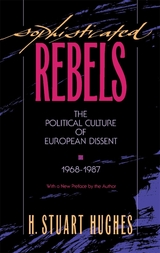 Sophisticated Rebels: The Political Culture of European Dissent, 1968–1987, With a New Preface by the Author
H. Stuart Hughes
Harvard University Press, 1988 Those who think otherwise, though they may fail, deserve our attention, says H. Stuart Hughes. In Sophisticated Rebels, Hughes shows what happened to the revolutionary spirit after the 1968 suppressions in Prague and Paris: dissenters learned their lesson and began to pursue their goals in patient, realistic, limited fashion, eschewing violence and inflammatory ideological rhetoric. Yet theirs were the voices protesting what even conformists recognize as social evils; the manipulative routine of bureaucratic authority, public and private; the soullessness of life in the sprawling conurbations European cities have become; the deadening of sensibility that allows us to screen out from consciousness the possibility of nuclear war.
Hughes takes up in turn the innovations in dissidence during a reactionary age: the foreign workers, especially Moslems, who flooded the more prosperous countries of Europe in the 1970s, creating a large underclass; the advocates of local cultural autonomy, such as the Welsh and Bretons; the independent-minded theologians Hans Küng and Edward Schillebeeckx and Leonardo Boff arrayed against Pope John Paul II, who was himself rebelling against a dilution of Catholic theology; Poland’s Solidarity and with it the longing for reunification of a sundered continent; the frustration of Soviet dissent, from the hope of Khrushchev’s “thaw” to the sufferings of Sakharov; the collapse of Eurocommunism and the falterings of democratic socialism; and the slow advance of the German Greens toward a society on a human scale. Although European dissent, with the exception of the Greens, has failed to shake the hold of conservative rule, Hughes believes the subject matter of dissent—notably the protest against the nuclear menace—has lost none of its timeliness for the century ahead, and the dissenters themselves face the future with both stoicism and hope.
Serving as markers throughout the route are brief analyses of the relevance of novelists and social critics, among them Milan Kundera, Adam Michnik, Yuri Trifonov, Roy Medvedev, and Jürgen Habermas.
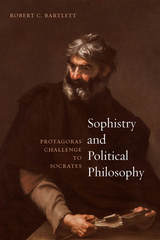 Sophistry and Political Philosophy: Protagoras' Challenge to Socrates
Robert C. Bartlett
University of Chicago Press, 2016 One of the central challenges to contemporary political philosophy is the apparent impossibility of arriving at any commonly agreed upon “truths.” As Nietzsche observed in his Will to Power, the currents of relativism that have come to characterize modern thought can be said to have been born with ancient sophistry. If we seek to understand the strengths and weaknesses of contemporary radical relativism, we must therefore look first to the sophists of antiquity—the most famous and challenging of whom is Protagoras.
With Sophistry and Political Philosophy, Robert C. Bartlett provides the first close reading of Plato’s two-part presentation of Protagoras. In the “Protagoras,” Plato sets out the sophist’s moral and political teachings, while the “Theaetetus,” offers a distillation of his theoretical and epistemological arguments. Taken together, the two dialogues demonstrate that Protagoras is attracted to one aspect of conventional morality—the nobility of courage, which in turn is connected to piety. This insight leads Bartlett to a consideration of the similarities and differences in the relationship of political philosophy and sophistry to pious faith. Bartlett’s superb exegesis offers a significant tool for understanding the history of philosophy, but, in tracing Socrates’s response to Protagoras’ teachings, Bartlett also builds toward a richer understanding of both ancient sophistry and what Socrates meant by “political philosophy.”
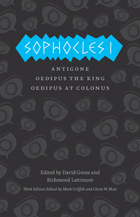 Sophocles I: The Theban Plays: Antigone, Oedipus the King, Oedipus at Colonus
Edited and Translated by Mark Griffith, Glenn W. Most, David Grene, and Richmond Lattimore
University of Chicago Press, 2013 Sophocles I contains the plays “Antigone,” translated by Elizabeth Wyckoff; “Oedipus the King,” translated by David Grene; and “Oedipus at Colonus,” translated by Robert Fitzgerald. Many years ago, the University of Chicago Press undertook a momentous project: a new translation of the Greek tragedies that would be the ultimate resource for teachers, students, and readers. They succeeded. Under the expert management of eminent classicists David Grene and Richmond Lattimore, those translations combined accuracy, poetic immediacy, and clarity of presentation to render the surviving masterpieces of Aeschylus, Sophocles, and Euripides in an English so lively and compelling that they remain the standard translations. The updated third editions of these classic works were designed to ensure that our Greek tragedies remain the leading English-language versions throughout the twenty-first century. In this highly anticipated third edition, Mark Griffith and Glenn W. Most have carefully updated the translations to bring them even closer to the ancient Greek while retaining the vibrancy for which our English versions are famous. This edition also includes brand-new translations of Euripides’ Medea, The Children of Heracles, Andromache, and Iphigenia among the Taurians, fragments of lost plays by Aeschylus, and the surviving portion of Sophocles’s satyr-drama The Trackers. New introductions for each play offer essential information about its first production, plot, and reception in antiquity and beyond. In addition, each volume includes an introduction to the life and work of its tragedian, as well as notes addressing textual uncertainties and a glossary of names and places mentioned in the plays. In addition to the new content, the volumes have been reorganized both within and between volumes to reflect the most up-to-date scholarship on the order in which the plays were originally written. The result is a set of handsome paperbacks destined to introduce new generations of readers to these foundational works of Western drama, art, and life.
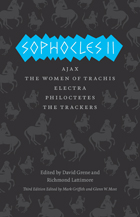 Sophocles II: Ajax, The Women of Trachis, Electra, Philoctetes, The Trackers
Edited by Mark Griffith, Glenn W. Most, David Grene, and Richmond Lattimore
University of Chicago Press, 2013 Sophocles II contains the plays “Ajax,” translated by John Moore; “The Women of Trachis,” translated by Michael Jameson; “Electra,” translated by David Grene; “Philoctetes,” translated by David Grene; and “The Trackers,” translated by Mark Griffith. Many years ago, the University of Chicago Press undertook a momentous project: a new translation of the Greek tragedies that would be the ultimate resource for teachers, students, and readers. They succeeded. Under the expert management of eminent classicists David Grene and Richmond Lattimore, those translations combined accuracy, poetic immediacy, and clarity of presentation to render the surviving masterpieces of Aeschylus, Sophocles, and Euripides in an English so lively and compelling that they remain the standard translations. The updated third editions of these classic works were designed to ensure that our Greek tragedies remain the leading English-language versions throughout the twenty-first century. In this highly anticipated third edition, Mark Griffith and Glenn W. Most have carefully updated the translations to bring them even closer to the ancient Greek while retaining the vibrancy for which our English versions are famous. This edition also includes brand-new translations of Euripides’ Medea, The Children of Heracles, Andromache, and Iphigenia among the Taurians, fragments of lost plays by Aeschylus, and the surviving portion of Sophocles’s satyr-drama The Trackers. New introductions for each play offer essential information about its first production, plot, and reception in antiquity and beyond. In addition, each volume includes an introduction to the life and work of its tragedian, as well as notes addressing textual uncertainties and a glossary of names and places mentioned in the plays. In addition to the new content, the volumes have been reorganized both within and between volumes to reflect the most up-to-date scholarship on the order in which the plays were originally written. The result is a set of handsome paperbacks destined to introduce new generations of readers to these foundational works of Western drama, art, and life.
Sophocles' Philoctetes and the Great Soul Robbery
Norman Austin
University of Wisconsin Press, 2011 Norman Austin brings both keen insight and a life-long engagement with his subject to this study of Sophocles’ late tragedy Philoctetes, a fifth-century BCE play adapted from an infamous incident during the Trojan War. In Sophocles’ “Philoctetes” and the Great Soul Robbery, Austin examines the rich layers of text as well as context, situating the play within the historical and political milieu of the eclipse of Athenian power. He presents a study at once of interest to the classical scholar and accessible to the general reader. Though the play, written near the end of Sophocles’ career, is not as familiar to modern audiences as his Theban plays, Philoctetes grapples with issues—social, psychological, and spiritual—that remain as much a part of our lives today as they were for their original Athenian audience.
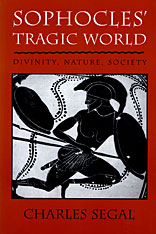 Sophocles’ Tragic World: Divinity, Nature, Society
Charles Segal
Harvard University Press, 1995 Much has been written about the heroic figures of Sophocles’ powerful dramas. Now Charles Segal focuses our attention not on individual heroes and heroines, but on the world that inspired and motivated their actions—a universe of family, city, nature, and the supernatural. He shows how these ancient masterpieces offer insight into the abiding question of tragedy: how one can make sense of a world that involves so much apparently meaningless violence and suffering.
In a series of engagingly written interconnected essays, Segal studies five of Sophocles’ seven extant plays: Ajax, Oedipus Tyrannus, Philoctetes, Antigone, and the often neglected Trachinian Women. He examines the language and structure of the plays from several interpretive perspectives, drawing both on traditional philological analysis and on current literary and cultural theory. He pays particular attention to the mythic and ritual backgrounds of the plays, noting Sophocles’ reinterpretation of the ancient myths. His delineation of the heroes and their tragedies encompasses their relations with city and family, conflicts between men and women, defiance of social institutions, and the interaction of society, nature, and the gods. Segal’s analysis sheds new light on Sophocles’ plays—among the most widely read works of classical literature—and on their implications for Greek views on the gods, moral life, and sexuality.
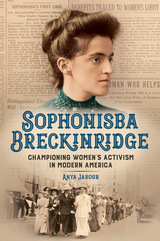 Sophonisba Breckinridge: Championing Women's Activism in Modern America
Anya Jabour
University of Illinois Press, 2019 Sophonisba Breckinridge's remarkable career stretched from the Civil War to the Cold War. She took part in virtually every reform campaign of the Progressive and New Deal eras and became a nationally and internationally renowned figure. Her work informed women’s activism for decades and continues to shape progressive politics today. Anya Jabour's biography rediscovers this groundbreaking American figure. After earning advanced degrees in politics, economics, and law, Breckinridge established the University of Chicago's School of Social Service Administration, which became a feminist think tank that promoted public welfare policy and propelled women into leadership positions. In 1935, Breckinridge’s unremitting efforts to provide government aid to the dispossessed culminated in her appointment as an advisor on programs for the new Social Security Act. A longtime activist in international movements for peace and justice, Breckinridge also influenced the formation of the United Nations and advanced the idea that "women’s rights are human rights." Her lifelong commitment to social justice created a lasting legacy for generations of progressive activists.
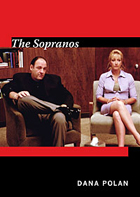 The Sopranos
Dana Polan
Duke University Press, 2009 “In its original run on HBO, The Sopranos mattered, and it matters still,” Dana Polan asserts early in this analysis of the hit show, in which he sets out to clarify the impact and importance of the series in both its cultural and media-industry contexts. A renowned film and TV scholar, Polan combines a close and extended reading of the show itself—and of select episodes and scenes—with broader attention to the social landscape with which it is in dialogue. For Polan, The Sopranos is a work of playful irony that complicates simplistic attempts to grasp its meanings and values. The show seductively beckons the viewer into an amoral universe, hinting at ways to make sense of its ethically complicated situations, only to challenge the viewer’s complacent grasp of things. It deftly exploits the interplay between art culture and popular culture by mixing elements of art cinema—meandering plots, narrative breaks, and an uncertain progression—with the allure of a soap opera, delving into its characters’ sex lives, mob rivalries, and parent–child conflicts. A show about corrupt figures who parasitically try to squeeze illicit profit from the system, The Sopranos itself seems a target of attempts to glom on to its fame as a successful TV series: attempts by media executives, marketers, critics and writers, and even presidential candidates. “Everyone wants a piece of Sopranos action,” says Polan, and he traces the marketing of the series across both official and unauthorized media platforms, including cookbooks, games, DVDs, and the kitschy Sopranos bus tour. Critiquing previous books on The Sopranos, Polan suggests that in their quest to find deep meaning, many of the authors missed the show’s ironic and comedic side.
Sopwith Triplane
Nico Braas
Amsterdam University Press, 2022 The Sopwith Triplane was a British single seat fighter aircraft designed and manufactured by the Sopwith Aviation Company during the First World War. It has the distinction of being the first military triplane to see operational service.
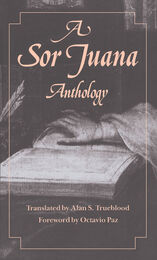 A Sor Juana Anthology
Ines de la Cruz Juana
Harvard University Press, 1988 Here is a new voice—new to us—reaching across a gap of three hundred years. Sor (Sister) Juana Inés de la Cruz was acclaimed in her time as “Phoenix of Mexico, America’s Tenth Muse”; a generation later she was forgotten. In our century she was rediscovered, her works were reissued, and she is now considered one of the finest Hispanic poets of the seventeenth century. She deserves to be known to English-speaking readers for another reason as well: she speaks directly to our concern for the freedom of women to realize themselves artistically and intellectually.
Her poetry is surprising in its scope and variety. She handled with ease the intricate verse forms of her day and wrote in a wide range of genres. Many of her lyrics reflect the worldliness and wit of the courtly society she moved in before becoming a nun; some, composed to be sung, offer charming glimpses of the native people, their festivities and colorful diversity. Alan Trueblood has chosen, in consultation with Octavio Paz, a generous selection of Sor Juana’s writings and has provided an introductory overview of her life and work. The short poems, and excerpts from her play The Divine Narcissus, are accompanied by the Spanish texts on facing pages. Her long philosophical poem, First Dream, is translated in its entirety, as is her famous autobiographical letter to the Bishop of Puebla, which is both a self-defense and a vindication of the right of women to cultivate their minds.
The Anthology was conceived as a companion to the English-language edition of Octavio Paz’s magisterial study of Sor Juana. On its own, it will be welcomed as the first representative selection in English of her verse and prose.
Sor Juana: Or, the Persistence of Pop
Ilan Stavans
University of Arizona Press, 2018 A sixteenth-century Mexican nun, Sor Juana Inés de la Cruz, has become one of the most rebellious and lasting icons in modern times, on par with Mahatma Gandhi, Ernesto “Che” Guevara, and Nelson Mandela. Referenced in ranchera, tejana, and hip-hop lyrics, and celebrated in popular art as a guerrillera with rifle and bullet belts, Sor Juana has become ubiquitous. The conduits keep multiplying: statues, lotería cards, key chains, recipe books, coffee mugs, Día de los Muertos costumes. Ironically, Juana Inés de Asbaje—alias Sor Juana Inés de la Cruz—died in anonymity. Her grave was unmarked until the 1970s.
Sor Juana: Or, the Persistence of Pop encapsulates the life, times, and legacy of Sor Juana. In this immersive work, essayist Ilan Stavans provides a biographical and meditative picture of the ways in which popular perceptions of her life and body of work both shape and reflect modern Latinx culture.
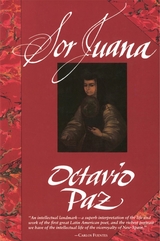 Sor Juana: Or, the Traps of Faith
Octavio Paz
Harvard University Press, 1988 Mexico’s leading poet, essayist, and cultural critic writes of a Mexican poet of another time and another world, the world of seventeenth-century New Spain. His subject is Sor Juana Inés de la Cruz, the most striking figure in all of Spanish-American colonial literature and one of the great poets of her age.
Her life reads like a novel. A spirited and precocious girl, one of six illegitimate children, is sent to live with relatives in the capital city. She becomes known for her beauty, wit, and amazing erudition, and is taken into the court as the Vicereine’s protégée. For five years she enjoys the pleasures of life at court—then abruptly, at twenty, enters a convent for life. Yet, no recluse, she transforms the convent locutory into a literary and intellectual salon; she amasses an impressive library and collects scientific instruments, reads insatiably, composes poems, and corresponds with literati in Spain. To the consternation of the prelates of the Church, she persists in circulating her poems, redolent more of the court than the cloister. Her plays are performed, volumes of her poetry are published abroad, and her genius begins to be recognized throughout the Hispanic world. Suddenly she surrenders her books, forswears all literary pursuits, and signs in blood a renunciation of secular learning. The rest is silence. She dies two years later, at forty-six.
Octavio Paz has long been intrigued by the enigmas of Sor Juana’s personality and career. Why did she become a nun? How could she renounce her lifelong passion for writing and learning? Such questions can be answered only in the context of the world in which she lived. Paz gives a masterly portrayal of the life and culture of New Spain and the political and ideological forces at work in that autocratic, theocratic, male-dominated society, in which the subjugation of women was absolute.
Just as Paz illuminates Sor Juana’s life by placing it in its historical setting, so he situates her work in relation to the traditions that nurtured it. With critical authority he singles out the qualities that distinguish her work and mark her uniqueness as a poet. To Paz her writings, like her life, epitomize the struggle of the individual, and in particular the individual woman, for creative fulfillment and self-expression.
Sor Juana's Love Poems
Sor Juana Inés de la Cruz; Translated by Joan Larkin and Jaime Manrique
University of Wisconsin Press, 2003 These exquisite love poems, some of them clearly addressed to women, were written by the visionary and passionate genius of Mexican letters, the seventeenth-century nun Sor Juana Inés de la Cruz. In this volume they are translated into the idiom of our own time by poets Joan Larkin and Jaime Manrique. Some of them are rooted in Renaissance courtly conventions; others are startlingly ahead of their time, seemingly modern in the naked power of the complex sexual feelings they address.
The Sorcerer's Apprentice: Picasso, Provence, and Douglas Cooper
John Richardson
University of Chicago Press, 2001 The Sorcerer's Apprentice is John Richardson's vivid memoir of the time he spent living with and learning from the deeply knowledgeable and temperamental art collector, Douglas Cooper. For ten years the two entertained a circle of friends that included Jean Cocteau, W. H. Auden, Tennessee Williams, and, most intriguingly, Pablo Picasso. Compulsively readable and beautifully illustrated, this book is both a triple portrait of the author, Cooper, and Picasso, and a revealing look at a crucial artistic period.
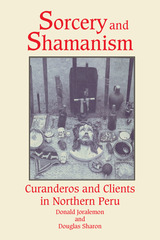 Sorcery And Shamanism
Donald Joralemon
University of Utah Press, 1993 The curanderos of northern Peru, traditional healing specialists who invoke Jesus Christ and the saints with a mescaline sacrament and a shamanic rattle, are not vestigial curiosities nor are their patients rural illiterates without access to "modern medicine." Instead, many of these shamans have thriving urban practices with clients from all levels of society. Sorcery and Shamanism documents the lives and rituals of twelve curanderos, offering a perspective on their curing role and shared knowledge. Authors Donald Joralemon and Douglas Sharon also consider the therapeutic experiences of over one hundred patients, including case histories and follow-ups. They offer a broad view of the shamans’ work in modern Peruvian society, particularly in connection with gender-based conflicts. The significant work goes a long way toward dispelling the stereotype of shamans as enigmatic and wise, showing them to be pragmatic curers confronting the health effects of everyday aggressions and betrayals.
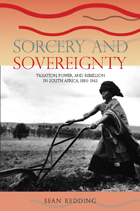 Sorcery and Sovereignty: Taxation, Power, and Rebellion in South Africa, 1880–1963
Sean Redding
Ohio University Press, 2006 Rebellions broke out in many areas of South Africa shortly after the institution of white rule in the late nineteenth century and continued into the next century. However, distrust of the colonial regime reached a new peak in the mid-twentieth century, when revolts erupted across a wide area of rural South Africa. All these uprisings were rooted in grievances over taxes. Rebels frequently invoked supernatural powers for assistance and accused government officials of using witchcraft to enrich themselves and to harm ordinary people. As Sean Redding observes in Sorcery and Sovereignty, beliefs in witchcraft and supernatural powers were part of the political rhetoric; the system of taxation—with all its prescribed interactions between ruler and ruled—was intimately connected to these supernatural beliefs. In this fascinating study, Redding examines how black South Africans’ beliefs in supernatural powers, along with both economic and social change in the rural areas, resulted in specific rebellions and how gender relations in black South African rural families changed. Sorcery and Sovereignty explores the intersection of taxation, political attitudes, and supernatural beliefs among black South Africans, shedding light on some of the most significant issues in the history of colonized Africa.
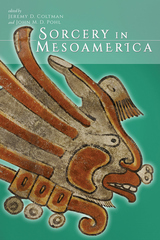 Sorcery in Mesoamerica
Jeremy D. Coltman and John M. D. Pohl
University Press of Colorado, 2020 Approaching sorcery as highly rational and rooted in significant social and cultural values, Sorcery in Mesoamerica examines and reconstructs the original indigenous logic behind it, analyzing manifestations from the Classic Maya to the ethnographic present. While the topic of sorcery and witchcraft in anthropology is well developed in other areas of the world, it has received little academic attention in Mexico and Central America until now.
In each chapter, preeminent scholars of ritual and belief ask very different questions about what exactly sorcery is in Mesoamerica. Contributors consider linguistic and visual aspects of sorcery and witchcraft, such as the terminology in Aztec semantics and dictionaries of the Kaqchiquel and K’iche’ Maya. Others explore the practice of sorcery and witchcraft, including the incorporation by indigenous sorcerers in the Mexican highlands of European perspectives and practices into their belief system. Contributors also examine specific deities, entities, and phenomena, such as the pantheistic Nahua spirit entities called forth to assist healers and rain makers, the categorization of Classic Maya Wahy (“co-essence”) beings, the cult of the Aztec goddess Cihuacoatl, and the recurring relationship between female genitalia and the magical conjuring of a centipede throughout Mesoamerica.
Placing the Mesoamerican people in a human context—as engaged in a rational and logical system of behavior—Sorcery inMesoamerica is the first comprehensive study of the subject and an invaluable resource for students and scholars of Mesoamerican culture and religion.
Contributors:
Lilián González Chévez, John F. Chuchiak IV, Jeremy D. Coltman, Roberto Martínez González, Oswaldo Chinchilla Mazariegos, Cecelia F. Klein, Timothy J. Knab, John Monaghan, Jesper Nielsen, John M. D. Pohl, Alan R. Sandstrom, Pamela Effrein Sandstrom, David Stuart
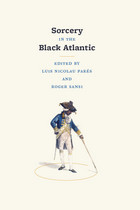 Sorcery in the Black Atlantic
Edited by Luis Nicolau Parés and Roger Sansi
University of Chicago Press, 2011 Most scholarship on sorcery and witchcraft has narrowly focused on specific times and places, particularly early modern Europe and twentieth-century Africa. And much of that research interprets sorcery as merely a remnant of premodern traditions. Boldly challenging these views, Sorcery in the Black Atlantic takes a longer historical and broader geographical perspective, contending that sorcery is best understood as an Atlantic phenomenon that has significant connections to modernity and globalization.
A distinguished group of contributors here examine sorcery in Brazil, Cuba, South Africa, Cameroon, and Angola. Their insightful essays reveal the way practices and accusations of witchcraft spread throughout the Atlantic world from the age of discovery up to the present, creating an indelible link between sorcery and the rise of global capitalism. Shedding new light on a topic of perennial interest, Sorcery in the Black Atlantic will be provocative, compelling reading for historians and anthropologists working in this growing field.
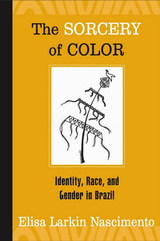 The Sorcery of Color: Identity, Race, and Gender in Brazil
Elisa Larkin Nascimento
Temple University Press, 2009 Originally published in 2003 in Portuguese, The Sorcery of Color argues that there are longstanding and deeply-rooted relationships between racial and gender inequalities in Brazil. In this pioneering book, Elisa Larkin Nascimento examines the social and cultural movements that have attempted, since the early twentieth century, to challenge and eradicate these conjoined inequalities. The book's title describes the social sleight-of-hand that disguises the realities of Brazilian racial inequity. According to Nascimento, anyone who speaks of racism—or merely refers to another person as black—traditionally is seen as racist. The only acceptably non-racist attitude is silence. At the same time, Afro-Brazilian culture and history have been so overshadowed by the idea of a general "Brazilian identity" that to call attention to them is also to risk being labeled racist. Incorporating leading international scholarship on Pan Africanism and Afrocentric philosophy with the writing of Brazilian scholars, Nascimento presents a compelling feminist argument against the prevailing policy that denies the importance of race in favor of a purposefully vague concept of ethnicity confused with color.
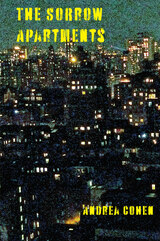 The Sorrow Apartments
Andrea Cohen
Four Way Books, 2024 About Andrea Cohen’s poems, Christian Wiman has said: “One is caught off guard by their cumulative force. This is work of great and sustained attention, true intelligence, and soul.” In The Sorrow Apartments, Cohen’s eighth collection, those signature gifts are front and center, along with sly humor, relentless economy, and the hairpin curves of gut-punch wisdom. How quickly Cohen takes us so far: Bunker
What would I
think, coming
up after
my world
had evaporated?
I'd wish
I were water. The Sorrow Apartments is home to spare and uncanny lyricism––as well as leaping narratives of mystery and loss and wonder. These poems race at once into the past and the possible. And yet, instead of holding things up to the light for a better view, Cohen lifts them to the dark and light, as in "Acapulco," where an unlikely companion points out, “as men tend to, / the stars comprising Orion’s belt — / as if it were the lustrous sparks and not / the leveling dark that connects us.” For a poet who has been called unfashionable from the get-go, unfashionable never looked so good.
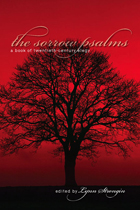 The Sorrow Psalms: A Book of Twentieth-Century Elegy
Lynn Strongin
University of Iowa Press, 2006 Like the pilot in W. B. Yeats's “An Irish Airman Foresees His Death,” each of us is challenged to “balance with this life, this death.” As we share a common fate, we also share loss and sorrow. At their most mournful, with praise and love and raw emotion, poets throughout time have put their grief to paper. The elegy and its inherent drama---the inevitable struggle between love and death---are showcased in The Sorrow Psalms, a collection of twentieth-century elegies edited by poet Lynn Strongin. Divided into five thematic sections, the elegies convey the impact of death and its aftermath; focus on the loss of family, lovers, and dear friends; contend with the loss of a child; deal with violent death; and seek to look beyond death to find some kind of resolution. The traditional stages of grieving---denial, anger, depression, and acceptance---are evident, either singly in the expression of one profound emotion or all at once, in these elegies. Strongin's introduction on the origins of the elegy and its evolution through the twentieth century explains what elegy has been and what it can be. “There is a river of sorrows that flows, which our creative spirits have mapped,” she writes. As they evoke and exalt the dead and give expression to the deepest emotions, the resonant elegies collected here offer comfort to those who personally or collectively grieve the passing of loved ones. Contributors includeJohn Berryman, Elizabeth Bishop, Lucille Clifton, Billy Collins, e. e. cummings, James Dickey, Donald Hall, Jane Kenyon, Denise Levertov, Sandra McPherson, Joyce Peseroff, Robert Peters, Stan Rice, Adrienne Rich, Carl Sandburg, Anne Sexton, Ruth Stone, Mark Strand, Dylan Thomas, William Carlos Williams, C. D. Wright
The Sorrowful Eyes Of Hannah Karajich
Ivan Olbracht
Central European University Press, 1999 The Sorrowful Eyes of Hannah Karajich is a lyrical, deeply moving story of love and the pain of emancipation, set in the now vanished world of rural East European Jewish village life. Hanna is the most beautiful girl in all Polona, a Hasidic community in the remote province of Sub-Carpathian Ruthenia. Involvement in the exciting new movement of Zionism takes her away to a commune in a nearby town. But there she meets and falls in love with the strangely named Ivo Karajich: a Jew, yet not a Jew. The agonizing drama that follows, plants into her beautiful almond-shaped eyes the hard grain of sorrow that her children, too, will inherit. Olbracht's novella is both a great love story and a marvellous portrait of a world that modernity threatened and Hitler destroyed.
 The Sorrows of the Quaker Jesus: James Nayler and the Puritan Crackdown on the Free Spirit
Leo Damrosch
Harvard University Press, 1996 In October 1656 James Nayler, a prominent Quaker leader--second only to George Fox in the nascent movement--rode into Bristol surrounded by followers singing hosannas in deliberate imitation of Jesus' entry into Jerusalem. In Leo Damrosch's trenchant reading this incident and the extraordinary outrage it ignited shed new light on Cromwell's England and on religious thought and spirituality in a turbulent period.
Damrosch gives a clear picture of the origins and early development of the Quaker movement, elucidating the intellectual foundations of Quaker theology. A number of central issues come into sharp relief, including gender symbolism and the role of women, belief in miraculous cures, and--particularly in relation to the meaning of the entry into Bristol--"signs of the in-dwelling spirit." Damrosch's account of the trial and savage punishment of Nayler for blasphemy exposes the politics of the Puritan response, the limits to Cromwellian religious liberalism.
The Sorrows of the Quaker Jesus is at once a study of antinomian religious thought, of an exemplary individualist movement that suddenly found itself obliged to impose order, and of the ways in which religious and political ideas become intertwined in a period of crisis. It is also a vivid portrait of a fascinating man.
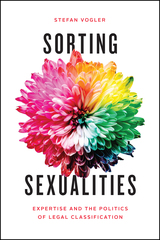 Sorting Sexualities: Expertise and the Politics of Legal Classification
Stefan Vogler
University of Chicago Press, 2021 In Sorting Sexualities, Stefan Vogler deftly unpacks the politics of the techno-legal classification of sexuality in the United States. His study focuses specifically on state classification practices around LGBTQ people seeking asylum in the United States and sexual offenders being evaluated for carceral placement—two situations where state actors must determine individuals’ sexualities. Though these legal settings are diametrically opposed—one a punitive assessment, the other a protective one—they present the same question: how do we know someone’s sexuality?
In this rich ethnographic study, Vogler reveals how different legal arenas take dramatically different approaches to classifying sexuality and use those classifications to legitimate different forms of social control. By delving into the histories behind these diverging classification practices and analyzing their contemporary reverberations, Vogler shows how the science of sexuality is far more central to state power than we realize.
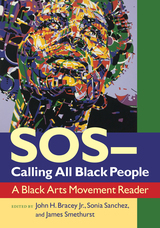 SOS—Calling All Black People: A Black Arts Movement Reader
John H. Bracey
University of Massachusetts Press, 2014 This volume brings together a broad range of key writings from the Black Arts Movement of the 1960s and 1970s, among the most significant cultural movements in American history. The aesthetic counterpart of the Black Power movement, it burst onto the scene in the form of artists' circles, writers' workshops, drama groups, dance troupes, new publishing ventures, bookstores, and cultural centers and had a presence in practically every community and college campus with an appreciable African American population. Black Arts activists extended its reach even further through magazines such as Ebony and Jet, on television shows such as Soul! and Like It Is, and on radio programs.
Many of the movement's leading artists, including Ed Bullins, Nikki Giovanni, Woodie King, Haki Madhubuti, Sonia Sanchez, Askia Touré, and Val Gray Ward remain artistically productive today. Its influence can also be seen in the work of later artists, from the writers Toni Morrison, John Edgar Wideman, and August Wilson to actors Avery Brooks, Danny Glover, and Samuel L. Jackson, to hip hop artists Mos Def, Talib Kweli, and Chuck D.
SOS—Calling All Black People includes works of fiction, poetry, and drama in addition to critical writings on issues of politics, aesthetics, and gender. It covers topics ranging from the legacy of Malcolm X and the impact of John Coltrane's jazz to the tenets of the Black Panther Party and the music of Motown. The editors have provided a substantial introduction outlining the nature, history, and legacy of the Black Arts Movement as well as the principles by which the anthology was assembled.
SOU vol 35 num 12
The University of Chicago Press
University of Chicago Press Journals, 2016
SOU vol 35 num 3
The University of Chicago Press
University of Chicago Press Journals, 2016
SOU vol 35 num 4
The University of Chicago Press
University of Chicago Press Journals, 2016
SOU vol 36 num 1
The University of Chicago Press
University of Chicago Press Journals, 2016
SOU vol 36 num 2
The University of Chicago Press
University of Chicago Press Journals, 2017
SOU vol 36 num 34
The University of Chicago Press
University of Chicago Press Journals, 2017
SOU vol 37 num 1
The University of Chicago Press
University of Chicago Press Journals, 2017
SOU vol 37 num 2
The University of Chicago Press
University of Chicago Press Journals, 2018
SOU vol 37 num 3
The University of Chicago Press
University of Chicago Press Journals, 2018
SOU vol 37 num 4
The University of Chicago Press
University of Chicago Press Journals, 2018
SOU vol 38 num 1
The University of Chicago Press
University of Chicago Press Journals, 2018
SOU vol 38 num 2
The University of Chicago Press
University of Chicago Press Journals, 2019
SOU vol 38 num 3
The University of Chicago Press
University of Chicago Press Journals, 2019
SOU vol 38 num 4
The University of Chicago Press
University of Chicago Press Journals, 2019
SOU vol 39 num 1
The University of Chicago Press
University of Chicago Press Journals, 2019
SOU vol 39 num 2
The University of Chicago Press
University of Chicago Press Journals, 2020
SOU vol 39 num 3
The University of Chicago Press
University of Chicago Press Journals, 2020
SOU vol 39 num 4
The University of Chicago Press
University of Chicago Press Journals, 2020
SOU vol 40 num 1
The University of Chicago Press
University of Chicago Press Journals, 2020
SOU vol 40 num 2
The University of Chicago Press
University of Chicago Press Journals, 2021
Soul among Lions: The Cougar as Peaceful Adversary
Harley Shaw
University of Arizona Press, 2000 Skilled predators prized by hunters and cursed by ranchers, mountain lions are the wild soul of the American West. Now a wildlife biologist brings you nose to nose with the elusive cougar. Harley Shaw shares dramatic stories culled from his years of studying mountain lions, separating fact from myth regarding their habits while raising serious questions about mankind's relationship with this commanding creature. "Most of us move into the country because we love wildlife," writes Shaw. "But none of us will tolerate having our pets or children eaten. . . . When lion/human encounters occur, the lion (or bear, or wolf) always ultimately loses." Soul among Lions offers us a chance to consider the true meaning of that loss.
 The Soul as Virgin Wife: Mechthild of Magdeburg, Marguerite Porete, and Meister Eckhart
Amy Hollywood
University of Notre Dame Press, 1995 The Soul as Virgin Wife presents the first book-length study to give a detailed account of the theological and mystical teachings written by women themselves, especially by those known as beguines, which have been especially neglected. Hollywood explicates the difference between the erotic and imagistic mysticism, arguing that Mechthild, Porete, and Eckhart challenge the sexual ideologies prevalent in their culture and claim a union without distinction between the soul and the divine.
The beguines' emphasis in the later Middle Ages on spiritual poverty has long been recognized as an important influence on subsequent German and Flemish mystical writers, in particular the great German Dominican preacher and apophatic theologian Meister Eckhart. In The Soul as Virgin Wife, Amy Hollywood presents the first book-length study to give a detailed textual account of these debts. Through an analysis of Magdeburg's The Flowing Light of the Godhead, Marguerite Porete's Mirror of Simple Souls, and the Latin commentaries and vernacular sermons of Eckhart, Hollywood uncovers the intricate web of influence and divergence between the beguinal spiritualities and Eckhart.
 Soul by Soul: Life Inside the Antebellum Slave Market
Walter Johnson
Harvard University Press, 2001 Winner of the Frederick Jackson Turner Award
Winner of the John Hope Franklin Prize
Winner of the Avery O. Craven Award
Soul by Soul tells the story of slavery in antebellum America by moving away from the cotton plantations and into the slave market itself, the heart of the domestic slave trade. Taking us inside the New Orleans slave market, the largest in the nation, where 100,000 men, women, and children were packaged, priced, and sold, Walter Johnson transforms the statistics of this chilling trade into the human drama of traders, buyers, and slaves, negotiating sales that would alter the life of each. What emerges is not only the brutal economics of trading but the vast and surprising interdependencies among the actors involved.
Using recently discovered court records, slaveholders’ letters, nineteenth-century narratives of former slaves, and the financial documentation of the trade itself, Johnson reveals the tenuous shifts of power that occurred in the market’s slave coffles and showrooms. Traders packaged their slaves by “feeding them up,” dressing them well, and oiling their bodies, but they ultimately relied on the slaves to play their part as valuable commodities. Slave buyers stripped the slaves and questioned their pasts, seeking more honest answers than they could get from the traders. In turn, these examinations provided information that the slaves could utilize, sometimes even shaping a sale to their own advantage.
Johnson depicts the subtle interrelation of capitalism, paternalism, class consciousness, racism, and resistance in the slave market, to help us understand the centrality of the “peculiar institution” in the lives of slaves and slaveholders alike. His pioneering history is in no small measure the story of antebellum slavery.
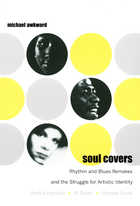 Soul Covers: Rhythm and Blues Remakes and the Struggle for Artistic Identity (Aretha Franklin, Al Green, Phoebe Snow)
Michael Awkward
Duke University Press, 2007 Soul Covers is an engaging look at how three very different rhythm and blues performers—Aretha Franklin, Al Green, and Phoebe Snow—used cover songs to negotiate questions of artistic, racial, and personal authenticity. Through close readings of song lyrics and the performers’ statements about their lives and work, the literary critic Michael Awkward traces how Franklin, Green, and Snow crafted their own musical identities partly by taking up songs associated with artists such as Dinah Washington, Hank Williams, Willie Nelson, George Gershwin, Billie Holiday, and the Supremes. Awkward sees Franklin’s early album Unforgettable: A Tribute to Dinah Washington, released shortly after Washington’s death in 1964, as an attempt by a struggling young singer to replace her idol as the acknowledged queen of the black female vocal tradition. He contends that Green’s album Call Me (1973) reveals the performer’s attempt to achieve formal coherence by uniting seemingly irreconcilable aspects of his personal history, including his career in popular music and his religious yearnings, as well as his sense of himself as both a cosmopolitan black artist and a forlorn country boy. Turning to Snow’s album Second Childhood (1976), Awkward suggests that through covers of blues and soul songs, Snow, a white Jewish woman from New York, explored what it means for non-black enthusiasts to perform works considered by many to be black cultural productions. The only book-length examination of the role of remakes in American popular music, Soul Covers is itself a refreshing new take on the lives and work of three established soul artists.
 "The Soul Exceeds Its Circumstances": The Later Poetry of Seamus Heaney
Eugene O'Brien
University of Notre Dame Press, 2016 "The Soul Exceeds its Circumstances": The Later Poetry of Seamus Heaney brings together sixteen of the most prominent scholars who have written on Seamus Heaney to examine the Nobel prize-winner’s later poetry from a variety of critical and theoretical perspectives. While a great deal of attention has been devoted to Heaney’s early and middle poems—the Bog Poems in particular—this book focuses on the poetry collected in Heaney's Seeing Things (1991), The Spirit Level (1996), Electric Light (2001), District and Circle (2006), and Human Chain (2010) as a thematically connected set of writings. The starting point of the essays in this collection is that these later poems can be grouped in terms of style, theme, approach, and intertextuality. They develop themes that were apparent in Heaney’s earlier work, but they also break with these themes and address issues that are radically different from those of the earlier collections.
The essays are divided into five sections, focusing on ideas of death, the later style, translation and transnational poetics, luminous things and gifts, and usual and unusual spaces. A number of the contributors see Heaney as stressing the literary over the actual and as always looking at the interstices and positions of liminality and complexity. His use of literary references in his later poetry exemplifies his search for literary avatars against whom he can test his own ideas and with whom he can enter into an aesthetic and ethical dialogue. The essayists cover a great deal of Heaney’s debts to classical and modern literature—in the original languages and in translations—and demonstrate the degree to which the streets on which Heaney walked and wrote were two-way: he was influenced by Virgil, Petrarch, Milosz, Wordsworth, Keats, Rilke and others and, in turn, had an impact on contemporary poets. This remarkable collection will appeal to scholars and literary critics, undergraduates as well as graduate students, and to the many general readers of Heaney's poetry.
"The scope and remit of 'The Soul Exceeds Its Circumstances' position it to make a welcome and timely contribution to scholarship on Seamus Heaney, whose death in 2013 brought to an end over five decades of creative output. Eugene O'Brien's decision to devote a collection of essays to the later poetry thus promises to fill a gap in 'Heaney Studies,' extending coverage and suggesting some new directions in critical methodology." —Jason David Hall, University of Exeter
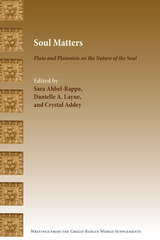 Soul Matters: Plato and Platonists on the Nature of the Soul
Sara Ahbel-Rappe
SBL Press, 2023 Platonic discourses concerning the soul are incredibly rich and multitiered. Plato's own diverse and disparate arguments and images offer competing accounts of how we are to understand the nature of the soul. Consequently, it should come as no surprise that the accounts of Platonists who engage Plato’s dialogues are often riddled with questions. This volume takes up the theories of well-known philosophers and theologians, including Plato, Plotinus, Proclus, the emperor Julian, and Origen, as well as lesser-known but equally important figures in a collection of essays on topics such as transmigration of the soul, the nature of the Platonist enlightenment experience, soul and gender, pagan ritual practices, Christian and pagan differences about the soul, mental health and illness, and many other topics. Contributors include Crystal Addey, Sara Ahbel-Rappe, Dirk Baltzly, Robert Berchman, Jay Bregman, Luc Brisson, Kevin Corrigan, John Dillon, John F. Finamore, Lloyd P. Gerson, Dorian Gieseler Greenbaum, Elizabeth Hill, Sarah Klitenic Wear, Danielle A. Layne, Ilaria L. E. Ramelli, Gregory Shaw, Svetla Slaveva-Griffine, Suzanne Stern-Gillet, Harold Tarrant, Van Tu, and John D. Turner.
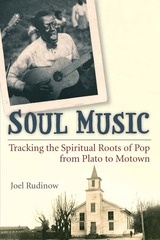 Soul Music: Tracking the Spiritual Roots of Pop from Plato to Motown
Joel Rudinow
University of Michigan Press, 2010 "Exceptionally illuminating and philosophically sophisticated."
---Ted Cohen, Professor of Philosophy, University of Chicago "In this audacious and long-awaited book, Joel Rudinow takes seriously a range of interrelated issues that most music theorizing is embarrassed to tackle. People often ask me about music and spirituality. With Soul Music, I can finally recommend a book that offers genuine philosophical insight into the topic."
---Theodore Gracyk, Professor of Philosophy, Minnesota State University Moorhead The idea is as strange as it is commonplace---that the "soul" in soul music is more than just a name, that somehow the music truly taps into something essential rooted in the spiritual notion of the soul itself. Or is it strange? From the civil rights movement and beyond, soul music has played a key, indisputable role in moments of national healing. Of course, American popular music has long been embroiled in controversies over its spiritual purity (or lack thereof). But why? However easy it might seem to dismiss these ideas and debates as quaint and merely symbolic, they persist. In Soul Music: Tracking the Spiritual Roots of Pop from Plato to Motown, Joel Rudinow, a philosopher of music, takes these peculiar notions and exposes them to serious scrutiny. How, Rudinow asks, does music truly work upon the soul, individually and collectively? And what does it mean to say that music can be spiritually therapeutic or toxic? This illuminating, meditative exploration leads from the metaphysical idea of the soul to the legend of Robert Johnson to the philosophies of Plato and Leo Strauss to the history of race and racism in American popular culture to current clinical practices of music therapy. Joel Rudinow teaches in the Philosophy and Humanities Departments at Santa Rosa Junior College and is the coauthor of Invitation to Critical Thinking and the coeditor of Ethics and Values in the Information Age.
The Soul of a Patriot
Evgeny Popov, translated from the Russian by Robert Porter
Northwestern University Press, 1994 One of the liveliest novels to come out of Russia in recent years, The Soul of a Patriot is, on the surface, a series of amusing letters written at the death of Leonid Brezhnev. The fictional Evgeny Popov's account of his family history becomes a rambunctious portrayal of the lives of ordinary Russians from the revolution to Brezhnev's death. As Popov pokes fun at every aspect of Russian culture and tradition, layer upon layer of satire turn convention inside out.
Freely parodying conformist Russian writing, this novel takes its lead as much from Sterne and Diderot as from the brilliant Russian satirist Mikhail Zoshchenko. In the offhand witticisms and jaunty humor speaks the spirit that survived the "era of stagnation" of Soviet literature.
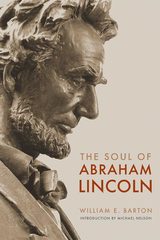 The Soul of Abraham Lincoln
William E. Barton. Introduction by Michael Nelson
University of Illinois Press, 2005 Modern secularists have been reluctant to recognize Abraham Lincoln's deep spirituality, in spite of the fact that he was often known as "Father Abraham" and has been described as one of the most deeply religious presidents the country has ever seen. Yet for all of his familiarity with the Bible, his invocation of Providence, and of the Almighty, he did not actively participate in a church or lend his name and authority to a denomination. After more than fifty years of hagiographic and contradictory accounts of Abraham Lincoln's life, William Barton stepped boldly into the bedlam of claims and counterclaims about Lincoln's religion. Armed with an enormous collection of Lincoln materials and his own strict evidentiary rules, Barton worked to avoid partisan politicking over Lincoln's legacy and instead to simply "lay bare the facts." To enable a better examination of the vexed questions surrounding Lincoln's faith and religious principles, Barton gathered Lincoln's most important writing and speeches about religion, and topically and chronologically assembled testimonies by his friends, family, and associates, about the most important and most debated issues. This volume, Barton's first and most important work on Lincoln, is introduced by Michael Nelson who provides a history of the literature on Lincoln's religion, the historical context of Barton's writing, and the details of the method that made Barton's approach to this American icon such a distinctive success.
The Soul of Anime: Collaborative Creativity and Japan's Media Success Story
Ian Condry
Duke University Press, 2013 In The Soul of Anime, Ian Condry explores the emergence of anime, Japanese animated film and television, as a global cultural phenomenon. Drawing on ethnographic research, including interviews with artists at some of Tokyo's leading animation studios—such as Madhouse, Gonzo, Aniplex, and Studio Ghibli—Condry discusses how anime's fictional characters and worlds become platforms for collaborative creativity. He argues that the global success of Japanese animation has grown out of a collective social energy that operates across industries—including those that produce film, television, manga (comic books), and toys and other licensed merchandise—and connects fans to the creators of anime. For Condry, this collective social energy is the soul of anime.
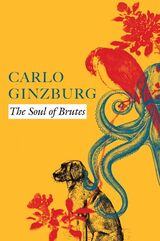 The Soul of Brutes
Carlo Ginzburg
Seagull Books, 2022 A collection of diverse yet interconnected essays from one of the world’s most respected historians.
Carlo Ginzburg has been at the forefront of the discipline of microhistory ever since his earliest works were published to great acclaim in the 1970s. The Soul of Brutes brings together four of Ginzburg’s recent scintillating essays and lectures that testify to the diversity of his thoughts on history and philosophy.
“Civilization and Barbarism” resurrects a sixteenth-century debate between two thinkers in Spain about the humanness, or lack thereof, of Native Americans, and highlights the influence of classical thinkers, from Herodotus to Aristotle, and the iterations and interpretations through which their writings have traversed down to the Cinquecento. In “The Soul of Brutes” Ginzburg traces the genealogy of the debate on the rationality of animals and the limits of their imagination, from Plutarch and Aristotle to sixteenth-century thinkers like Pietro Pomponazzi and Girolamo Rorario. Following Montaigne, he provokes, are we to beasts as they seem to us? In “Calvino, Manzoni and the Grey Zone,” Carlo Ginzburg pithily writes about the mental dialogue between Holocaust survivor Primo Levi and two Italians who profoundly influenced Levi’s search for these “unexplored pockets of exception”—his contemporary Italo Calvino and the nineteenth-century novelist and philosopher Alessandro Manzoni. And finally, in “Schema and Bias”, he probes whether the historian can clearly see into the past, peering through the layers of bias, which include their own prejudices, or if relativism is the only path.
With several beautifully reproduced color illustrations, The Soul of Brutes will interest not only scholars of history, philosophy, and art, but also general intellectual readers.
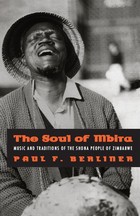 The Soul of Mbira: Music and Traditions of the Shona People of Zimbabwe
Paul F. Berliner
University of Chicago Press, 1993 This sensitive, scholarly portrayal of Shona musicians and the African Musical tradition is highly engaging and comprehensive in its range of data. Paul Berliner provides the complete cultural context for the music and an intimate, precise account of the meaning of the instrument and its music.
"Paul Berliner's The Soul of Mbira is probably the best ethnography ever written about an African musical tradition. It is a complete classic . . . . I know of no other instrument with the range of the mbira, and the book is equal to the instrument."—John Chernoff
"[The Soul of Mbira] illustrates the fact that Shona mbira music in its beauty, subtlety, and virtuosity demands the same kind of respect that we might hold for any other classical music."—David Reck, Parabola
"The book is a model of ethnomusicological thinking and investigation and it suggests a specific way of approaching a complex socio-musical system."—John Baily, Popular Music
"When next someone asks 'What is ethnomusicology?' or 'What do ethnomusicologists do?' I shall suggest this book. . . . This is a landmark in ethnomusicological literature. Berliner succeeds in conveying both the joy that goes with mbira playing and the mystic relationship between the player and his instrument. In short, this is humanized ethnomusicology."—K.A. Gourlay, Ethnomusicology
Soul of the Documentary: Framing, Expression, Ethics
Ilona Hongisto
Amsterdam University Press, 2016 Soul of the Documentary offers a groundbreaking new approach to documentary cinema. Ilona Hongisto stirs current thinking by suggesting that the work of documentary films is not reducible to representing what already exists. By close-reading a diverse body of films - from The Last Bolshevik to Grey Gardens - Hongisto shows how documentary cinema intervenes in the real by framing it and creatively contributes to its perpetual unfolding. The emphasis on framing brings new urgency to the documentary tradition and its objectives, and provokes significant novel possibilities for thinking about the documentary's ethical and political potentials in the contemporary world.
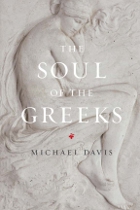 The Soul of the Greeks: An Inquiry
Michael Davis
University of Chicago Press, 2011 The understanding of the soul in the West has been profoundly shaped by Christianity, and its influence can be seen in certain assumptions often made about the soul: that, for example, if it does exist, it is separable from the body, free, immortal, and potentially pure. The ancient Greeks, however, conceived of the soul quite differently. In this ambitious new work, Michael Davis analyzes works by Homer, Herodotus, Euripides, Plato, and Aristotle to reveal how the ancient Greeks portrayed and understood what he calls “the fully human soul.”
Beginning with Homer’s Iliad, Davis lays out the tension within the soul of Achilles between immortality and life. He then turns to Aristotle’s De Anima and Nicomachean Ethics to explore the consequences of the problem of Achilles across the whole range of the soul’s activity. Moving to Herodotus and Euripides, Davis considers the former’s portrayal of the two extremes of culture—one rooted in stability and tradition, the other in freedom and motion—and explores how they mark the limits of character. Davis then shows how Helen and Iphigeneia among the Taurians serve to provide dramatic examples of Herodotus’s extreme cultures and their consequences for the soul. The book returns to philosophy in the final part, plumbing several Platonic dialogues—the Republic, Cleitophon, Hipparchus, Phaedrus, Euthyphro, and Symposium—to understand the soul’s imperfection in relation to law, justice, tyranny, eros, the gods, and philosophy itself. Davis concludes with Plato’s presentation of the soul of Socrates as self-aware and nontragic, even if it is necessarily alienated and divided against itself.
The Soul of the Greeks thus begins with the imperfect soul as it is manifested in Achilles’ heroic, but tragic, longing and concludes with its nontragic and fuller philosophic expression in the soul of Socrates. But, far from being a historical survey, it is instead a brilliant meditation on what lies at the heart of being human.
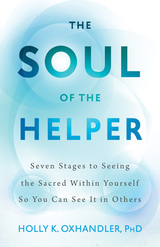 The Soul of the Helper: Seven Stages to Seeing the Sacred within Yourself So You Can See It in Others
Holly K. Oxhandler
Templeton Press, 2025 There are many kinds of helpers in our world, the caregivers among us. They are the social workers who serve the vulnerable, the nurses and doctors who treat the ill, the teachers who instruct the young, the first responders who rescue the imperiled, the faith leaders who comfort the congregation, the volunteers who support the community. And whether or not it is our professional calling, each of us is likely to serve as a caregiver at some point in our lives, as a parent raising a child, for instance, or as a loved one caring for an aging relative. These and many other efforts to serve are among the most noble pursuits we can imagine, but they come with a danger worth recognizing.
In their devotion to the well-being of others, caregivers routinely put their own well-being last and can unintentionally burn themselves out physically, emotionally, and spiritually. Their self-neglect, paired alongside a deep desire to help others, has the potential to stir up feelings of anger and resentment, leading to a sense of guilt and shame. They often believe that if they were to grant themselves any rest or grace, they would be at risk of failing in their duty.
In The Soul of the Helper, Dr. Holly K. Oxhandler shows caregivers and fellow helpers a more self-compassionate way to cope with their overwhelming responsibilities and to attend to their own needs, particularly when it comes to their mental health and spiritual journey. She invites them to pause and realize that if they let their personal resources run dry, they cannot possibly care for others as fully as they wish. In fact, their efforts are likely to cause more harm than good.
With a background in spiritually-integrated mental health, Dr. Oxhandler teaches helpers a seven-step process to slow down and reconnect with the stillness within themselves. It is in this space of stillness that Oxhandler guides helpers to reconnect with the “sacred spark” within their soul. By allowing themselves to enter that stillness, caregivers will recognize that they, too, are worthy of care. And with that realization, they will see anew the sacred spark that dwells inside everyone else, especially within those they’re helping.
As a social worker, researcher, and person of faith, Dr. Oxhandler writes in a warm and welcoming style, shares many relatable stories, and widens her scope to include believers of all faiths and spiritual traditions. Her book is for caregivers everywhere who sense the sacred spark within them saying, in effect: “Come to me, all you who are weary and burdened, and I will give you rest.”
The Soul of the Person: A Contemporary Philosophical Psychology
Adrian J. Reimers
Catholic University of America Press, 2006 The Soul of the Person is a contemporary account of the metaphysical basis for the transcendence of the human person. In being directed toward truth, beauty, and goodness, the human person transcends the physical order and reveals himself as a spiritual, as well as a material, being.
The Soul of the Stranger: Reading God and Torah from a Transgender Perspective
Joy Ladin
Brandeis University Press, 2018 Reading some of the best-known Torah stories through the lens of transgender experience, Joy Ladin explores fundamental questions about how religious texts, traditions, and the understanding of God can be enriched by transgender perspectives, and how the Torah and trans lives can illuminate one another. Drawing on her own experience and lifelong reading practice, Ladin shows how the Torah, a collection of ancient texts that assume human beings are either male or female, speaks both to practical transgender concerns, such as marginalization, and to the challenges of living without a body or social role that renders one intelligible to others—challenges that can help us understand a God who defies all human categories. These creative, evocative readings transform our understanding of the Torah’s portrayals of God, humanity, and relationships between them.
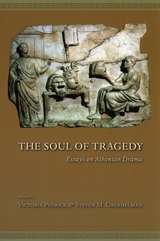 The Soul of Tragedy: Essays on Athenian Drama
Edited by Victoria Pedrick and Steven M. Oberhelman
University of Chicago Press, 2005 The Soul of Tragedy brings together top scholars to offer a wide range of perspectives on Greek tragedy. The collection pays homage to this ancient, enduring theatrical and literary genre by offering a deep exploration into the oldest form of dramatic expression. It is a reminder that, for all their years, these dramas still have much to teach us.
Exemplary of the nature and scope of this book, the essays range from Simon Goldhill's comparative study of music, gender, and culture to Martha Nussbaum's inspection of "the comic soul." Through the critical lenses of psychoanalysis, gender, social history, and philology, this compilation looks at Greek tragedy's peculiar power to illuminate the workings of the human soul. Structures of tragic meaning, the relationship between character desire and spectator experience, and investigations of tragedy's extraordinary preoccupation with gender reveal the form's emotional core and explain its rapid ascent through the hierarchy of cultural practices in classical Greece. The Soul of Tragedy is a celebration and a model of collaboration that will be essential reading for scholars in classics, literature, and drama.
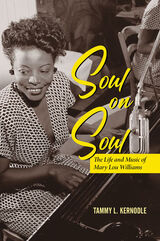 Soul on Soul: The Life and Music of Mary Lou Williams
Tammy L. Kernodle
University of Illinois Press, 2020 First time in paperback and e-book! The jazz musician-composer-arranger Mary Lou Williams spent her sixty-year career working in—and stretching beyond—a dizzying range of musical styles. Her integration of classical music into her works helped expand jazz's compositional language. Her generosity made her a valued friend and mentor to the likes of Thelonious Monk, Charlie Parker, and Dizzy Gillespie. Her late-in-life flowering of faith saw her embrace a spiritual jazz oriented toward advancing the civil rights struggle and helping wounded souls. Tammy L. Kernodle details Williams's life in music against the backdrop of controversies over women's place in jazz and bitter arguments over the music's evolution. Williams repeatedly asserted her artistic and personal independence to carve out a place despite widespread bafflement that a woman exhibited such genius. Embracing Williams's contradictions and complexities, Kernodle also explores a personal life troubled by lukewarm professional acceptance, loneliness, relentless poverty, bad business deals, and difficult marriages. In-depth and epic in scope, Soul on Soul restores a pioneering African American woman to her rightful place in jazz history.
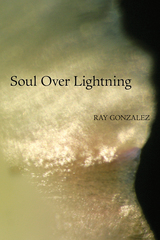 Soul Over Lightning
Ray Gonzalez
University of Arizona Press, 2014 In this collection, which the poet calls his “rebirth in the search for home,” Ray Gonzalez expresses the gentle, humble intelligence that has made him a leading voice in Latino letters. He shares with the reader the voice of a soul searcher who has passed through middle age and still vibrates with passion for the world.
Gonzalez shows his profound respect for other people, species, places, elements, and histories. Illusions to religious imagery knock against those of the natural world—feathers and rocks—creating a complex tableau of objects and feelings. Employing the image-driven approach for which he is renowned, in this collection Gonzalez is taut, using poetics that are fully formed. Even as the poems weave together highly intellectual, refined subject matter, the language remains accessible.
The book is divided into three parts. The first section offers Gonzalez’s most personal work yet, meditating on aging, forgetting, and the reader. The next section is more outward looking, as Gonzalez takes on great artists from both Old World and New World traditions. Finally, in the last section, Gonzalez opens himself up, reflecting in very personal ways on the everyday, such as a return from a hospital stay or a visit to the doctor.
Soul Over Lightning weaves together elements of Native American and Chicano/a narratives, inspired by the landscape of the desert Southwest and the experience of living on the border. It offers a new supernarrative that lifts spirits and yet remains grounded in a timeless search for home and truth.
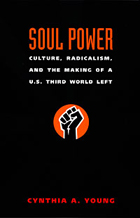 Soul Power: Culture, Radicalism, and the Making of a U.S. Third World Left
Cynthia A. Young
Duke University Press, 2006 Soul Power is a cultural history of those whom Cynthia A. Young calls “U.S. Third World Leftists,” activists of color who appropriated theories and strategies from Third World anticolonial struggles in their fight for social and economic justice in the United States during the “long 1960s.” Nearly thirty countries in Africa, Asia, and Latin America declared formal independence in the 1960s alone. Arguing that the significance of this wave of decolonization to U.S. activists has been vastly underestimated, Young describes how literature, films, ideologies, and political movements that originated in the Third World were absorbed by U.S. activists of color. She shows how these transnational influences were then used to forge alliances, create new vocabularies and aesthetic forms, and describe race, class, and gender oppression in the United States in compelling terms. Young analyzes a range of U.S. figures and organizations, examining how each deployed Third World discourse toward various cultural and political ends. She considers a trip that LeRoi Jones, Harold Cruse, and Robert F. Williams made to Cuba in 1960; traces key intellectual influences on Angela Y. Davis’s writing; and reveals the early history of the hospital workers’ 1199 union as a model of U.S. Third World activism. She investigates Newsreel, a late 1960s activist documentary film movement, and its successor, Third World Newsreel, which produced a seminal 1972 film on the Attica prison rebellion. She also considers the L.A. Rebellion, a group of African and African American artists who made films about conditions in the Watts neighborhood of Los Angeles. By demonstrating the breadth, vitality, and legacy of the work of U.S. Third World Leftists, Soul Power firmly establishes their crucial place in the history of twentieth-century American struggles for social change.
 Soul Says: On Recent Poetry
Helen Vendler
Harvard University Press, 1995 “Vendler again demonstrates—if proof were needed—why she is the finest poetry reviewer in the country.”
—Boston Globe
The renowned critic of Stevens, Keats, and Herbert turns an incisive gaze to her contemporaries, from Louise Glück to Rita Dove.
Lyric poetry, says the incomparable Helen Vendler, is defined by immediacy. If the novel aspires to represent life in all its complexity, with characters woven into their manifold historical and sociological contexts, lyric captures the human being in the here and now: as a fragment, an eruption, or a “set of warring passions independent of time and space.” Fiction constructs selfhood, but poetry gives us the soul.
Drawing its title from a poem by Jorie Graham, Soul Says collects twenty-one of Vendler’s best essays on the force, beauty, and formal intricacies of late-twentieth-century verse. Whether meditating on Graham’s roving cinematography of the mind, anatomizing the inversions of classical elegy in Allen Ginsberg’s “Kaddish,” or exploring Charles Simic’s sinister landscapes, Vendler makes difficult poetry accessible and helps readers appreciate the depth and richness of even the simplest texts. Through her perceptive eyes we see how lyric poetry, pulsing with musicality, uses arrangement, pacing, and metaphor to illuminate the hidden corners of inner life.
Inner life cannot be entirely disentangled from the history: Rita Dove cannot write as if she were unencumbered by her life as a Black woman in America any more than Seamus Heaney can avoid his experience as a Northern Irishman who lived through the Troubles. But Vendler’s painstaking attention to form—Dove’s angular stanzas, Heaney’s organicism—brilliantly reveals how such great poets exceed the sum of their biographical parts. To read their poetry is to see their lives transfigured, and, in the process, to reconsider our own.
 Soul Says: On Recent Poetry
Helen Vendler
Harvard University Press “Vendler again demonstrates—if proof were needed—why she is the finest poetry reviewer in the country.”
—Boston Globe
The renowned critic of Stevens, Keats, and Herbert turns an incisive gaze to her contemporaries, from Louise Glück to Rita Dove.
Lyric poetry, says the incomparable Helen Vendler, is defined by immediacy. If the novel aspires to represent life in all its complexity, with characters woven into their manifold historical and sociological contexts, lyric captures the human being in the here and now: as a fragment, an eruption, or a “set of warring passions independent of time and space.” Fiction constructs selfhood, but poetry gives us the soul.
Drawing its title from a poem by Jorie Graham, Soul Says collects twenty-one of Vendler’s best essays on the force, beauty, and formal intricacies of late-twentieth-century verse. Whether meditating on Graham’s roving cinematography of the mind, anatomizing the inversions of classical elegy in Allen Ginsberg’s “Kaddish,” or exploring Charles Simic’s sinister landscapes, Vendler makes difficult poetry accessible and helps readers appreciate the depth and richness of even the simplest texts. Through her perceptive eyes we see how lyric poetry, pulsing with musicality, uses arrangement, pacing, and metaphor to illuminate the hidden corners of inner life.
Inner life cannot be entirely disentangled from the history: Rita Dove cannot write as if she were unencumbered by her life as a Black woman in America any more than Seamus Heaney can avoid his experience as a Northern Irishman who lived through the Troubles. But Vendler’s painstaking attention to form—Dove’s angular stanzas, Heaney’s organicism—brilliantly reveals how such great poets exceed the sum of their biographical parts. To read their poetry is to see their lives transfigured, and, in the process, to reconsider our own.
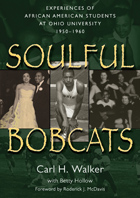 Soulful Bobcats: Experiences of African American Students at Ohio University, 1950–1960
Carl H. Walker
Ohio University Press, 2013 During the 1950s, when less than 20 percent of American high school graduates attended college, a group of ambitious young African Americans enrolled at Ohio University, a predominantly white school in Athens, Ohio. Because they were a tiny, barely tolerated minority, they banded together, supported each other, and formed lasting bonds. Years later, at a series of “Soulful Reunions,” they recalled the joys and challenges of living on a white campus before the civil rights era, and eighteen of them decided to share their stories.
The authors of the eighteen autobiographical sketches in Soulful Bobcats were a diverse group. They were athletes, rhetoricians, musicians, and actresses; they aspired to professions in the military, business, education, government, architecture, and the arts. Some grew up in poor families, while others enjoyed the comforts of the middle class. But they had several things in common. They all came from families that believed education was important. They had been taught to avoid trouble, to persist despite setbacks, and to expect to encounter prejudice and even discrimination.
The authors vividly describe instances in which they were humiliated—by other students, by professors, or by townspeople—as well as the few occasions when violence seemed inevitable. In addition, they describe their “first,” including becoming the first African American students at Ohio University to be awarded scholarships for their prowess in football, basketball, track, and tennis; the first to compete for titles such as “Mr. Fraternity” or “Queen of the Military Ball”; the first to appear in theatrical performances alongside their white schoolmates. They also tell of their success in providing a social life for themselves by organizing two Greek letter fraternities and one sorority, holding their own off-campus dances, and joining the few campus organizations that were open to them. Above all, their stories speak to a resilience that allowed these “Soulful Bobcats” to learn from their experiences at Ohio University, to engage in meaningful careers, and to lead rich, fulfilling lives.
 The Souls of Black Folk: Essays and Sketches
W.E.B. Du Bois
University of Massachusetts Press, 2018 In honor of the 150th anniversary of W.E. B. Du Bois's birth in Great Barrington, Massachusetts, the University of Massachusetts Library has prepared a new edition of Du Bois's classic, The Souls of Black Folk. Originally published in 1903, Souls introduced a number of now-canonical terms into the American conversation about race, among them double-consciousness, and it sounded the ominous warning that "the problem of the Twentieth Century is the problem of the color-line." In a new introduction, Shawn Leigh Alexander outlines the historical context of this critical work and provides rare documents from the special collections archive at the Du Bois Library at the University of Massachusetts Amherst.
Unlike Du Bois's more scholarly work, Souls blends narrative and autobiographical essays, and it continues to reach a wide domestic and international readership. This moving homage to black life and culture and its sharp economic and historical critique are more important than ever, resonating with today's unequivocal demand that Black Lives Matter in the twenty-first century.
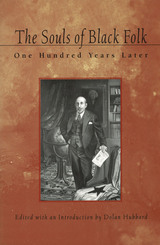 The Souls of Black Folk: One Hundred Years Later
Edited & Intro by Dolan Hubbard
University of Missouri Press, 2003
Published in 1903, The Souls of Black Folk by W. E. B. Du Bois was a landmark achievement, moving American philosophy beyond the structures of pragmatism and positivism as it addressed new questions about American social and political history. One hundred years later, Du Bois's classic has clearly resonated through twentieth-century thought, offering a critical perspective on the political, social, and economic barriers imposed upon blacks in America.
This important new book is the first collection of essays to examine sustainedly The Souls of Black Folk from a variety of disciplines: aesthetics, art history, classics, communications, history, literature, music, political science, and psychology. The authors establish a call-and-response rhythm as they examine the critical depth of a text that has had a profound influence on African American intellectual history. Implicitly, the essays show how The Souls of Black Folk has influenced teaching practices and suggested alternative ways of teaching that create a pedagogy of inclusion.
The Souls of Black Folk remains a text pivotal in the American understanding of the black experience, and this important collection investigates this masterpiece from fresh directions. Scholars, teachers, and students of American studies and African American studies will find this remarkable work an essential overview of a book that changed the course of American intellectual history.
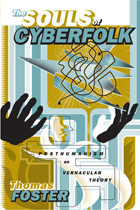 The Souls of Cyberfolk: Posthumanism as Vernacular Theory
Thomas Foster
University of Minnesota Press, 2005 In The Souls of Cyberfolk, Thomas Foster traces the transformation of cyberpunk from a literary movement into a multimedia cultural phenomenon. He examines how cyberpunk defined a framework for thinking about the cultural implications of new technologies - a framework flexible enough to incorporate issues of gender, queer sexualities, and ethnic and racial differences as well as developments in nationalist models of citizenship and global economic flows. Beginning with William Gibson's paradigmatic text Neuromancer, and continuing through the works of Maureen McHugh, Melissa Scott, Neal Stephenson, Greg Egan, and Ken MacLeod, Foster measures cyberpunk's reach into social and philosophical movements (the Extropy Institute), commercial art (Hajime Sorayama's gynoids or sexy robot illustrations), comic books (Deathlok), film (Robocop), and music video (from Billy Idol's Cyberpunk album). The central challenge that cyberpunk poses for cultural critics, Foster argues, is to understand what happens when the technological denaturalization of physical embodiment becomes the norm. This question acquires urgency as the focus of his book moves beyond the typical technocultural concerns with gender and sexuality to consider race and models of citizenship - a shift that constitutes one of the book's most original contributions to scholarship on the topic.
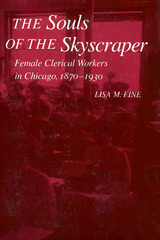 Souls Of Skyscraper
Lisa Fine
Temple University Press, 1990 "Fine's book adds to the debate over why the gender composition of the clerical labor force changed so quickly and completely."
--American Studies
During the late nineteenth century, a visitor to the city of Chicago would have looked in wonder at the many strange, new, and exciting sights: the nation's first skyscrapers, the bustling and congested streets, the large department stores, and the business girls. The Souls of the Skyscraper documents and explains the transformation of clerical work from a male to a female occupation amidst the industrialization and urbanization of the United States. Using literary, organizational, statistical, cinematic, and archival evidence primarily from Chicago, Lisa M. Fine explains the historical reasons why clerical work became women's work.
The appearance of the female clerical worker in the business office signaled two on-going developments: the simple shift of women entering and dominating office jobs that were previously held by men, and the changing gender definition of clerical work. This new opportunity for employment provided women with relatively well-paying and respectable jobs, even though the prestige of the clerical positions was devalued as more women were hired. While economic forces contributed to this process of occupational change, the vocational education of women, the availability of various types of social services such as group homes (e.g. the Eleanor Residences), and the evolving image of the working girl in the popular culture encouraged women to seek clerical positions.
Fine explores the realms where the gender definition of clerical work was discussed and negotiated: among technical experts, in the popular culture, in the prescriptions and actions of civic leaders, and in the private worlds of clerical workers themselves. In revealing the dynamics of change within the clerical sector, she enhances our understanding of occupational sex-typing.
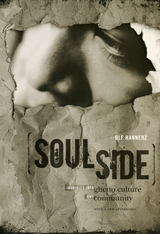 Soulside: Inquiries into Ghetto Culture and Community
Ulf Hannerz
University of Chicago Press, 2004 For an outsider, the prospect of blending into the fabric of an urban African American ghetto might be an intimidating one. But for a Scandinavian scholar, the idea of getting to know one of Washington DC's toughest neighborhoods from the inside during the racially tense, late 1960s, could well have seemed impossible. Conducting fieldwork in and around Winston Street, Ulf Hannerz did just that. Soulside details the everyday lives of the ghetto inhabitants he observed and participated with during this period, revealing their beliefs and expectations and the diversity of their life styles.
Originally published 35 years ago, Soulside became an urban anthropological classic. The book helped to dispel many false impressions about ghetto life and questioned the idea, precipitated in the influential Moynihan Report and in notions of a "culture of poverty," that the poor had chosen to lead the lives they do. Raising central moral and political questions about American society in a turbulent period, Soulside became an example of public engagement in anthropology. In a new afterword, Ulf Hannerz discusses the book's place in the debates of the time and its relevance to current arguments in anthropology.
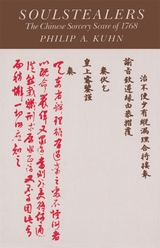 Soulstealers: The Chinese Sorcery Scare of 1768
Philip A. Kuhn
Harvard University Press, 1990 Midway through the reign of the Ch’ien-lung emperor, Hungli, in the most prosperous period of China’s last imperial dynasty, mass hysteria broke out among the common people. It was feared that sorcerers were roaming the land, clipping off the ends of men’s queues (the braids worn by royal decree), and chanting magical incantations over them in order to steal the souls of their owners. In a fascinating chronicle of this epidemic of fear and the official prosecution of soulstealers that ensued, Philip Kuhn provides an intimate glimpse into the world of eighteenth-century China.
Kuhn weaves his exploration of the sorcery cases with a survey of the social and economic history of the era. Drawing on a rich repository of documents found in the imperial archives, he presents in detail the harrowing interrogations of the accused—a ragtag assortment of vagabonds, beggars, and roving clergy—conducted under torture by provincial magistrates. In tracing the panic’s spread from peasant hut to imperial court, Kuhn unmasks the political menace lurking behind the queue-clipping scare as well as the complex of folk beliefs that lay beneath popular fears of sorcery.
Kuhn shows how the campaign against sorcery provides insight into the period’s social structure and ethnic tensions, the relationship between monarch and bureaucrat, and the inner workings of the state. Whatever its intended purposes, the author argues, the campaign offered Hungli a splendid chance to force his provincial chiefs to crack down on local officials, to reinforce his personal supremacy over top bureaucrats, and to restate the norms of official behavior.
This wide-ranging narrative depicts life in imperial China as it was actually lived, often in the participants’ own words. Soulstealers offers a compelling portrait of the Chinese people—from peasant to emperor—and of the human condition.
Soulstepping: African American Step Shows
Elizabeth C. Fine
University of Illinois Press, 2002 Stepping is a complex performance that melds folk traditions with popular culture and involves synchronized percussive movement, singing, speaking, chanting, and drama. Elizabeth C. Fine's stunningly elaborate and vibrant portrayal of the cultural politics of stepping draws on interviews with individuals on college campuses and steppers and stepping coaches from high schools, community groups, churches, and dance organizations. Soulstepping is the first book to document the history of stepping, its roots in African and African American culture, and its transformation by churches, schools, and social groups into a powerful tool for instilling group identity and community involvement.
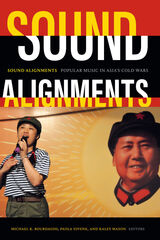 Sound Alignments: Popular Music in Asia's Cold Wars
Michael K. Bourdaghs, Paola Iovene, and Kaley Mason, editors
Duke University Press, 2021 In Sound Alignments, a transnational group of scholars explores the myriad forms of popular music that circulated across Asia during the Cold War. Challenging the conventional alignments and periodizations of Western cultural histories of the Cold War, they trace the routes of popular music, examining how it took on new meanings and significance as it traveled across Asia, from India to Indonesia, Hong Kong to South Korea, China to Japan. From studies of how popular musical styles from the Americas and Europe were adapted to meet local exigencies to how socialist-bloc and nonaligned Cold War organizations facilitated the circulation of popular music throughout the region, the contributors outline how music forged and challenged alliances, revolutions, and countercultures. They also show how the Cold War's legacy shapes contemporary culture, particularly in the ways 1990s and 2000s J-pop and K-pop are rooted in American attempts to foster economic exchange in East Asia in the 1960s.Throughout, Sound Alignments demonstrates that the experiences of the Cold War in Asia were as diverse and dynamic as the music heard and performed in it.
Contributors. Marié Abe, Michael K. Bourdaghs, Paola Iovene, Nisha Kommattam, Jennifer Lindsay, Kaley Mason, Anna Schultz, Hyunjoon Shin, C. J. W.-L. Wee, Hon-Lun (Helan) Yang, Christine R. Yano, Qian Zhang
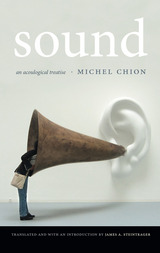 Sound: An Acoulogical Treatise
Michel Chion
Duke University Press, 2016 First published in French in 1998, revised in 2010, and appearing here in English for the first time, Michel Chion's Sound addresses the philosophical, interpretive, and practical questions that inform our encounters with sound. Chion considers how cultural institutions privilege some sounds above others and how spurious distinctions between noise and sound guide the ways we hear and value certain sounds. He critiques the tenacious tendency to understand sounds in relation to their sources and advocates "acousmatic" listening—listening without visual access to a sound’s cause—to disentangle ourselves from auditory habits and prejudices. Yet sound can no more be reduced to mere perceptual phenomena than encapsulated in the sciences of acoustics and physiology. As Chion reminds us and explores in depth, a wide range of linguistic, sensory, cultural, institutional, and media- and technologically-specific factors interact with and shape sonic experiences. Interrogating these interactions, Chion stimulates us to think about how we might open our ears to new sounds, become more nuanced and informed listeners, and more fully understand the links between how we hear and what we do.
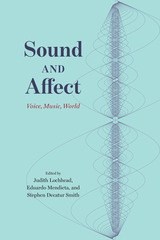 Sound and Affect: Voice, Music, World
Edited by Judith Lochhead, Eduardo Mendieta, and Stephen Decatur Smith
University of Chicago Press, 2021 There is no place on earth that does not echo with the near or distant sounds of human activity. More than half of humanity lives in cities, meaning the daily soundtrack of our lives is filled with sound—whether it be sonorous, harmonious, melodic, syncopated, discordant, cacophonous, or even screeching. This new anthology aims to explore how humans are placed in certain affective attitudes and dispositions by the music, sounds, and noises that envelop us.
Sound and Affect maps a new territory for inquiry at the intersection of music, philosophy, affect theory, and sound studies. The essays in this volume consider objects and experiences marked by the correlation of sound and affect, in music and beyond: the voice, as it speaks, stutters, cries, or sings; music, whether vocal, instrumental, or machine-made; and our sonic environments, whether natural or artificial, and how they provoke responses in us. Far from being stable, correlations of sound and affect are influenced and even determined by factors as diverse as race, class, gender, and social and political experience. Examining these factors is key to the project, which gathers contributions from a cross-disciplinary roster of scholars, including both established and new voices. This agenda-setting collection will prove indispensable to anyone interested in innovative approaches to the study of sound and its many intersections with affect and the emotions.
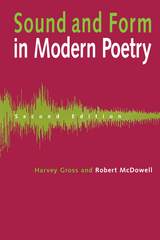 Sound and Form in Modern Poetry: Second Edition
Harvey Gross and Robert McDowell
University of Michigan Press, 1996 Why are poems important? What do people mean when they use the word prosody? How does a poem read and sound? How does a poem's shape--its form--help to create its meaning? Sound and Form in Modern Poetry provides useful answers to these questions for readers of poetry. Through careful attention to the poems of modern masters, the book offers an accessible guide to the way today's poems really work, and to the way they are linked in style to poems of earlier times.
Poet, critic, and editor Robert McDowell has updated this classic text in the light of the poetic and critical developments of the last three decades. Segments on Dickinson, Robinson, Frost, Jeffers, and Lowell, among other poets, have been greatly expanded, and Ashbery, Creeley, Ginsberg, Hall, Kees, Kumin, Levertov, Levine, O'Hara, Plath, Rich, Simpson, and Wilbur added, among others. The epilogue discusses a new generation of poets whose works will likely be read well into the next century-- among others, Thomas M. Disch, Rita Dove, Dana Gioia, Emily Grosholz, Mark Jarman, Molly Peacock, Gjertrud Schnackenberg, Timothy Steele, Mary Swander, and Marilyn Nelson Waniek.
Over the last ten years, the most inspiring topic of conversation and argument among poets and their readers has been the resurgence of narrative and traditional forms. The new Sound and Form in Modern Poetry is a seminal text in this discussion, examining not only this movement but all of the important developments (Dadaism, Surrealism, Imagism, Language Poetry, and the Confessional School) that have defined our poetry in the twentieth century and have set the stage for poetry's continued life in the twenty-first. The original Sound and Form in Modern Poetry enjoyed extensive classroom use as a text; the revised version promises to be even more accessible, and more essential, for years to come.
The late Harvey Gross was Professor of Comparative Literature, State University of New York at Stony Brook.
Robert McDowell is publisher and editor of Story Line Press, and is also poet, critic, translator, fiction writer, and essayist.
 Sound and Scent in the Garden
D. Fairchild Ruggles
Harvard University Press While we often approach gardens as things to be seen—thus engaging the rational, intellectual part of the human brain—Sound and Scent in the Garden explores the more elusive experiences of sound and smell. These senses are important dimensions of garden design and performance and often have a powerful effect on the human body, yet they may also be ephemeral and difficult to study.
The contributors to the volume explore the sensory experience of gardens specifically as places where people encounter landscape in a staged manner, as a result of intentional design. How do the senses shape the experience of those places? In what ways are plants, gardens, and landscapes produced so as to stimulate the senses? What evidence do we have of historical sensory experiences? What is lost when we forget to acknowledge the sensory environment of the past or simply overlook its traces?
The volume demonstrates a wide variety of approaches to apply to the study of sensory history and illuminates this important dimension of the experience of gardens—past and present, East and West.
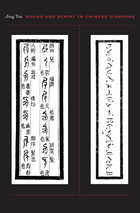 Sound and Script in Chinese Diaspora
Jing Tsu
Harvard University Press, 2010 What happens when language wars are not about hurling insults or quibbling over meanings, but are waged in the physical sounds and shapes of language itself?
Native and foreign speakers, mother tongues and national languages, have jostled for distinction throughout the modern period. The fight for global dominance between the English and Chinese languages opens into historical battles over the control of the medium through standardization, technology, bilingualism, pronunciation, and literature in the Sinophone world. Encounters between global languages, as well as the internal tensions between Mandarin and other Chinese dialects, present a dynamic, interconnected picture of languages on the move.
In Sound and Script in Chinese Diaspora, Jing Tsu explores the new global language trade, arguing that it aims at more sophisticated ways of exerting influence besides simply wielding knuckles of power. Through an analysis of the different relationships between language standardization, technologies of writing, and modern Chinese literature around the world from the nineteenth century to the present, this study transforms how we understand the power of language in migration and how that is changing the terms of cultural dominance. Drawing from an unusual array of archival sources, this study cuts across the usual China-West divide and puts its finger on the pulse of a pending supranational world under “literary governance.”
Sound and Sentiment: Birds, Weeping, Poetics, and Song in Kaluli Expression, 3rd edition with a new introduction by the author
Steven Feld
Duke University Press, 2012 This thirtieth anniversary edition of Sound and Sentiment makes Steven Feld's landmark, field-defining book available to a new generation of scholars and students. A sensory ethnography set in the rain forest of Papua New Guinea, among the Kaluli people of Bosavi, Sound and Sentiment introduced the anthropology of sound, or the cultural study of sound. After it was first published in 1982, a second edition, incorporating additional field research and a new postscript, was released in 1990. The third edition includes all of the material from the first two editions, along with a substantial new introduction in which Feld discusses Bosavi's recent history and reflects on the challenges it poses for contemporary theory and representation.
 Sound and Silence: My Experience with China and Literature
Yan Lianke
Duke University Press, 2024 Yan Lianke is a world-renowned author of novels, short stories, and essays whose provocative and nuanced writing explores the reality of everyday life in contemporary China. In Sound and Silence, Yan compares his literary project to a blind man carrying a flashlight whose role is to help others perceive the darkness that surrounds them. Often described as China’s most censored author, Yan reflects candidly on literary censorship in contemporary China. He outlines the Chinese state’s project of national amnesia that suppresses memories of past crises and social traumas. Although being banned in China is often a selling point in foreign markets, Yan argues that there is no requisite correlation between censorship and literary quality. Among other topics, Yan also examines the impact of American literature on Chinese literature in the 1980s and 1990s. Encapsulating his perspectives on life, writing, and literary history, Sound and Silence includes an introduction by translator Carlos Rojas and an afterword by Yan.
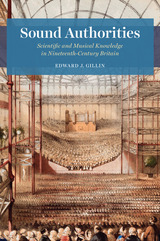 Sound Authorities: Scientific and Musical Knowledge in Nineteenth-Century Britain
Edward J. Gillin
University of Chicago Press, 2021 Sound Authorities shows how experiences of music and sound played a crucial role in nineteenth-century scientific inquiry in Britain.
In Sound Authorities, Edward J. Gillin focuses on hearing and aurality in Victorian Britain, claiming that the development of the natural sciences in this era cannot be understood without attending to the study of sound and music.
During this time, scientific practitioners attempted to fashion themselves as authorities on sonorous phenomena, coming into conflict with traditional musical elites as well as religious bodies. Gillin pays attention to sound in both musical and nonmusical contexts, specifically the cacophony of British industrialization. Sound Authorities begins with the place of acoustics in early nineteenth-century London, examining scientific exhibitions, lectures, spectacles, workshops, laboratories, and showrooms. He goes on to explore how mathematicians mobilized sound in their understanding of natural laws and their vision of a harmonious ordered universe. In closing, Gillin delves into the era’s religious and metaphysical debates over the place of music (and humanity) in nature, the relationship between music and the divine, and the tensions between spiritualist understandings of sound and scientific ones.
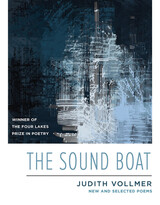 The Sound Boat: New and Selected Poems
Judith Vollmer
University of Wisconsin Press, 2022 Judith Vollmer’s sixth collection explores human voices and geographies, stories and mysteries, and natural phenomena inside urban spaces. Her lyrical narratives, character portraits, locational investigations, and choral fragments often emerge from physical objects and from green and/or ruined cityscapes. Vollmer’s home city, Pittsburgh, and its sister-locations within Italy and Poland, undergird her attention to orientation and perception at work in her poems’ acutely visual studies. Featuring twenty-one new and fifty-seven selected poems from her earlier volumes— The Apollonia Poems, The Water Books, Reactor, The Door Open to the Fire, and Level Green— The Sound Boat reveals Vollmer’s devotion to examining place and space to uncover poetry that touches emotions related to wandering physical and emotional realms: some familial and deeply personal, some unknowable. Old city, I’ve come East for your long day and endless night:
down in the street, between the turtle fountain and the iron head
the party shouts and sings, sweats and snakes, swells into a throb
or momentum of sound.
—Excerpt from “The Sound Boat”
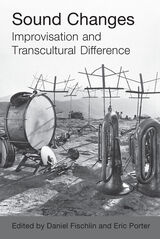 Sound Changes: Improvisation and Transcultural Difference
Daniel Fischlin and Eric Porter, Editors
University of Michigan Press, 2021 Sound Changes responds to a need in improvisation studies for more work that addresses the diversity of global improvisatory practices and argues that by beginning to understand the particular, material experiences of sonic realities that are different from our own, we can address the host of other factors that are imparted or sublimated in performance. These factors range from the intimate affect associated with a particular performer’s capacity to generate a distinctive “voicing,” or the addition of an unexpected sonic intervention only possible with one particular configuration of players in a specific space and time. Through a series of case studies drawn from Africa, Asia, the Americas, and Oceania, Sound Changes offers readers an introduction to a range of musical expressions across the globe in which improvisation plays a key role and the book demonstrates that improvisation is a vital site for the production of emergent social relationships and meanings. As it does this work, Sound Changes situates the increasingly transcultural dimensions of improvised music in relation to emergent networks and technologies, changing patterns of migration and immigration, shifts in the political economy of music, and other social, cultural, and economic factors. Improvisation studies is a recently developed, but growing, interdisciplinary field of study. The discipline—which has only truly come into focus in the early part of the twenty-first century—has been building a lexicon of key terms and developing assumptions about core practices. Yet, the full breadth of improvisatory practices has remained a vexed, if not impossibly ambitious, subject of study. This volume offers a step forward in the movement away from critical tendencies that tend to homogenize and reduce practices and vocabularies in the name of the familiar.
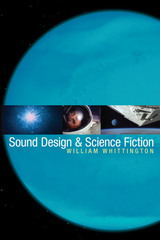 Sound Design and Science Fiction
By William Whittington
University of Texas Press, 2007 Sound is half the picture, and since the 1960s, film sound not only has rivaled the innovative imagery of contemporary Hollywood cinema, but in some ways has surpassed it in status and privilege because of the emergence of sound design. This in-depth study by William Whittington considers the evolution of sound design not only through cultural and technological developments during the last four decades, but also through the attitudes and expectations of filmgoers. Fans of recent blockbuster films, in particular science fiction films, have come to expect a more advanced and refined degree of film sound use, which has changed the way they experience and understand spectacle and storytelling in contemporary cinema. The book covers recent science fiction cinema in rich and compelling detail, providing a new sounding of familiar films, while offering insights into the constructed nature of cinematic sound design. This is accomplished by examining the formal elements and historical context of sound production in movies to better appreciate how a film sound track is conceived and presented.Whittington focuses on seminal science fiction films that have made specific advances in film sound, including 2001: A Space Odyssey, THX 1138, Star Wars, Alien, Blade Runner (original version and director's cut), Terminator 2: Judgment Day and The Matrix trilogy and games—milestones of the entertainment industry's technological and aesthetic advancements with sound. Setting itself apart from other works, the book illustrates through accessible detail and compelling examples how swiftly such advancements in film sound aesthetics and technology have influenced recent science fiction cinema, and examines how these changes correlate to the history, theory, and practice of contemporary Hollywood filmmaking.
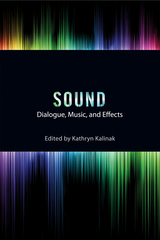 Sound: Dialogue, Music, and Effects
Kalinak, Kathryn
Rutgers University Press, 2015 Sound has always been an integral component of the moviegoing experience. Even during the so-called “silent era,” motion pictures were regularly accompanied by live music, lectures, and sound effects. Today, whether we listen to movies in booming Dolby theaters or on tiny laptop speakers, sonic elements hold our attention and guide our emotional responses. Yet few of us are fully aware of the tremendous collaborative work, involving both artistry and technical wizardry, required to create that cinematic soundscape.
Sound, the latest book in the Behind the Silver Screen series, introduces key concepts, seminal moments, and pivotal figures in the development of cinematic sound. Each of the book’s six chapters cover a different era in the history of Hollywood, from silent films to the digital age, and each is written by an expert in that period. Together, the book’s contributors are able to explore a remarkable range of past and present film industry practices, from the hiring of elocution coaches to the marketing of soundtrack records.
Not only does the collection highlight the achievements of renowned sound designers and film composers like Ben Burtt and John Williams, it also honors the unsung workers whose inventions, artistry, and performances have shaped the soundscapes of many notable movies. After you read Sound, you’ll never see—or hear—movies in quite the same way.
Sound is a volume in the Behind the Silver Screen series—other titles in the series include Acting; Animation; Art Direction and Production Design; Cinematography; Costume, Makeup, and Hair; Directing; Editing and Special Visual Effects; Producing; and Screenwriting.
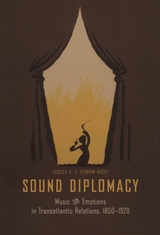 Sound Diplomacy: Music and Emotions in Transatlantic Relations, 1850-1920
Jessica C. E. Gienow-Hecht
University of Chicago Press, 2009 The German-American relationship was special long before the Cold War; it was rooted not simply in political actions, but also long-term traditions of cultural exchange that date back to the nineteenth century. Between 1850 and 1910, the United States was a rising star in the international arena, and several European nations sought to strengthen their ties to the republic by championing their own cultures in America. While France capitalized on its art and Britain on its social ties and literature, Germany promoted its particular breed of classical music. Delving into a treasure trove of archives that document cross-cultural interactions between America and Germany, Jessica Gienow-Hecht retraces these efforts to export culture as an instrument of nongovernmental diplomacy, paying particular attention to the role of conductors, and uncovers the remarkable history of the musician as a cultural symbol of German cosmopolitanism. Considered sexually attractive and emotionally expressive, German players and conductors acted as an army of informal ambassadors for their home country, and Gienow-Hecht argues that their popularity in the United States paved the way for an emotional elective affinity that survived broken treaties and several wars and continues to the present.
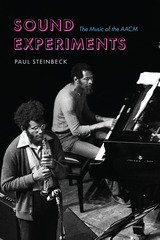 Sound Experiments: The Music of the AACM
Paul Steinbeck
University of Chicago Press, 2022 A groundbreaking study of the trailblazing music of Chicago’s AACM, a leader in the world of jazz and experimental music.
Founded on Chicago’s South Side in 1965 and still thriving today, the Association for the Advancement of Creative Musicians (AACM) is the most influential collective organization in jazz and experimental music. In Sound Experiments, Paul Steinbeck offers an in-depth historical and musical investigation of the collective, analyzing individual performances and formal innovations in captivating detail. He pays particular attention to compositions by Muhal Richard Abrams and Roscoe Mitchell, the Association’s leading figures, as well as Anthony Braxton, George Lewis (and his famous computer-music experiment, Voyager), Wadada Leo Smith, and Henry Threadgill, along with younger AACM members such as Mike Reed, Tomeka Reid, and Nicole Mitchell.
Sound Experiments represents a sonic history, spanning six decades, that affords insight not only into the individuals who created this music but also into an astonishing collective aesthetic. This aesthetic was uniquely grounded in nurturing communal ties across generations, as well as a commitment to experimentalism. The AACM’s compositions broke down the barriers between jazz and experimental music and made essential contributions to African American expression more broadly. Steinbeck shows how the creators of these extraordinary pieces pioneered novel approaches to instrumentation, notation, conducting, musical form, and technology, creating new soundscapes in contemporary music.
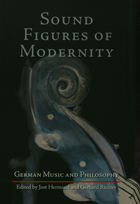 Sound Figures of Modernity: German Music and Philosophy
Edited by Jost Hermand and Gerhard Richter
University of Wisconsin Press, 2006 The rich conceptual and experiential relays between music and philosophy—echoes of what Theodor W. Adorno once called Klangfiguren, or "sound figures"—resonate with heightened intensity during the period of modernity that extends from early German Idealism to the Critical Theory of the Frankfurt School. This volume traces the political, historical, and philosophical trajectories of a specifically German tradition in which thinkers take recourse to music, both as an aesthetic practice and as the object of their speculative work.
The contributors examine the texts of such highly influential writers and thinkers as Schelling, Schopenhauer, Nietzsche, Bloch, Mann, Adorno, and Lukács in relation to individual composers including Beethoven, Wagner, Schönberg, and Eisler. Their explorations of the complexities that arise in conceptualizing music as a mode of representation and philosophy as a mode of aesthetic practice thematize the ways in which the fields of music and philosophy are altered when either attempts to express itself in terms defined by the other.
Contributors: Albrecht Betz, Lydia Goehr, Beatrice Hanssen, Jost Hermand, David Farrell Krell, Ludger Lütkehaus, Margaret Moore, Rebekah Pryor Paré, Gerhard Richter, Hans Rudolf Vaget, Samuel Weber
Sound Fury: Poems
Mark Levine
University of Iowa Press, 2022 Throughout Sound Fury, poems by metaphysician Robert Herrick are refashioned into phantasmagorical oddities of likeness and difference. Figures from the fringes of popular imagination—Zane Grey, Robinson Crusoe, Porfirio Díaz—surface as cobbled-together avatars on the theme of identity. Brilliantly asserting the necessity of humane and resistant modes of speech against the vapid sounds and enforced silences of orthodoxy, Sound Fury finds the poet “Now, in our former state/ In our current one/ In stately procession,” venturing forth in a world “where things of questionable being go.”
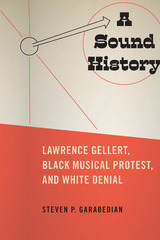 A Sound History: Lawrence Gellert, Black Musical Protest, and White Denial
Steven P. Garabedian
University of Massachusetts Press, 2020 Lawrence Gellert has long been a mysterious figure in American folk and blues studies, gaining prominence in the left-wing folk revival of the 1930s for his fieldwork in the U.S. South. A “lean, straggly-haired New Yorker,” as Time magazine called him, Gellert was an independent music collector, without formal training, credentials, or affiliation. At a time of institutionalized suppression, he worked to introduce white audiences to a tradition of black musical protest that had been denied and overlooked by prior white collectors.
By the folk and blues revival of the 1960s, however, when his work would again seem apt in the context of the civil rights movement, Gellert and his collection of Negro Songs of Protest were a conspicuous absence. A few leading figures in the revival defamed Gellert as a fraud, dismissing his archive of black vernacular protest as a fabrication—an example of left-wing propaganda and white interference. A Sound History is the story of an individual life, an excavation of African American musical resistance and dominant white historiography, and a cultural history of radical possibility and reversal in the defining middle decades of the U.S. twentieth century.
 Sound Ideas: Music, Machines, and Experience
Aden Evens
University of Minnesota Press, 2005 As people from record collectors to file swappers know, the experience of music - making it, marketing it, listening to it - relies heavily on technology. From the viola that amplifies the vibrations of a string to the CD player that turns digital bits into varying voltage, music and technology are deeply intertwined. What was gained - or lost - when compact discs replaced vinyl as the mass-market medium? What unique creative input does the musician bring to the music, and what contribution is made by the instrument? Do digital synthesizers offer unlimited range of sonic potential, or do their push-button interfaces and acoustical models lead to cookie-cutter productions? Through this interrogation of sound and technology, Aden Evens provides an acute consideration of how music becomes sensible, advancing original variations on the themes of creativity and habit, analog and digital technologies, and improvisation and repetition. Evens elegantly and forcefully dissects the paradoxes of digital culture and reveals how technology has profound implications for the phenomenology of art. Sound Ideas reinvents the philosophy of music in a way that encompasses traditional aspects of musicology, avant-garde explorations of music's relation to noise and silence, and the consequences of digitization.
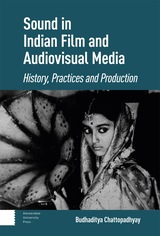 Sound in Indian Film and Audiovisual Media: History, Practices and Production
Budhaditya Chattopadhyay
Amsterdam University Press, 2024 This book is the first ever systematic attempt to study film sound in the Indian subcontinent by artistic research. The book aims to fill the scholarly void on the issues of sound and listening in the Global Souths’ cultures. It develops a comprehensive understanding of the unique sound world of Indian film and audiovisual media through the examination of historical developments of sound from early optical recordings to contemporary digital audio technologies. The book is enriched with a practice-based methodology informed by the author’s own practice and based on extensive conversations with leading sound practitioners in the Indian subcontinent. The book locates an emerging social and spatial awareness in Indian film and media production aided by a creative practice of sound, occurring alongside the traditionally transcendental, oral, and pluriversal approach to listening. By tracing this confluence of tradition and modernity, the book makes valuable contributions to the fields of film history, sound, and media studies.
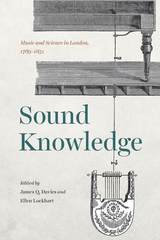 Sound Knowledge: Music and Science in London, 1789-1851
Edited by J. Q. Davies and Ellen Lockhart
University of Chicago Press, 2017 What does it mean to hear scientifically? What does it mean to see musically? This volume uncovers a new side to the long nineteenth century in London, a hidden history in which virtuosic musical entertainment and scientific discovery intersected in remarkable ways.
Sound Knowledge examines how scientific truth was accrued by means of visual and aural experience, and, in turn, how musical knowledge was located in relation to empirical scientific practice. James Q. Davies and Ellen Lockhart gather work by leading scholars to explore a crucial sixty-year period, beginning with Charles Burney’s ambitious General History of Music, a four-volume study of music around the globe, and extending to the Great Exhibition of 1851, where musical instruments were assembled alongside the technologies of science and industry in the immense glass-encased collections of the Crystal Palace. Importantly, as the contributions show, both the power of science and the power of music relied on performance, spectacle, and experiment. Ultimately, this volume sets the stage for a new picture of modern disciplinarity, shining light on an era before the division of aural and visual knowledge.
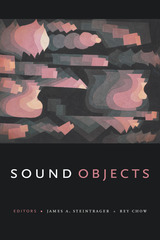 Sound Objects
James A. Steintrager and Rey Chow, editors
Duke University Press, 2019 Is a sound an object, an experience, an event, or a relation? What exactly does the emerging discipline of sound studies study? Sound Objects pursues these questions while exploring how history, culture, and mediation entwine with sound’s elusive objectivity. Examining the genealogy and evolution of the concept of the sound object, the commodification of sound, acousmatic listening, nonhuman sounds, and sound and memory, the contributors not only probe conceptual issues that lie in the forefront of contemporary sonic discussions but also underscore auditory experience as fundamental to sound as a critical enterprise. In so doing, they offer exciting considerations of sound within and beyond its role in meaning, communication, and information and an illuminatingly original theoretical overview of the field of sound studies itself.
Contributors. Georgina Born, Michael Bull, Michel Chion, Rey Chow, John Dack, Veit Erlmann, Brian Kane, Jairo Moreno, John Mowitt, Pooja Rangan, Gavin Steingo, James A. Steintrager, Jonathan Sterne, David Toop
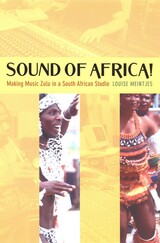 Sound of Africa!: Making Music Zulu in a South African Studio
Louise Meintjes
Duke University Press, 2003 Boosting the bass guitar, blending the vocals, overdubbing percussion while fretting over shoot-outs in the street. Grumbling about a producer, teasing a white engineer, challenging an artist to feel his African beat. Sound of Africa! is a riveting account of the production of a mbaqanga album in a state-of-the-art recording studio in Johannesburg. Made popular internationally by Mahlathini and the Mahotella Queens, mbaqanga's distinctive style features a bass solo voice and soaring harmonies of a female frontline over electric guitar, bass, keyboard, and drumset. Louise Meintjes chronicles the recording and mixing of an album by Izintombi Zesimanje, historically the rival group of the Mahotella Queens. Set in the early 1990s during South Africa’s tumultuous transition from apartheid to democratic rule, Sound of Africa! offers a rare portrait of the music recording process. It tracks the nuanced interplay among South African state controls, the music industry's transnational drive, and the mbaqanga artists' struggles for political, professional, and personal voice. Focusing on the ways artists, producers, and sound engineers collaborate in the studio control room, Meintjes reveals not only how particular mbaqanga sounds are shaped technically, but also how egos and artistic sensibilities and race and ethnicity influence the mix. She analyzes how the turbulent identity politics surrounding Zulu ethnic nationalism impacted mbaqanga artists' decisions in and out of the studio. Conversely, she explores how the global consumption of Afropop and African images fed back into mbaqanga during the recording process. Meintjes is especially attentive to the ways the emotive qualities of timbre (sound quality or tone color) forge complex connections between aesthetic practices and political ideology. Vivid photos by the internationally renowned photographer TJ Lemon further dramatize Meintjes’ ethnography.
The Sound of Dove: Singing in Appalachian Primitive Baptist Churches
Beverly Bush Patterson
University of Illinois Press, 1995 In The Sound of the Dove, Beverly Bush Patterson explores one of the oldest traditions of American religious folksong: unaccompanied congregational singing in the Primitive Baptist churches of Appalachia. Using interviews, field observations, historical research, song transcriptions, and musical analysis, Patterson explores the dynamic relationship between singing and theology in these churches, the genesis of their musical practices, and the unexpectedly significant role of women in their conservative congregations.
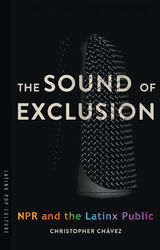 The Sound of Exclusion: NPR and the Latinx Public
Christopher Chávez
University of Arizona Press, 2021 As a network that claims to represent the nation, NPR asserts unique claims about what it means to be American. In The Sound of Exclusion, Christopher Chávez critically examines how National Public Radio conceptualizes the Latinx listener, arguing that NPR employs a number of industry practices that secure its position as a white public space while relegating Latinx listeners to the periphery. These practices are tied to a larger cultural logic. Latinx identity is differentiated from national identity, which can be heard through NPR’s cultivation of an idealized dialect, situating whiteness at its center. Pushing Latinx listeners to the edges of public radio has crucial implications for Latinx participation in civic discourses, as identifying who to include in the “public” audience necessarily involves a process of exclusion.
Chávez analyzes NPR as a historical product that has evolved alongside significant changes in technology, industry practice, and demography. In The Sound of Exclusion, Chávez asks these pressing questions: What kind of news organization was NPR intended to be? What has it become over time? In what ways is it evolving to meet the needs of a nation, in which U.S. Latinxs are becoming an increasingly larger portion of the American public that NPR serves? Informed by more than fifty in-depth interviews conducted with public radio practitioners from all aspects of the business, Chávez addresses how power is enacted in everyday broadcast practices. By interrogating industry practices, we might begin to reimagine NPR as a public good that serves the broad and diverse spectrum of the American public.
 The Sound of Feathers: Attentive Living in a World Beyond Ourselves
Kathryn Gillespie
Duke University Press, 2026 From the rustle of a crow’s wings to the cool touch of moss on a stone wall, to the quiet determination of a worm crossing a sidewalk, The Sound of Feathers invites readers to notice the small wonders of life all around them. These fleeting details hold surprising truths about humanity’s connection to nature, the complex relationships of care and harm in which we are entangled, our responsibilities to other species, and what it means to be fully present in the world. Through vivid storytelling and deeply personal reflections, Kathryn Gillespie invites us to slow down, pay attention, and think differently about our everyday lives so that we might imagine shared futures of flourishing. She urges us to confront the forces that separate us from the natural world and find more compassionate ways of living in harmony with it. Gillespie reminds us that the quiet, often overlooked moments in life are where the most profound insights and connections begin.
 The Sound of Holding Your Breath: Stories
Natalie Sypolt
West Virginia University Press, 2018 The residents of The Sound of Holding Your Breath could be neighbors, sharing the same familiar landscapes of twenty-first-century Appalachia—lake and forest, bridge and church, cemetery and garden, diner and hair salon. They could be your neighbors—average, workaday, each struggling with secrets and losses, entrenched in navigating the complex requirements of family in all its forms. Yet tragedy and violence challenge these unassuming lives: A teenage boy is drawn to his sister’s husband, an EMT searching the lake for a body. A brother, a family, and a community fail to confront the implications of a missing girl. A pregnant widow spends Thanksgiving with her deceased husband’s family. Siblings grapple with the death of their sister-in-law at the hands of their brother. And in the title story, the shame of rape ruptures more than a decade later. Accidents and deaths, cons and cover-ups, abuse and returning veterans—Natalie Sypolt’s characters wrestle with who they are during the most trying situations of their lives.
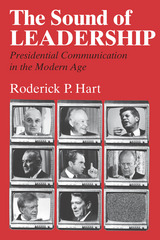 The Sound of Leadership: Presidential Communication in the Modern Age
Roderick P. Hart
University of Chicago Press, 1987 Why did Gerald Ford speak in public once every six hours during 1976? Why did no president spreak in Massachusetts during one ten-year period? Why did Jimmy Carter conduct public ceremonies four times more often than Harry Truman? Why are television viewers two-and-a-half times more likely to see a president speak on the nightly news than to hear him speak?
The Sound of Leadership answers these questions and many more. Based on analysis of nearly 10,000 presidential speeches delivered between 1945 and 1985, this book is the first comprehensive examination of the ways in which presidents Truman through Reagan have used the powers of communication to advance their political goals. This communication revolution has produced, Roderick P. Hart argues, a new form of governance, one in which public speech has come to be taken as political action. Using a rhetorical appraoch, Hart details the features of this new American presidency by carefully examining when and where presidents spoke in public during the last four decades and what they said. Even though presidents have been speaking more and more, Hart reveals, they have been saying less and less. Rather than leading the nation, the modern president usually offers only the hollow "sound" of leadership. Written with great flair and acuteness, The Sound of Leadership will become a standard guide to the voices of modern presidential politics.
The Sound of Light: A History of Gospel Music
Don Cusic
University of Wisconsin Press, 1990 Don Cusic presents gospel music as part of the history of contemporary Christianity. From the psalms of the early Puritans through the hymns of Isaac Watts and the social activism of the Wesleys, gospel music was established in eighteenth-century America. With the camp meetings songs of the Kentucky Revival and the spirituals and hymns that stemmed from the Civil War and beyond, gospel music grew through the nineteenth century and expanded through new technologies in the twentieth century.
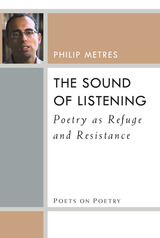 The Sound of Listening: Poetry as Refuge and Resistance
Philip Metres
University of Michigan Press, 2018 Philip Metres stakes a claim for the cultural work that poems can perform—from providing refuge to embodying resistance, from recovering silenced voices to building a more just world, in communities of solitude and solidarity. Gathering a decade of his writing on poetry, he widens our sense of poetry as a way of being in the world, proposing that poems can offer a permeability to marginalized voices and a shelter from the imperial noise and despair that can silence us. The Sound of Listening ranges between expansive surveys of the poetry of 9/11, Arab American poetry, documentary poetry, landscape poetry, installation poetry, and peace poetry; personal explorations of poets such as Adrienne Rich, Khalil Gibran, Lev Rubinstein, and Arseny Tarkovsky; and intimate dialogues with Randa Jarrar, Fady Joudah, and Micah Cavaleri, that illuminate Metres’s practice of listening in his 2015 work, Sand Opera.
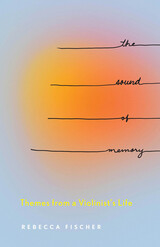 The Sound of Memory: Themes from a Violinist’s Life
Rebecca Fischer
Ohio State University Press, 2022 In The Sound of Memory, concert violinist Rebecca Fischer wrestles with the life of a performing artist in the twenty-first century, the physical and material components of memory, the nature of musical inheritance, and the gifts and pressures of a calling that runs generations deep. From memories of breastfeeding on concert tours, to the surprising ways her body remembers music she heard in the womb, to witnessing her children’s own evolving musicianship, Fischer shares her perspective as the first violinist of the renowned Chiara String Quartet and parent to young people exploring their gender identities amidst social upheaval and a pandemic. As she revisits geographies that have left marks on her life and creative practice over the years, she examines what we owe to our families, our communities, our art, and ourselves—ultimately exhorting us to consider both the individual and communal resonances of artistic expression and the meaning it brings to our shared lives.
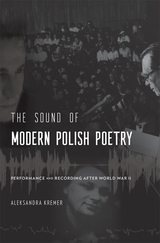 The Sound of Modern Polish Poetry: Performance and Recording after World War II
Aleksandra Kremer
Harvard University Press, 2021 An illuminating new study of modern Polish verse in performance, offering a major reassessment of the roles of poets and poetry in twentieth-century Polish culture.
What’s in a voice? Why record oneself reading a poem that also exists on paper? In recent decades, scholars have sought to answer these questions, giving due credit to the art of poetry performance in the anglophone world. Now Aleksandra Kremer trains a sharp ear on modern Polish poetry, assessing the rising importance of authorial sound recordings during the tumultuous twentieth century in Eastern Europe.
Kremer traces the adoption by key Polish poets of performance practices intimately tied to new media. In Polish hands, tape recording became something different from what it had been in the West, shaped by its distinctive origins behind the Iron Curtain. The Sound of Modern Polish Poetry reconstructs the historical conditions, audio technologies, and personal motivations that informed poetic performances by such luminaries as Czesław Miłosz, Wisława Szymborska, Aleksander Wat, Zbigniew Herbert, Miron Białoszewski, Anna Swir, and Tadeusz Różewicz. Through performances both public and private, prepared and improvised, professional and amateur, these poets tested the possibilities of the physical voice and introduced new poetic practices, reading styles, and genres to the Polish literary scene. Recording became, for these artists, a means of announcing their ambiguous place between worlds.
Kremer’s is a work of criticism as well as recovery, deploying speech-analysis software to shed light on forgotten audio experiments—from poetic “sound postcards,” to unusual home performances, to the final testaments of writer-performers. Collectively, their voices reveal new aesthetics of poetry reading and novel concepts of the poetic self.
The Sound of Mormonism: A Media History of Latter-day Saints
Jared Farmer
Utah State University Press, 2024 The Sound of Mormonism is an annotated and expanded version of the 2023 lecture “Music & the Unspoken Truth”—an homage to the Music and the Spoken Word radio program and a meditation on the relationships between religion, music, vocality, and quietude.
The Arrington Lecture series, established in honor of one of the twentieth-century American West’s most distinguished historians, Leonard Arrington, has become a leading forum for prominent scholars to address topics related to Latter-day Saint history. Utah State University hosts the Leonard J. Arrington Mormon History Lecture Series through the Merrill-Cazier Library’s Special Collections and Archives.
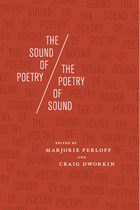 The Sound of Poetry / The Poetry of Sound
Edited by Marjorie Perloff and Craig Dworkin
University of Chicago Press, 2009 Sound—one of the central elements of poetry—finds itself all but ignored in the current discourse on lyric forms. The essays collected here by Marjorie Perloff and Craig Dworkinbreak that critical silence to readdress some of thefundamental connections between poetry and sound—connections that go far beyond traditional metrical studies.
Ranging from medieval Latin lyrics to a cyborg opera, sixteenth-century France to twentieth-century Brazil, romantic ballads to the contemporary avant-garde, the contributors to The Sound of Poetry/The Poetry of Sound explore such subjects as the translatability of lyric sound, the historical and cultural roles of rhyme,the role of sound repetition in novelistic prose, theconnections between “sound poetry” and music, between the visual and the auditory, the role of the body in performance, and the impact of recording technologies on the lyric voice. Along the way, the essaystake on the “ensemble discords” of Maurice Scève’s Délie, Ezra Pound’s use of “Chinese whispers,” the alchemical theology of Hugo Ball’s Dada performances, Jean Cocteau’s modernist radiophonics, and an intercultural account of the poetry reading as a kind of dubbing.
A genuinely comparatist study, The Sound of Poetry/The Poetry of Sound is designed to challenge current preconceptions about what Susan Howe has called “articulations of sound forms in time” as they have transformed the expanded poetic field of the twenty-first century.
The Sound of Rattles and Clappers: A Collection of New California Indian Writing
Edited by Greg Sarris
University of Arizona Press, 1994 In this anthology of poetry and fiction, ten Native Americans of California Indian ancestry illuminate aspects of their respective native cultures in works characterized by a profound love of place and people, as well as by anger over political oppression and social problems
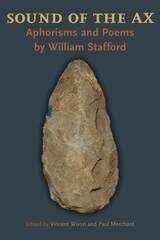 Sound of the Ax: Aphorisms and Poems by William Stafford
Vincent Wixon
University of Pittsburgh Press, 2014 Sound of the Ax brings together for the first time over four hundred aphorisms and twenty-six aphoristic poems by one of America’s most essential poets of the twentieth century. Many readers are familiar with the trenchant nature of William Stafford’s poems, with lines such as “Justice will take us millions of intricate moves” and “Your job is to find what the world is trying to be,” but have never had the opportunity to read a sustained selection from the thousands of wise, witty, and penetrating statements he created in over forty years of daily writing in his journal. In keeping with Stafford’s varied interests, the aphorisms in Sound of the Ax explore many topics—war and peace, involvement, aging, appearances, fear, egotism, writing, nature, animals, suffering, faith, living an ethical life, and so on—with his incisive view. The poems are either made up entirely or primarily aphorisms, and range from the well-known “Things I Learned Last Week” to some never before collected. Readers will find much to enjoy and to think about here, and will return over and over to Sound of the Ax for inspiration, pleasure, and wisdom from an author noted for his integrity and mindful living.
The Sound of the Whistle: Railroads and the State in Meiji Japan
Steven Ericson
Harvard University Press, 1996 In this thorough and detailed study of the development of the Japanese railroad industry during the Meiji period, Steven Ericson explores the economic role of government and the nature of state-business relations during Japan’s modern transformation. Ericson challenges the tendency of current scholarship to minimize the roles of the Japanese government and commercial banks in Meiji industrialization. By providing a fresh perspective on the “strong state/weak state” debate through a detailed analysis of the 1906–1907 railway nationalization, Ericson’s study sheds new light on the Meiji origins of modern Japanese industrial policy and politics, filling a major gap in the available literature on the Meiji political economy.
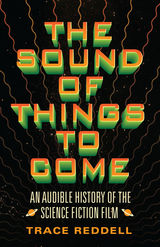 The Sound of Things to Come: An Audible History of the Science Fiction Film
Trace Reddell
University of Minnesota Press, 2018 A groundbreaking approach to sound in sci-fi films offers new ways of construing both sonic innovation and science fiction cinema
Including original readings of classics like The Day the Earth Stood Still, 2001: A Space Odyssey, Star Wars, and Blade Runner, The Sound of Things to Come delivers a comprehensive history of sound in science fiction cinema. Approaching movies as sound objects that combine cinematic apparatus and consciousness, Trace Reddell presents a new theory of sonic innovation in the science fiction film. Reddell assembles a staggering array of movies from sixty years of film history—including classics, blockbusters, B-movies, and documentaries from the United States, Britain, France, Germany, Japan, and the Soviet Union—all in service to his powerful conception of sound making as a speculative activity in its own right. Reddell recasts debates about noise and music, while arguing that sound in the science fiction film provides a medium for alien, unknown, and posthuman sound objects that transform what and how we hear. Avoiding genre criticism’s tendency to obsess over utopias, The Sound of Things to Come draws on film theory, sound studies, and philosophies of technology to advance conversations about the avant-garde, while also opening up opportunities to examine cinematic sounds beyond the screen.
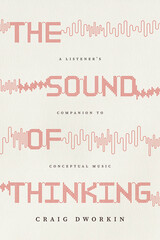 The Sound of Thinking: A Listener's Companion to Conceptual Music
Craig Dworkin
University of Chicago Press, 2026 A lively compendium of musical practices and compositions that upend notions of creativity and expressivity while diversifying our sense of the musical canon.
An artist draws two octaves of pitches randomly from a hat, just enough to set each syllable of the dictionary definition of imprimer (to score, to print). Trawling the internet for cute videos of cats “playing” piano, an artist splices together a complete, note-perfect performance of Arnold Schoenberg’s Opus 11. Half a century after the release of Miles Davis’s album Kind of Blue, a jazz quintet spends months of focused practice to reproduce the original exactly. These performances share a common denominator: absolute fidelity to the outcome of a system. From Marcel Duchamp to Yoko Ono, Steve Reich to Sun Ra, The Sound of Thinking brings together a diverse array of musical or sonic works that are algorithmic, automatic, permutational, procedural, or otherwise structured in contrast to the creative expressivity typically associated with artistic production.
In twenty-six short essays, each keyed to a term that begins with a different letter of the alphabet, Dworkin discusses work composed or performed according to a predetermined rule, transforming artistic creation into a system running its course. The pieces detailed here, drawn from more than a century of musical experimentation, offer a fresh perspective on the history of innovative music by decoupling music from expression and by shunting creativity from the level of organizing sounds to the level of devising a system that can do the organizing. Not only does this book spotlight the critical role of music in twentieth-century conceptual art, but it also identifies previously overlooked links among diverse artists and movements
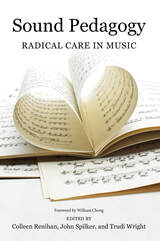 Sound Pedagogy: Radical Care in Music
Edited by Colleen Renihan, John Spilker, and Trudi Wright. Foreword by William Cheng
University of Illinois Press, 2024 Music education today requires an approach rooted in care and kindness that coexists alongside the dismantling of systems that fail to serve our communities in higher education. But, as the essayists in Sound Pedagogy show, the structural aspects of music study in higher education present obstacles to caring and kindness like the entrenched master-student model, a neoliberal individualist and competitive mindset, and classical music’s white patriarchal roots. The editors of this volume curate essays that use a broad definition of care pedagogy, one informed by interdisciplinary scholarship and aimed at providing practical strategies for bringing transformative learning and engaged pedagogies to music classrooms. The contributors draw from personal experience to address issues including radical kindness through universal design; listening to non-human musicality; public musicology as a forum for social justice discourse; and radical approaches to teaching about race through music. Contributors: Molly M. Breckling, William A. Everett, Kate Galloway, Sara Haefeli, Eric Hung, Stephanie Jensen-Moulton, Mark Katz, Nathan A. Langfitt, Matteo Magarotto, Mary Natvig, Frederick A. Peterbark, Laura Moore Pruett, Colleen Renihan, Amanda Christina Soto, John Spilker, Reba A. Wissner, and Trudi Wright
 Sound Reporting, Second Edition: The NPR Guide to Broadcast, Podcast and Digital Journalism
Jerome Socolovsky
University of Chicago Press, 2024 An indispensable guide to audio journalism grounded in NPR’s journalistic values and practices, with tips and insights from its top reporters, hosts, editors, producers, and more.
A lot has changed in media in recent years, but one thing that remains steadfast is National Public Radio’s (NPR) position as a trusted source of news in the United States. Now producing dozens of shows and podcasts, plus livestreams and coverage on other media platforms, NPR is the leading authority on reporting, writing, and delivering audio news and storytelling to today's diverse audiences. In this completely revised guide, audio journalism trainer Jerome Socolovsky offers a look into just how NPR does it, following the same journey a story would from idea to the moment it reaches its listeners.
Based on more than eighty interviews with producers, reporters, editors, hosts, and other NPR staffers, Sound Reporting reveals how stories get pitched; how they are reported, produced, written, edited, voiced, and tailored to multiple media formats; and how shows and podcasts are put together. It begins with a presentation of NPR's values and includes a new chapter on journalist safety, a topic of timely importance. Podcasts, now part of the mainstream of the media universe, are treated alongside traditional programs throughout.
In these pages, the voices of NPR staff offer a glimpse into their profession. Discover how correspondent Ruth Sherlock overcame seemingly insurmountable odds as she raced to the scene of a devastating earthquake in Turkey, the four main ways Ramtin Arablouei incorporates music into podcasts, and how “Weekend Edition” host Ayesha Rascoe touches listeners so deeply she received a pair of homemade potholders in the mail from one of them. Reading this book is like sitting in a room full of top-notch producers, seasoned correspondents, trusted hosts, and rigorous editors—all telling you inspiring stories about their craft to help you learn from their experience.
At a time when the legitimacy and authority of journalism are under critique, transparency into how the news is made is more important than ever. This book offers a fascinating look behind the scenes at a premier public media organization and will be a trusted resource for anyone in or exploring a future in audio journalism.
 Sound Reporting: The NPR Guide to Audio Journalism and Production
Jonathan Kern
University of Chicago Press, 2008 Perhaps you’ve always wondered how public radio gets that smooth, well-crafted sound. Maybe you’re thinking about starting a podcast, and want some tips from the pros. Or maybe storytelling has always been a passion of yours, and you want to learn to do it more effectively. Whatever the case—whether you’re an avid NPR listener or you aspire to create your own audio, or both—Sound Reporting: The NPR Guide to Audio Journalism and Production will give you a rare tour of the world of a professional broadcaster.
Jonathan Kern, who has trained NPR’s on-air staff for years, is a gifted guide, able to narrate a day in the life of a host and lay out the nuts and bolts of production with equal wit and warmth. Along the way, he explains the importance of writing the way you speak, reveals how NPR books guests ranging from world leaders to neighborhood newsmakers, and gives sage advice on everything from proposing stories to editors to maintaining balance and objectivity. Best of all—because NPR wouldn’t be NPR without its array of distinctive voices—lively examples from popular shows and colorful anecdotes from favorite personalities animate each chapter.
As public radio’s audience of millions can attest, NPR’s unique guiding principles and technical expertise combine to connect with listeners like no other medium can. With today’s technologies allowing more people to turn their home computers into broadcast studios, Sound Reporting couldn’t have arrived at a better moment to reveal the secrets behind the story of NPR’s success.
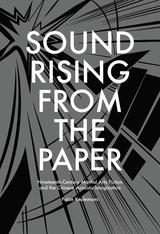 Sound Rising from the Paper: Nineteenth-Century Martial Arts Fiction and the Chinese Acoustic Imagination
Paize Keulemans
Harvard University Press, 2014 Chinese martial arts novels from the late nineteenth century are filled with a host of suggestive sounds. Characters cuss and curse in colorful dialect accents, vendor calls ring out from bustling marketplaces, and martial arts action scenes come to life with the loud clash of swords and the sounds of bodies colliding. What is the purpose of these sounds, and what is their history? In Sound Rising from the Paper, Paize Keulemans answers these questions by critically reexamining the relationship between martial arts novels published in the final decades of the nineteenth century and earlier storyteller manuscripts. He finds that by incorporating, imitating, and sometimes inventing storyteller sounds, these novels turned the text from a silent object into a lively simulacrum of festival atmosphere, thereby transforming the solitary act of reading into the communal sharing of an oral performance. By focusing on the role sound played in late nineteenth-century martial arts fiction, Keulemans offers alternatives to the visual models that have dominated our approach to the study of print culture, the commercialization of textual production, and the construction of the modern reading subject.
 Sound Sense: Living and Learning with Hearing Loss
Sara Laufer Batinovich
Gallaudet University Press, 2011 One out of every eight people between the ages of 18 and 67 in the United States has a hearing loss, estimated as 12 percent of the working-age population. Sound Sense: Living and Learning with Hearing Loss addresses the acute need of these people to function at the highest level in these income-earning years, the longest phase in their lives. In nine pointed chapters, author Sara Laufer Batinovich, who also has lost her hearing, shares her experience and knowledge in turning every challenge into an opportunity to become one’s best self-advocate. Batinovich begins in the workplace, advising on winning a job, keeping it, and developing a long-term career, plus how to reduce stress and establish fulfilling professional relationships with colleagues. She offers tips on communication ranging from having sales people face you for easier speechreading to parsing boarding announcements at airports and play-by-play at ballparks. Her practical handbook also provides step-by-step guidance for getting a hearing aid or a cochlear implant and finding one’s way through prickly insurance claim mazes. Sound Sense features information on finding a service dog, securing legally mandated accommodations for continuing education, tips on exercise and health, and even sensitive suggestions on strengthening personal relationships. Batinovich’s vivacious style and her own anecdotes add an upbeat, genuine sensibility to her book’s value as a positive guide to living with hearing loss.
Sound Sentiment
Peter Kivy
Temple University Press, 1989 The Corded Shell: Reflections on Musical Expression, published in 1980 and now out of print, was concerned with the question of how music comes to have the emotional properties that have been perceived in it and ascribed to it since antiquity. In that book, Peter Kivy argued that music possesses expressive properties, not as powers to arouse emotions in us but, rather, as perceived qualities of the music itself. In Sound Sentiment, he augments his previous work with four entirely new chapters. Incorporating the complete, corrected text of The Corded Shell, Kivy brings his earlier arguments up to date in light of recent work in the field, and discusses and answers various criticisms.
|
|

